Porsche 911 (996) (1997 – 2005) Story & History
Type 996 – The 5th Generation Porsche 911
Premiere: GT1 May 4, 1997 Le Mans test day, Carrera September 11, 1997 IAA Frankfurt Motor Show
The designers were assigned to design the 996-generation 911 in 1993. Working under the head of Style Porsche, Harm Lagaay, were Exterior Designers Pinky Lai and Grant Larson. They first designed the Boxster and then the 996. The 996 promised to become an evolution of the 993 with some new design cues seen on the very cool 1993 Boxster concept car. But…
Porsche AG was financially weak at the time the 993 went on sale, so big hopes were on it. Externally it was the most beautiful 911 ever. But it was also clear, that the 993 cannot be sold forever. The structural body, which had been basically unchanged for the first four generations of the 911, also needed a replacement. First of all, the windscreen angle had to be changed to make the car more aerodynamic (to burn less fuel) and to free the drivers from scratching the bugs off from the upright windscreen, something they had done since the 911 (901) was launched. The turning angle had to be improved – a problem since 964, the result of making the chassis to accept 4WD systems when ordered, and now worsened by the wider wheels that didn’t have the space to turn enough inside the old structural body. The interior ergonomics of the 993 were outdated from day one. The 924, 928, 944 and 968 had excelled with ergonomic cabin for long time, when the 911 still sticked to its interior ergonomics from 1963 – not enough foot room, no support for the elbows.
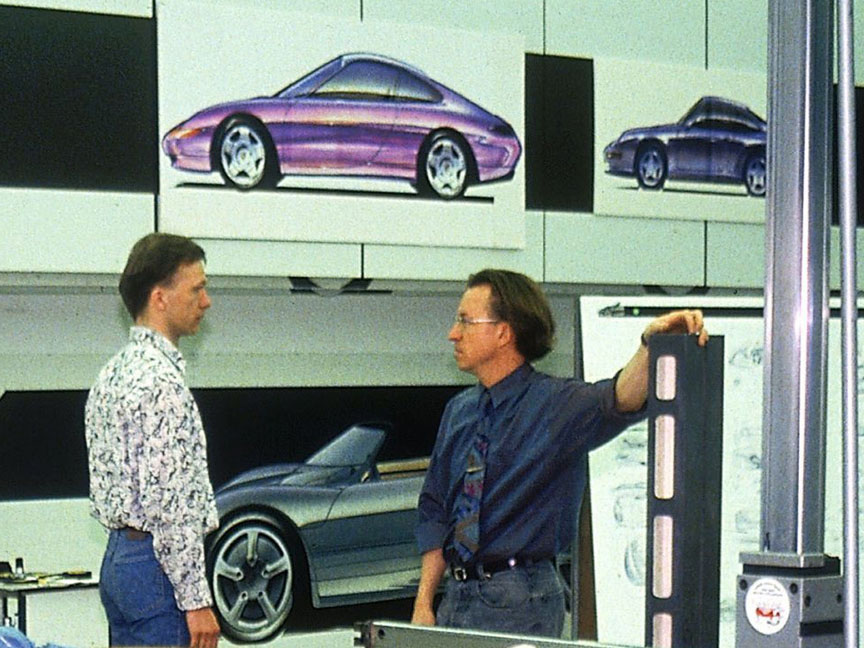
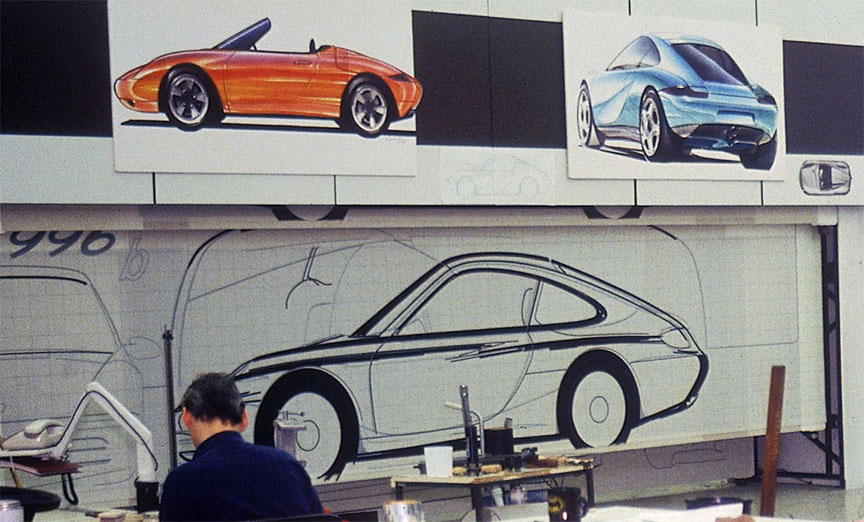
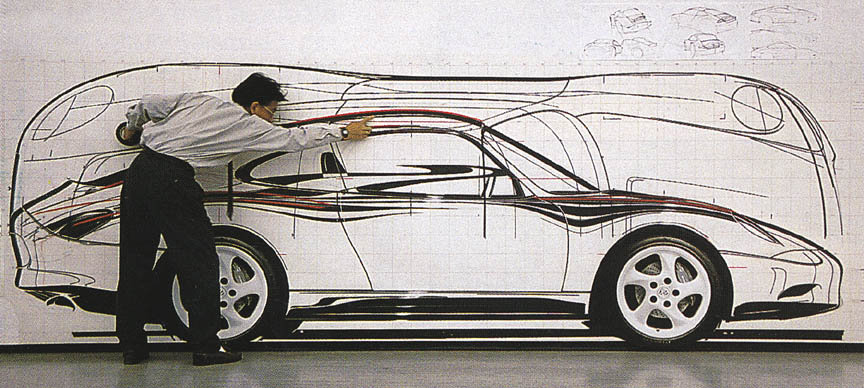
While in 1993 the Boxster concept car had debuted and the 993 was launched, at the same time the 996 was already on the paper. Remember, Porsche was in its history’s worst economic situation, but they had to design and build a completely new 911 (not the 5th generation of the original car!). Although Pinky Lai’s original 996 designs were good, at some point it had to be faced that there’s simply no money to design and produce the 996. Designers voluntarily suggested to cut their wage to keep the jobs at Porsche, some still had to be let go. Drastic cutting happened everywhere. Basically the decision was between no more 911 or a 4-seater rear-engined Boxster as the new 911. It was decided that the 996 will share as much parts with the Boxster as possible. Nothing was left from the initial design of the 996.
The 996 was to receive a completely new engine, fully water-cooled for the first time. Water-cooled heads had been in use in ultra-high-performance Porsches before, but not water-cooled cylinders. The reason for full water-cooling was to have better temperature management as this helped to achieve lower emissions. 4 valves per cylinder were used and this alone required water-cooling. While the 993 had had 3.6 and 3.8-litre engines, with the 4-valve technology a smaller engine could do the job. So, the plan was to go back to 3.2-litre as it had been in the 1980s with the 911 Carrera and especially with the largest engine version of the turbocharged 24-valve 962 racing cars. The first 3.2-litre 24-valve 4-cam watercooled normally aspirated test engines for 996 developed a dissapointing 204 kW. Although it was 20% more with catalyst compared to the G-model Carrera 3.2 European 170 kW version without catalyst, the outgoing 993 Carrera 3.6 had 210 kW and with the 3.8-litre powerkit even 221 kW. To test the watercooled engine, initially it was mounted into a 993 body (with 964 Turbo rear spoiler). Then the 996 prototypes began to form and the 3.2-litre was tested inside the 996. The typical high-pitch 911 engine sound was decreased as the antifreeze quieted down the noises that were emitted by the cylinders in the air-cooled car.
The wheelbase grew significantly from the 993, but not to the level of the mid-engined Boxster.
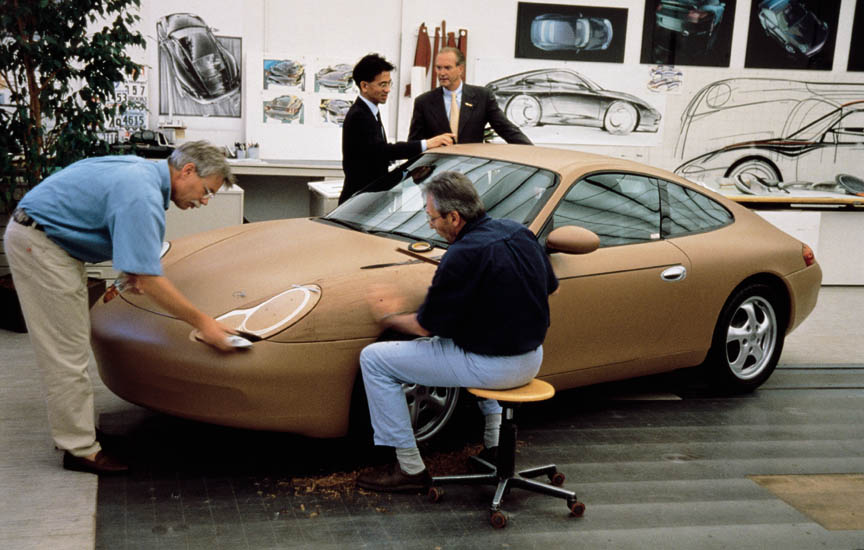
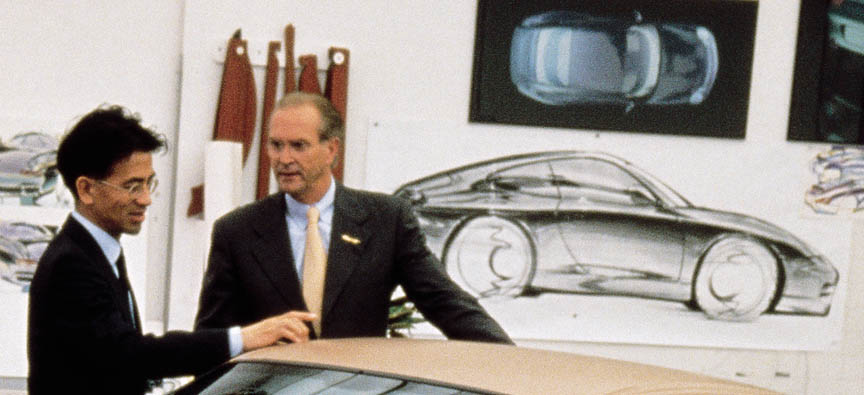
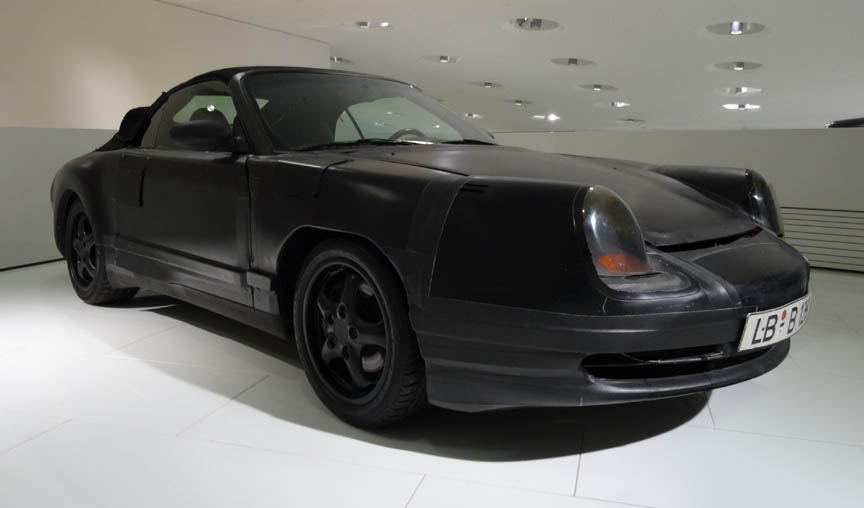
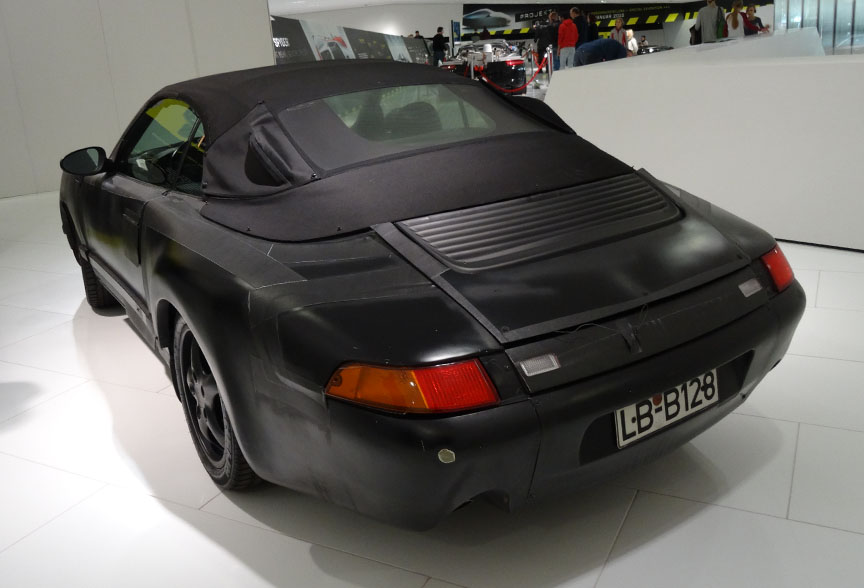
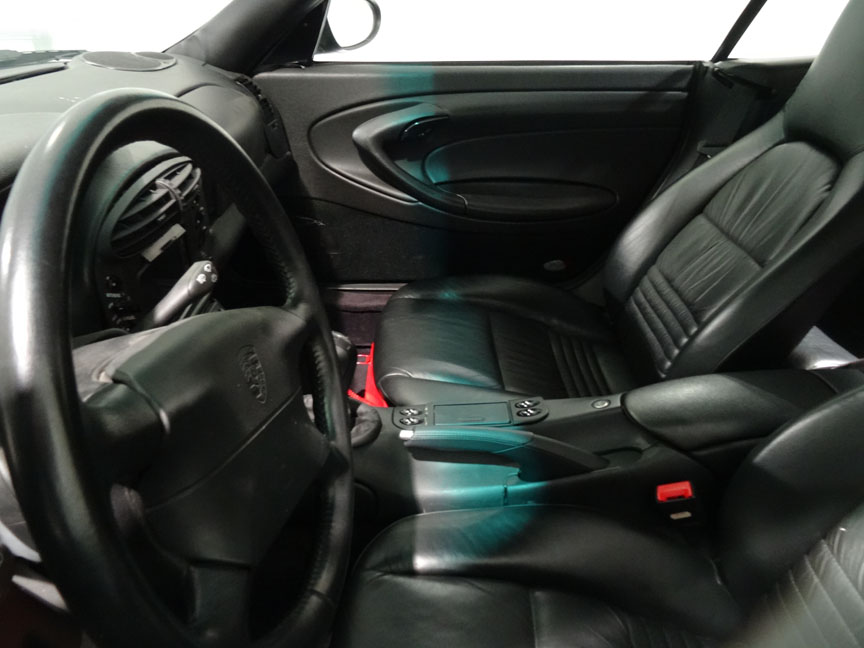
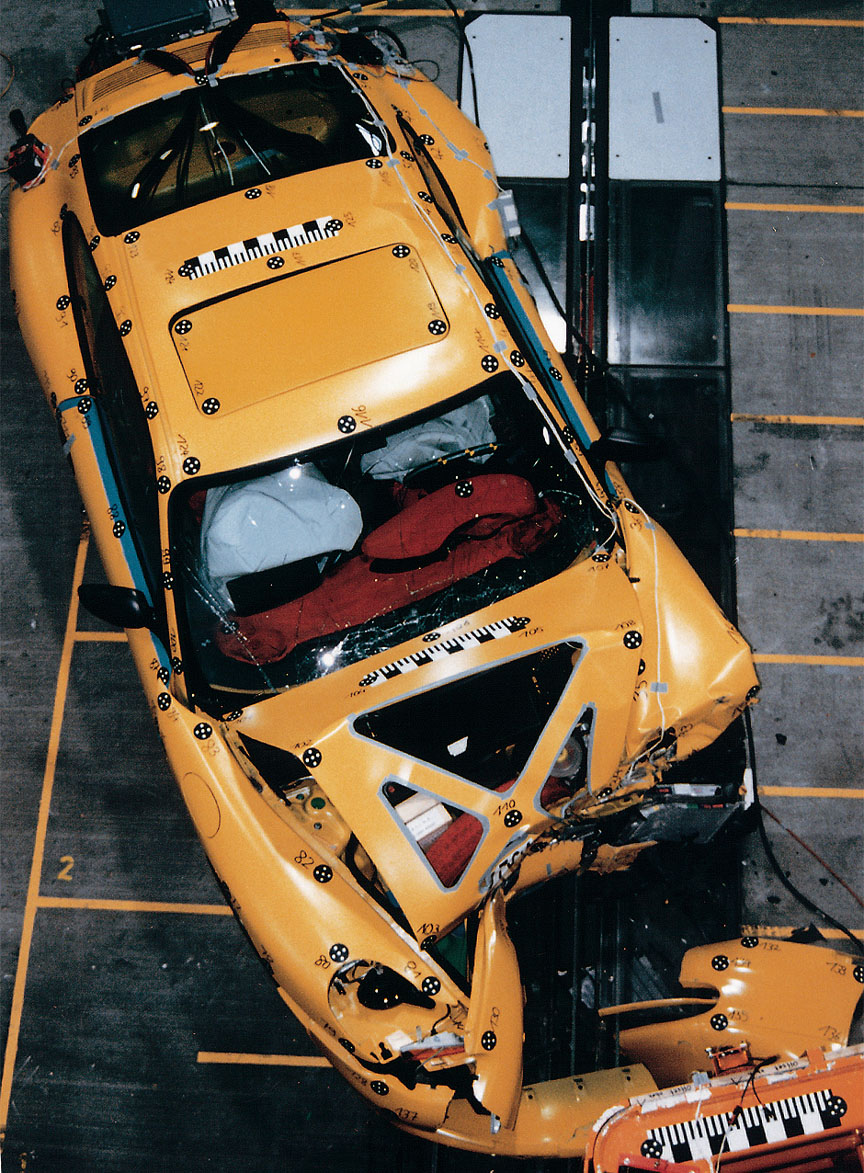
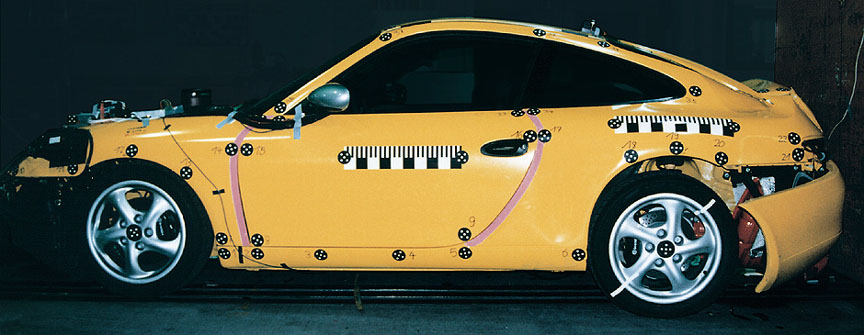
It was decided to match the power of 993 Carrera 3.8 and the 996 engine was enlargened to 3.4-litre to produce 221 kW (the 3.2-litre 996 prototype engine would find its way into the 2000 Boxster S). Although a bit bigger, with slightly less weight, the 996 was a bit faster than the 993. Tiptronic went from 4 to 5-speed.
Although the 996 Carrera prototypes were tested already since 1995, publically the story of the 996-generation 911 did not start with a rear-engined street car, but with a mid-engined racing car. For the 1996 racing season Porsche had created three 911 GT1 (993) racing cars for the factory team, with chassis numbers 993-GT1-001, 002, 003. Then, for the 1997 season, three 911 GT1 Evo (996) with chassis numbers 993-GT1-004, 005, 006 were built for factory team. These cars were technically similar to the 993 GT1, just with the 996 design and new front axle (the original GT1 had some 993 street car axle parts).
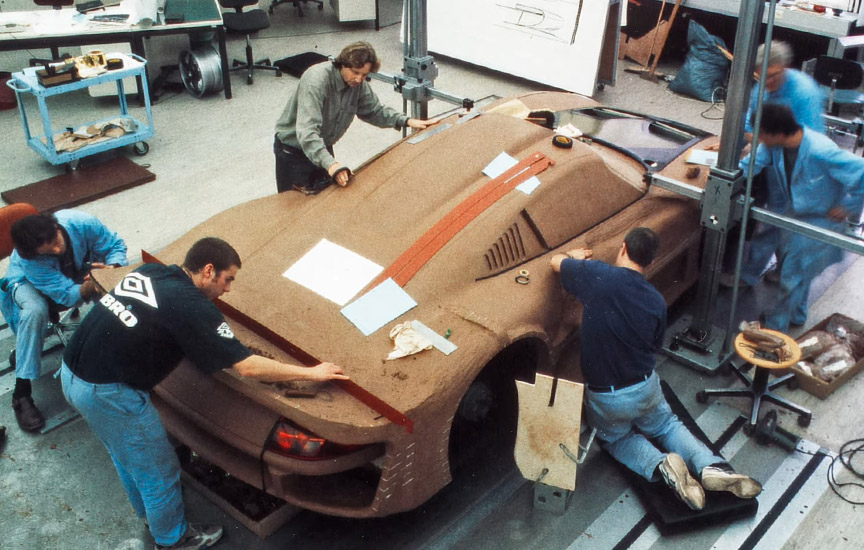
For the 1997 season, a few GT1 were built for customer teams, but these cars all had the 993 look and had chassis numbers starting with 993-GT1-101. Porsche factory team race prototypes usually had chassis numbers ending 0xx, while the cars built for sale had chassis numbers ending with 1xx.
To wrap up the 993/996 GT1 mess: chassis numbers 993-GT1-001, 002, 003 and 101 on belonged to 993-look racing cars and chassis numbers 993-GT1-004, 005, 006 to 996-look racing cars (911 GT1 Evo). The 1997 996-look 911 GT1 were called as Evo to distinguish them from the 993-look original GT1. Public saw the 996 GT1 (chassis 993-GT1-004) for the first time at the Le Mans test day on May 4, 1997. A street version had been created in parallel. The main difference between the street version and the racing car was the street car’s dashboard in 993 style. The engine was slightly detuned to pass the emission test and the street version naturally had to have a higher suspension setting.
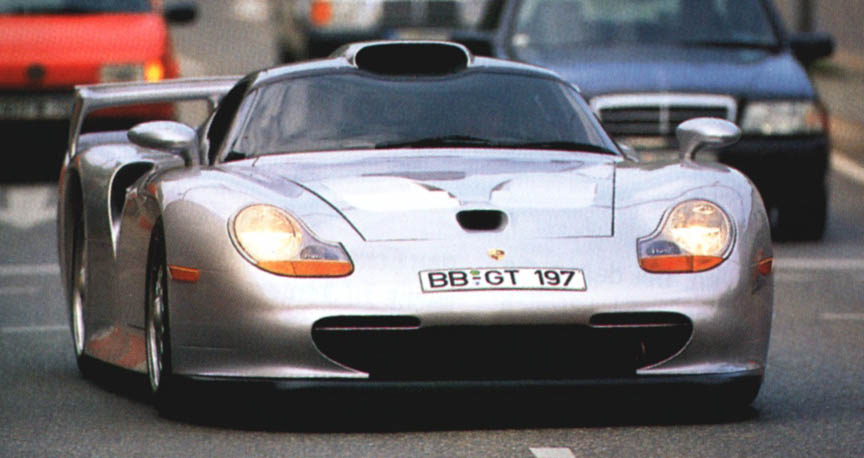
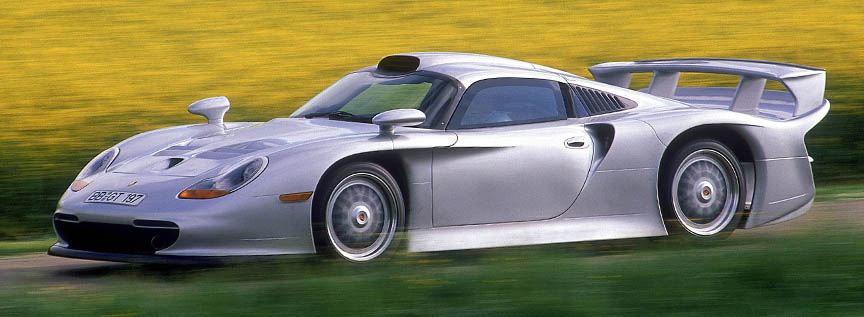
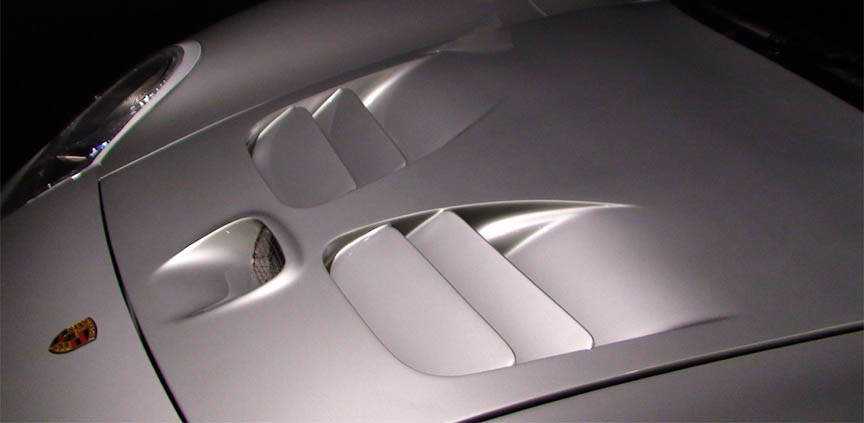
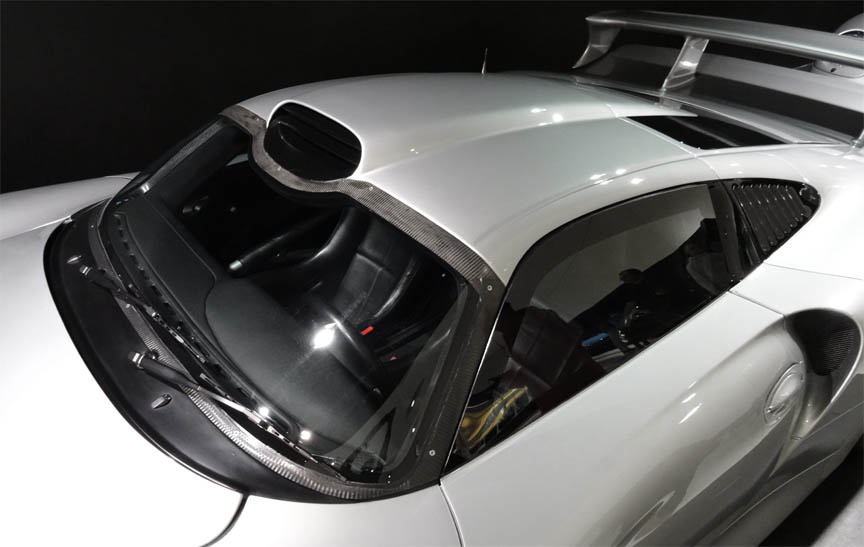
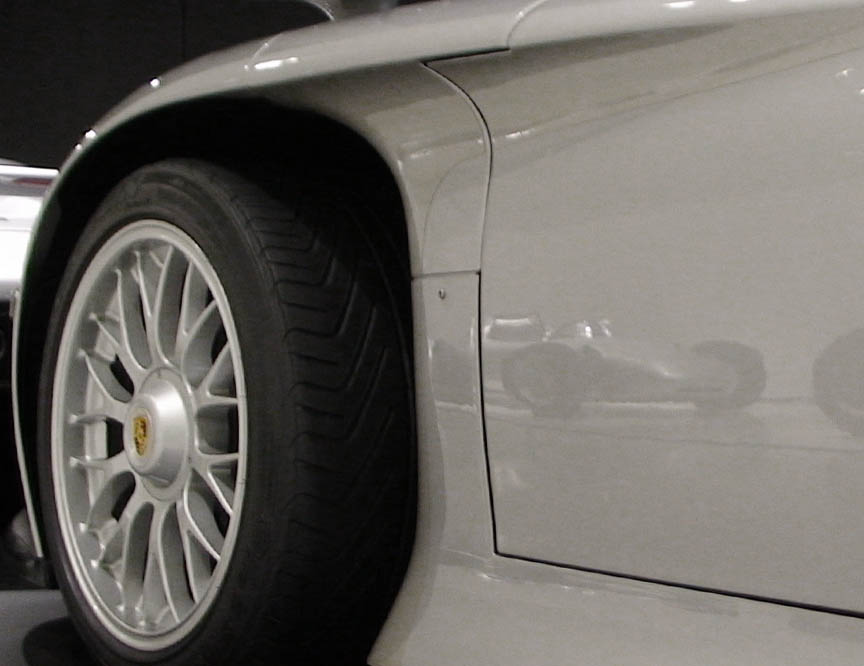
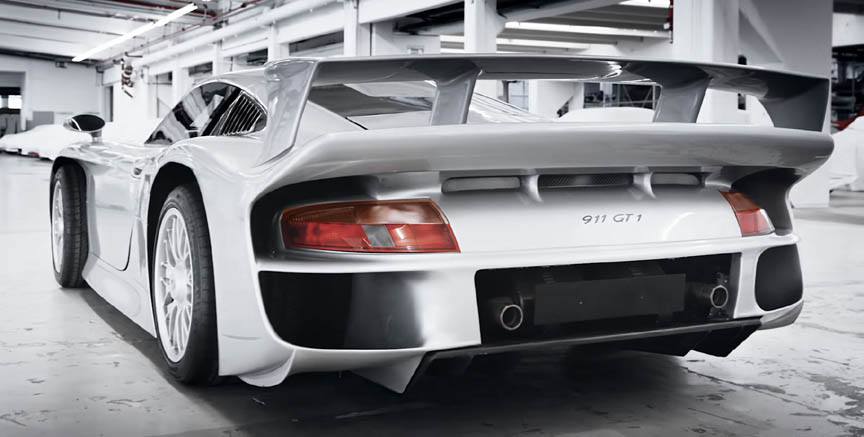
For the 1997 Le Mans 24 hour race in June, the factory team entered two 996 GT1. A silver street version was also shown at Le Mans (with a street car 17-digit VIN and Porsche prototype plates BB-GT-197).
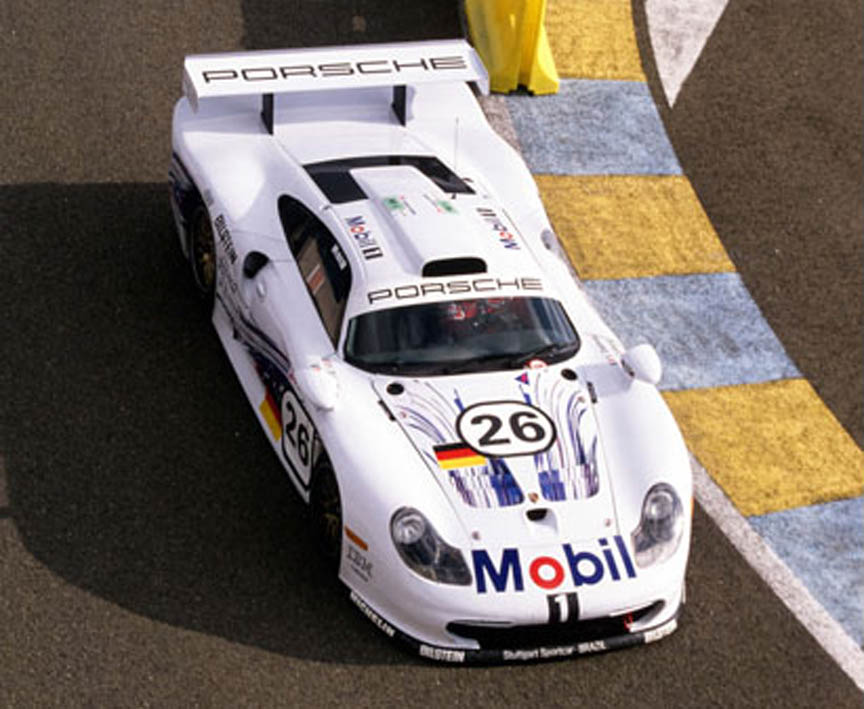
The LMP1 Joest Racing TWR-Porsche and the two factory team 911 GT1 Evos were leading the race. Next morning Bob Wollek made a driving mistake with the 996 GT1 and went over a curb that damaged the transmission. Porsche, interested only in victory, didn’t send the car back to the race. So, the #25 car of Bob Wollek/Hans-Joachim Stuck/Thierry Boutsen was out.
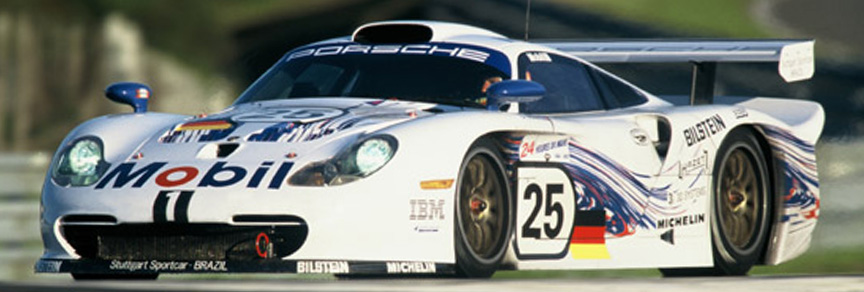
The 911 GT1 Evo #26 and the LMP1 TWR-Porsche kept fighting the McLarens. On the 21st hour, the #26 911 GT1 Evo of Emmanuel Collard/Yannick Dalmas/Ralf Kelleners was leading by a lap when it caught fire and was out.
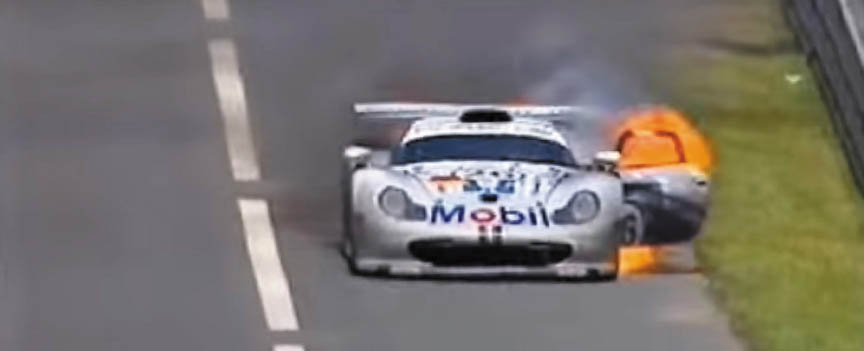
In addition to failing 996 GT1 cars, there were five privately entered 993 GT1 in the race. The LMP1-class Joest TWR-Porsche won the race (361 laps) with two McLaren F1 GTR following (360 laps and 358 laps). The #26 996 GT1 had covered 327 laps before it catched the fire. Although it had to retire more than 2 hours before the race, the covered 327 laps would have given it 6th place finish – if it would have crossed the finish line.
The third 996 GT1, chassis 993-GT1-006, saw its debut at the Spa-Francorchamps 4 hour race in July which it finished 3rd.
Then, 4 months after the 996 GT1 introduction, it finally was the time for the new 911 street car. The 996 Carrera was displayed from September 11 at the 1997 IAA Frankfurt Motor Show in Germany and in parallel press days were held from September 12 to October 3 at Château de la Messardière in St. Tropez, France.
The 996 was quite a shock. As Porsche said – or actually questioned and answered at the same time – “Can a 911 that shares not a single component with its predecessor still be a 911? Yes”. The body was now more aerodynamic, but gone were the beautiful curvy lines. Although the 911 had always had dry sump engine (typical to any racing engine), it now had a wet sump engine which made it vulnerable to lateral forces. This engine was not made with track days in mind. First half of the car was taken directly from the entry-level Boxster launched a year before. No more 911-trademark round headlamps, instead “fried eggs” as they were nicknamed on the Boxster. The reason for the wet sump engine is also the Boxster as there was no space for the oil tank in the Boxster. The 996 Carrera engine is just a larger capacity version of the Boxster engine. For some mysterious reason wheel lug nuts of any yearlier Porsche (except the VW-Porsche 914), were replaced by bolts. It was easier to change a wheel before the 986/996 era. The earlier titanium lug nuts were replaced with regular steel bolts that attracted rust in no time. So, saving literally went down to bolts and nuts. The first budget 911 was born. Not by the new car price, but by the business process.
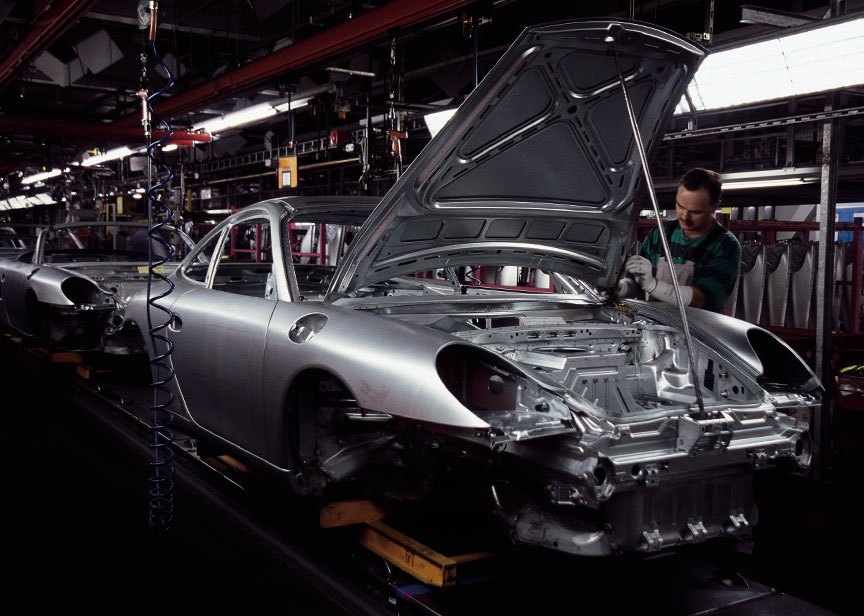
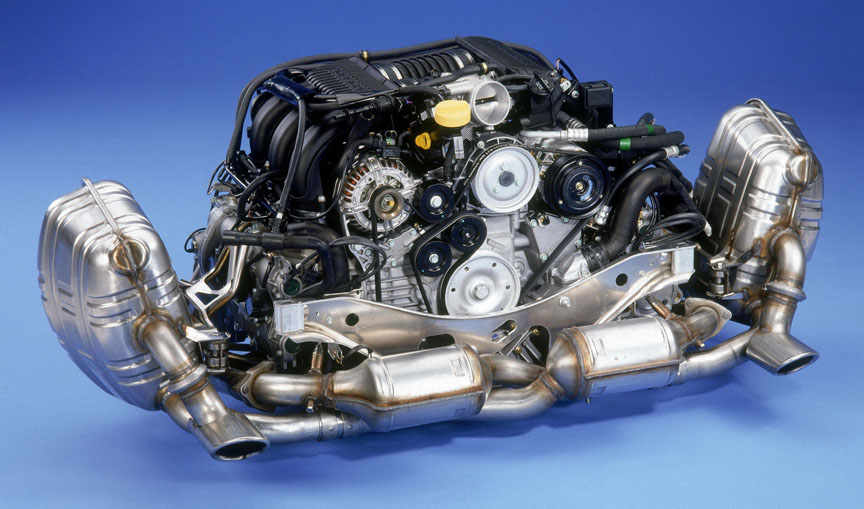
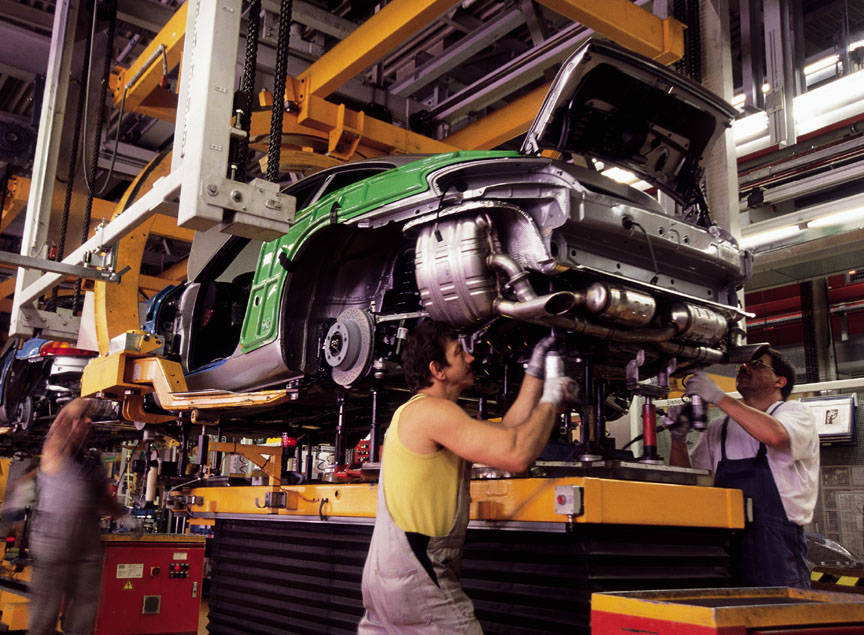
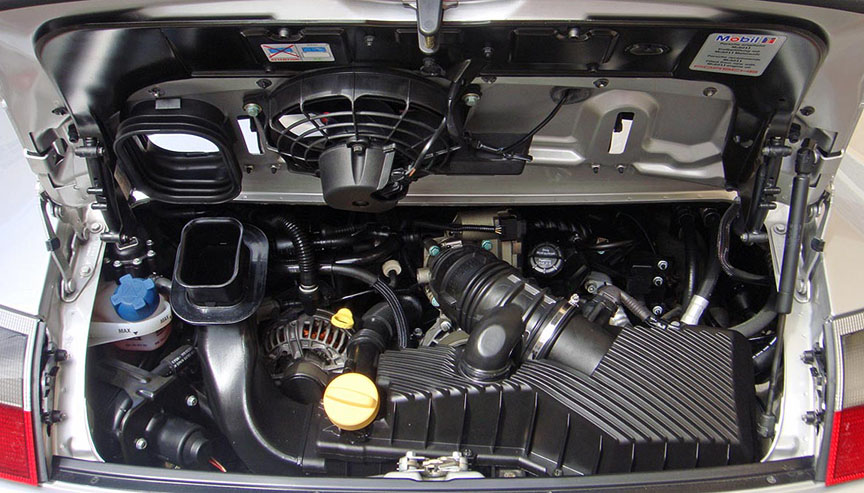
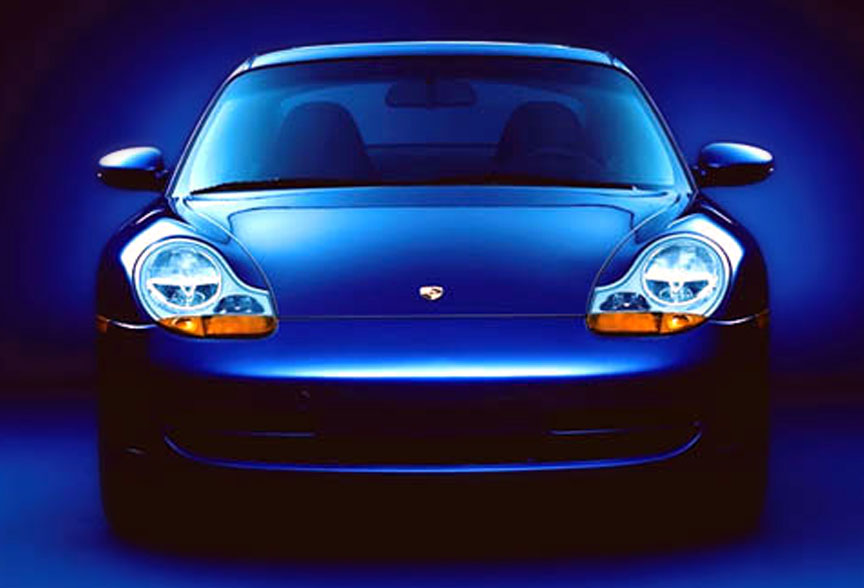

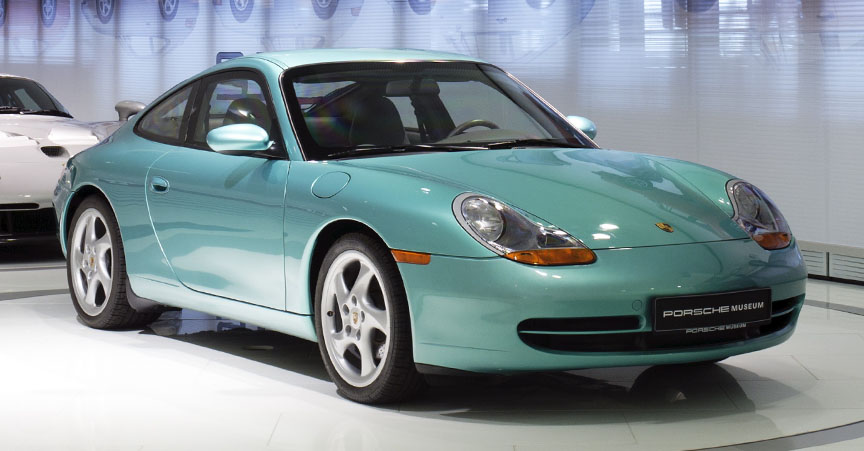
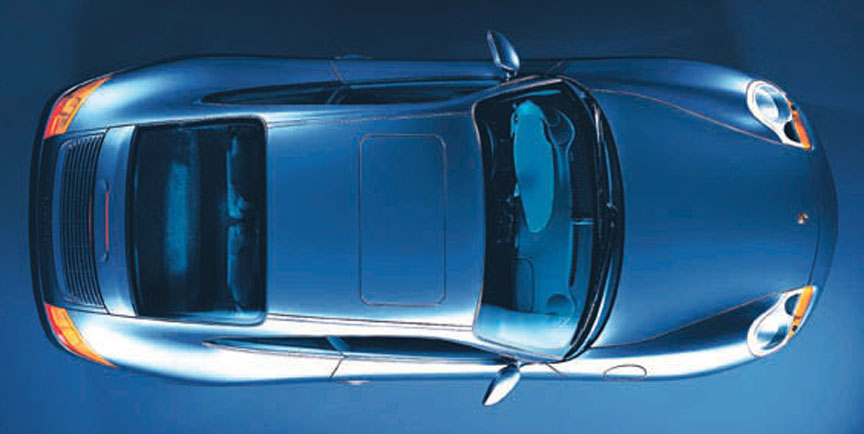
Two weeks after the 996 Carrera, the 996 GT3 Cup car was introduced for the next year’s Porsche Supercup series. Interestingly, the engine in the 996 GT3 didn’t share anything with the 996 Carrera engine, but was more of a water-cooled version of the 993 engine. While all the 993 Cup cars had 3.8-litre engines, the 996 Cup car had a 3.6-litre powerplant. The power was up from 993’s 228 kW to 265 kW. The GT3 naming was new and showed that the car was placed below the GT2 cars. There was no GT3 class in FIA races like there had been classes for GT1 and GT2.
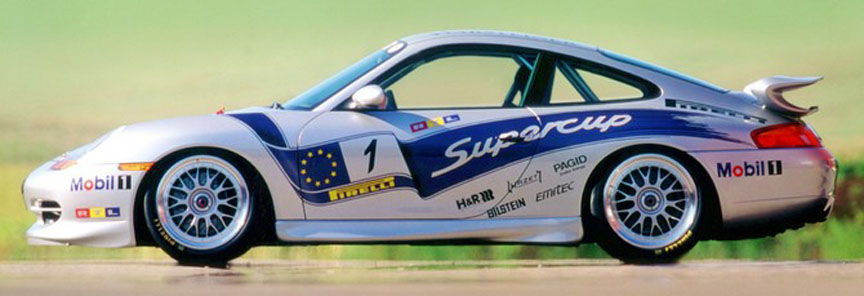
At the final 1997 FIA GT Championship race, the Laguna Seca 3 hours in October, 996 GT1 scored 2nd, 3rd and 5th. The season was dominated by AMG-Mercedes CLK GTR and BMW Motorsport McLaren F1 GTR. After the season Porsche sold the three GT1 Evos as the new weapon called 911 GT1-98 was already in development. The 911 GT1 Evo sold to Rohr Motorsport won the GT1 class and scored 2nd overall at the Daytona 24 hour race on February 1, 1998.
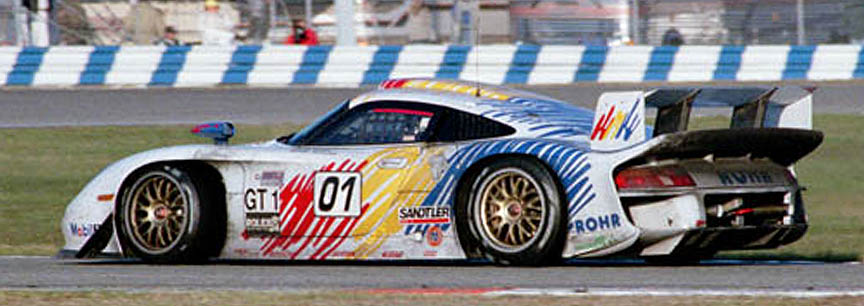
Mercedes had partnered with Porsche to create a joint company called Car Top Systems (CTS). Mercedes had launched its tin-top SLK coupé-roadster and Porsche its soft-top Boxster in 1996, both having the CTS-made tops. A 996 prototype with foldable hardtop was created, but it didn’t go into production. Classic design was kept.
The 996 Cabriolet was introduced in March 1998 at the Geneva Motor Show. The 996 Cabriolet was long ready (remember, it was tested already in 1995), but for marketing and production-related reasons it was launched in 1998 as a 1999 model. While the evolution with the 911 coupe was questionable from 993 to 996, the real evolution came with the cabriolet. In USA – the biggest market – 911 Cabriolets outsold the Coupés. The 993 used to have an old school folding roof that was not very nice for the eye when folded down, nor when up, but the roof of the 996 Cabriolet looks very good in both positions thanks to its Z-folding design. The upper side of the roof now faces to the outside even when the roof is down, protecting the inner liner from the elements. The 996 Cabriolet was the first car in the world which’ roof could be opened and closed from the remote control (except in USA where this was banned by DOT). It came with the hardtop as standard. The offer sounded nice on the paper, but very few owners started to use the hardtops, so in most cases they are still just occupying garage space. On the contrary to all the good news with the cabriolet version of the 996, the rear seats have the backrests with negative angle – to have space for the roof – and that is not very comfortable if an adult needs to sit in the back.
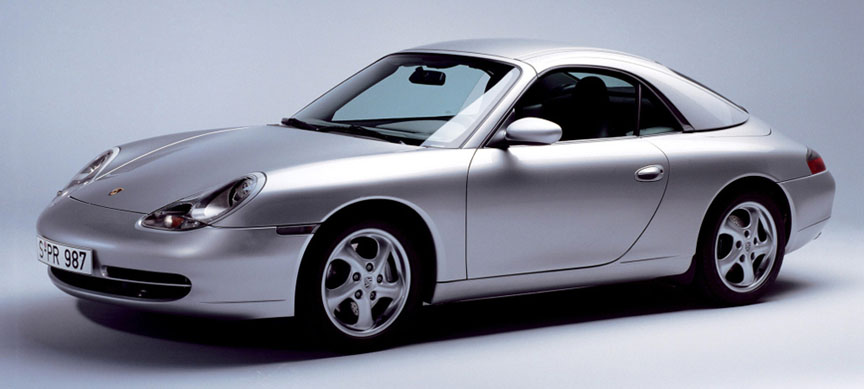
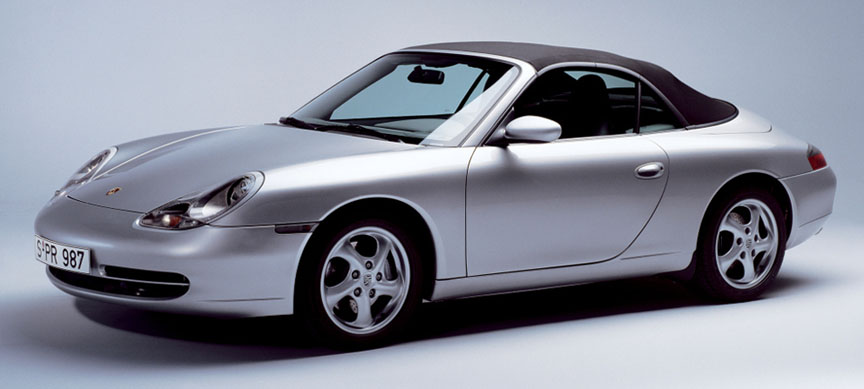
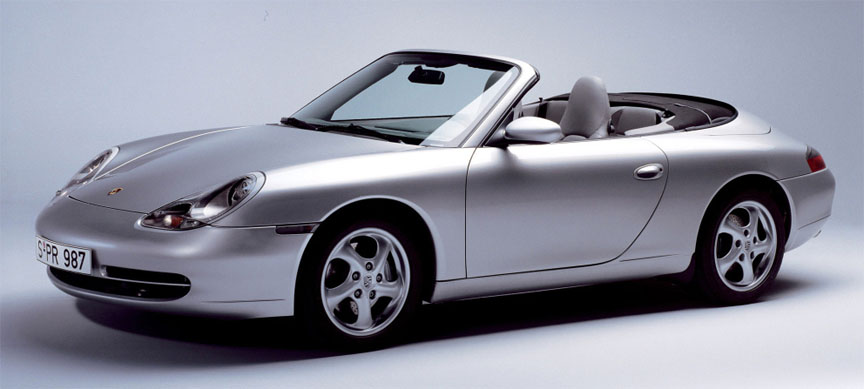
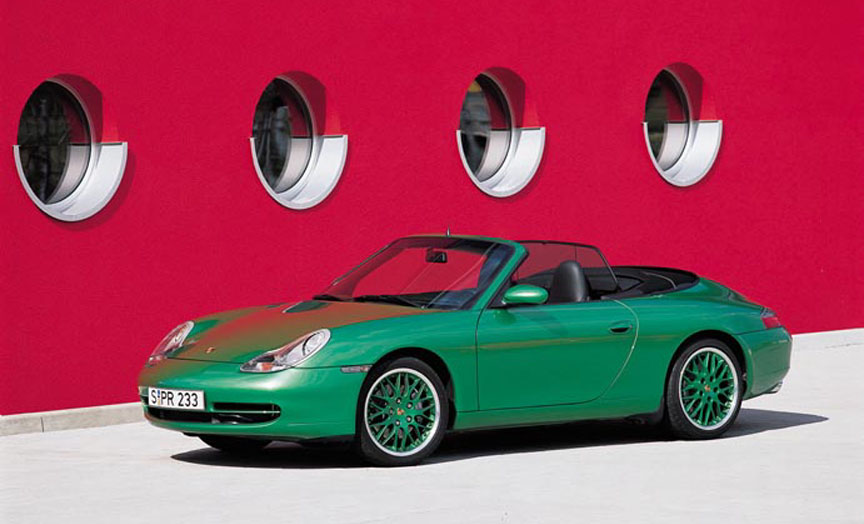
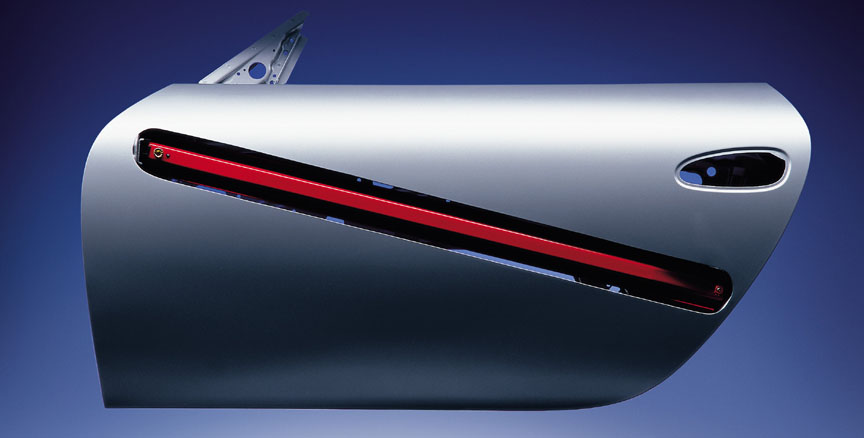
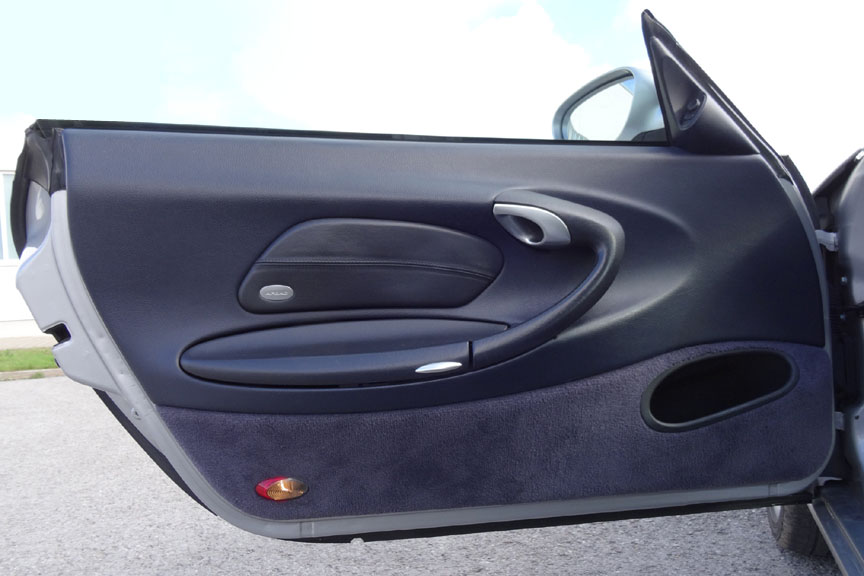
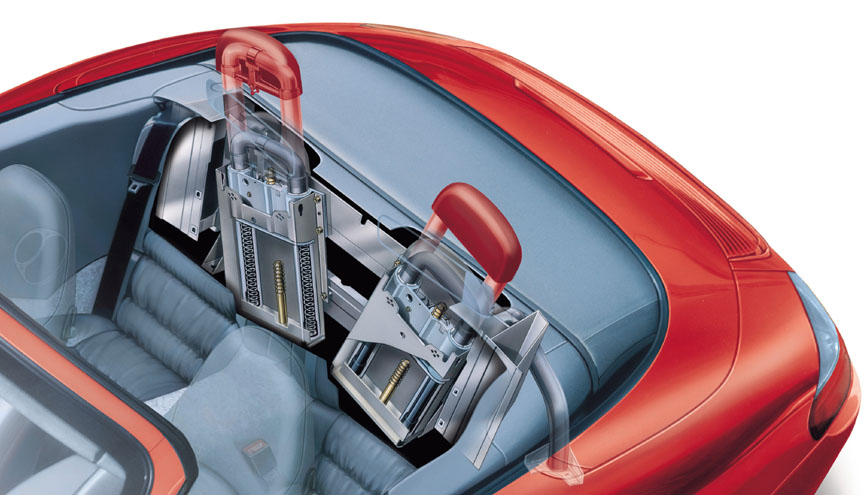
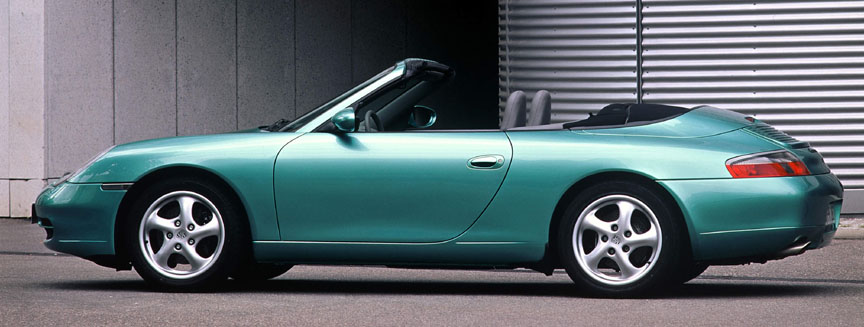
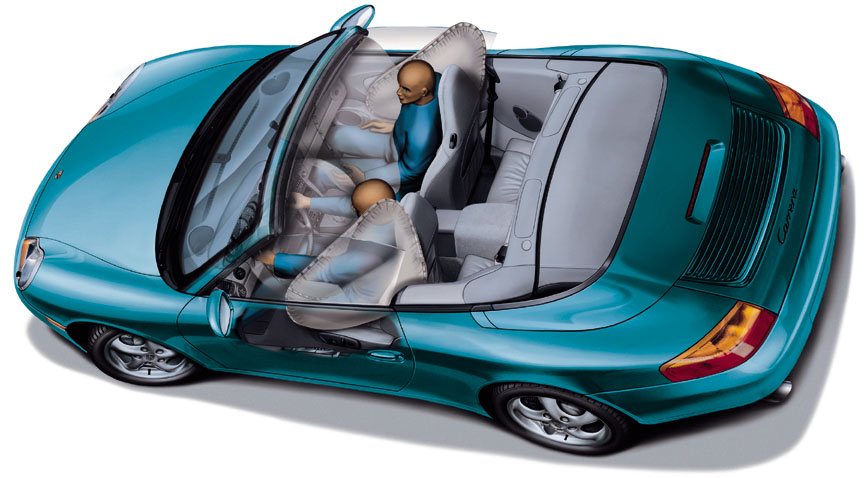
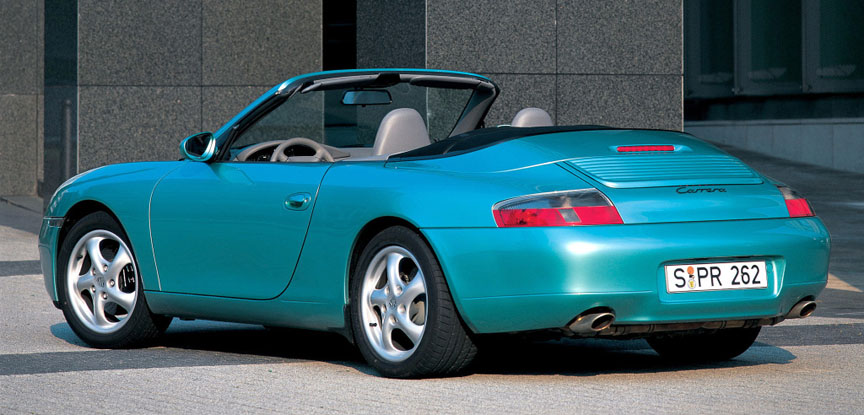
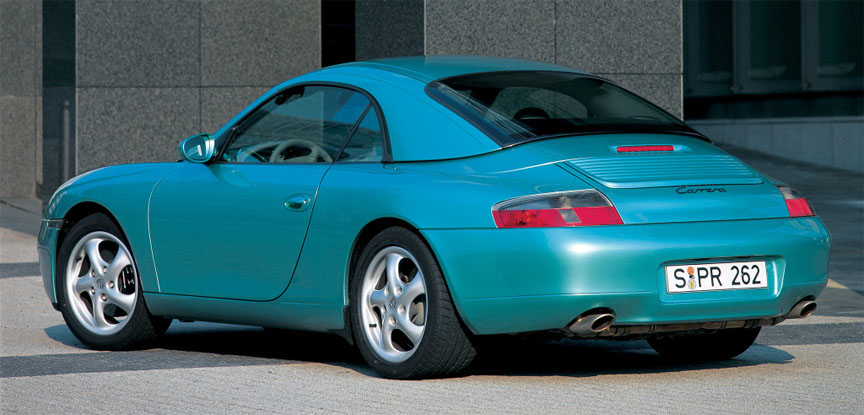

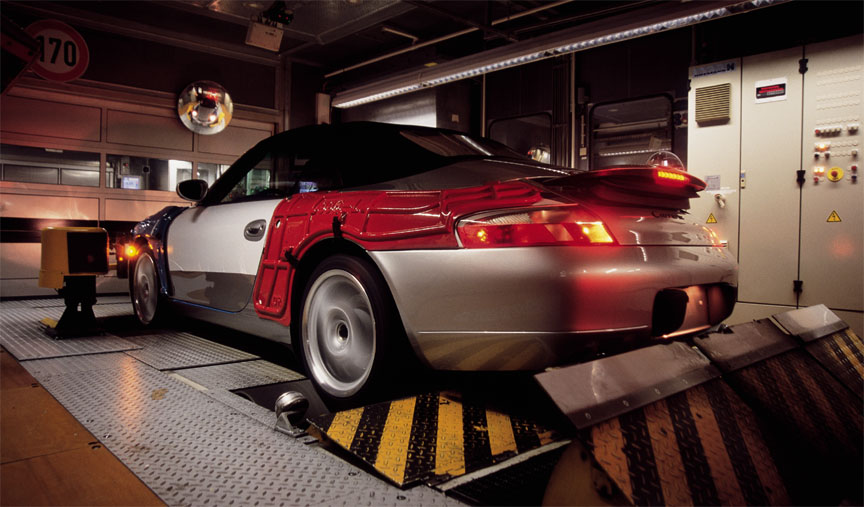
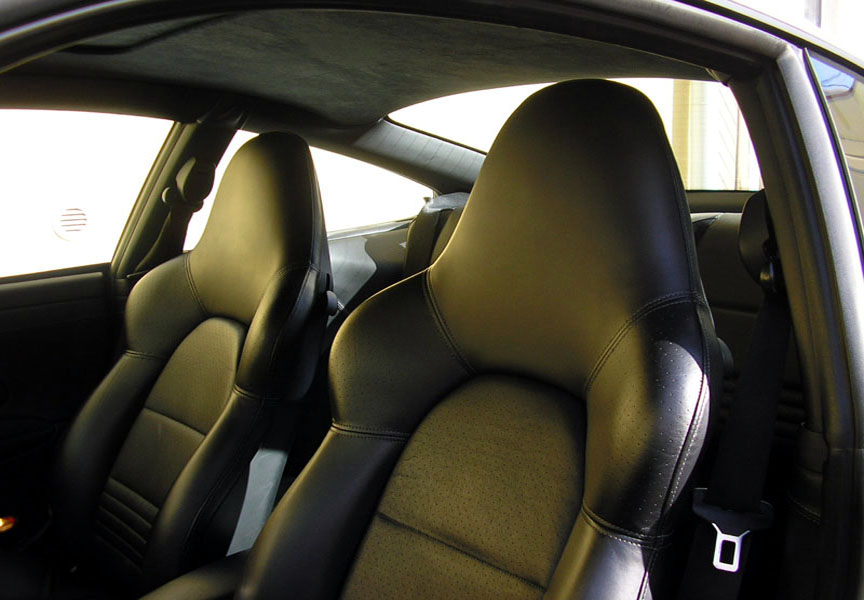
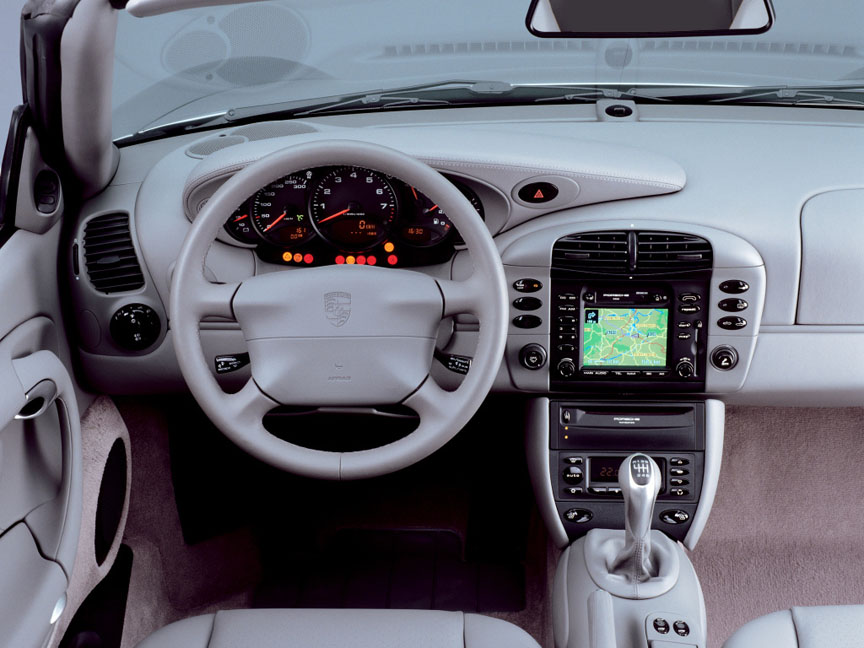
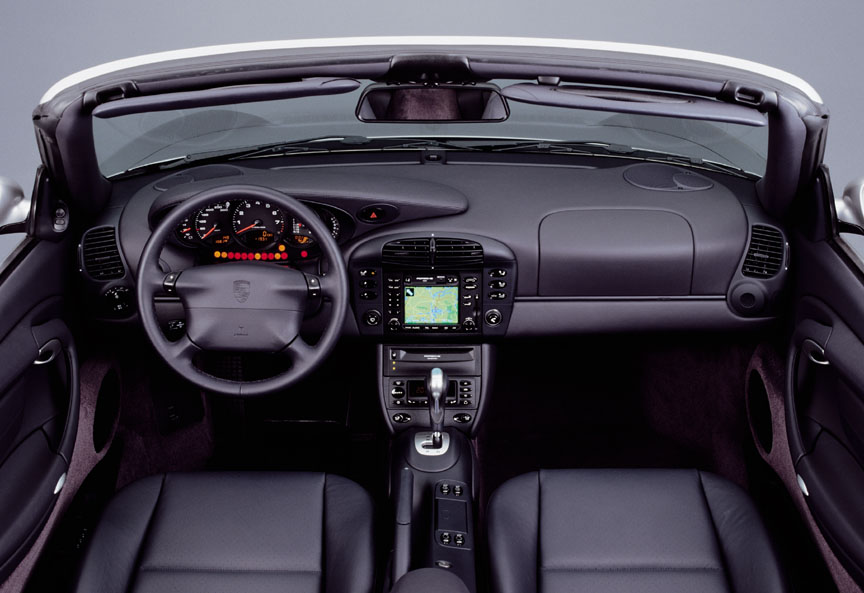
A two-day storm had hit Sebring before the 12 hour race in March 1998. The nose, windscreen and roof of the Dave Maraj/Champion Motors 911 GT1 Evo (chassis 993-GT1-005) were badly damaged by nitrogen cylinders falling on the car. One of the cylinders was ricocheting in the tent after it lost the pressure valve on the impact. Luckily nobody was hurt, but it looked like there’s no time to repair the damaged car. Ultimately the car was repaired before the race and after 12 hours the car scored 3rd overall driven by Thierry Boutsen/Bob Wollek/Andy Pilgrim.
A new GT1 was created from scratch for 1998, the 911 GT1-98 as it was called. It was a completely new car with sequential gearbox and full carbon-fibre chassis (the earlier GT1 cars had the 993 front floor pan). While the GT1 Evo 97 was a left-hand-drive car, the GT1-98 became a right hand drive car as had been all the serious racing cars (917, 956, 962). The reason for this is that the majority of the race tracks are clockwise and there’s a minor benefit if the driver sits on the curve side. A street legal version had to exist, and only one 911 GT1-98 street version was made. At least in 1998. One of the racing cars was later converted to a street version – the car shown in the Porsche Museum. The original 911 GT1-98 street version must be in a private collection.

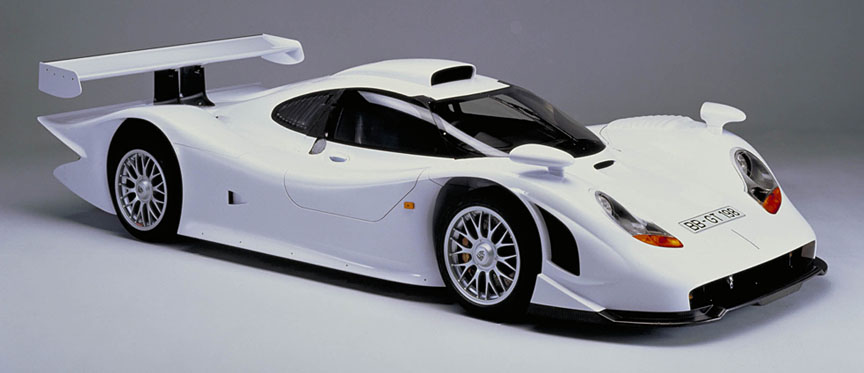
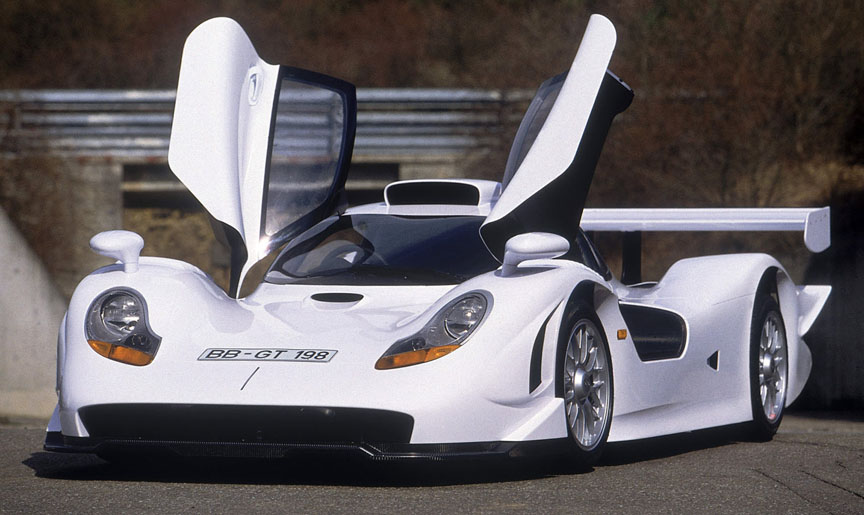
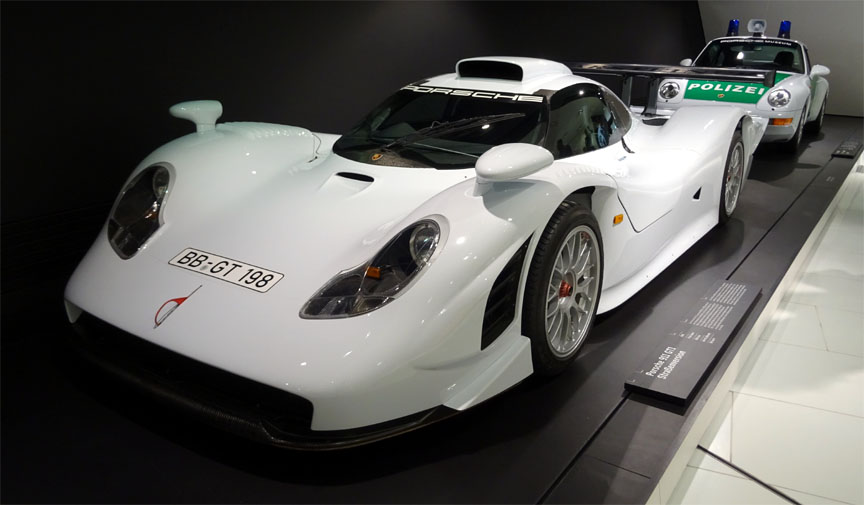
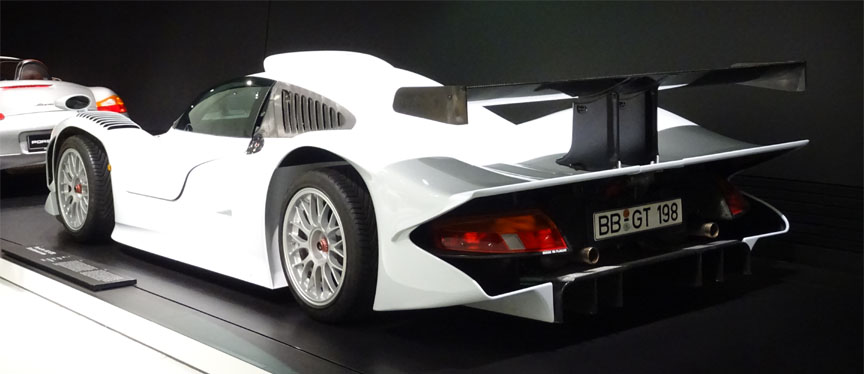
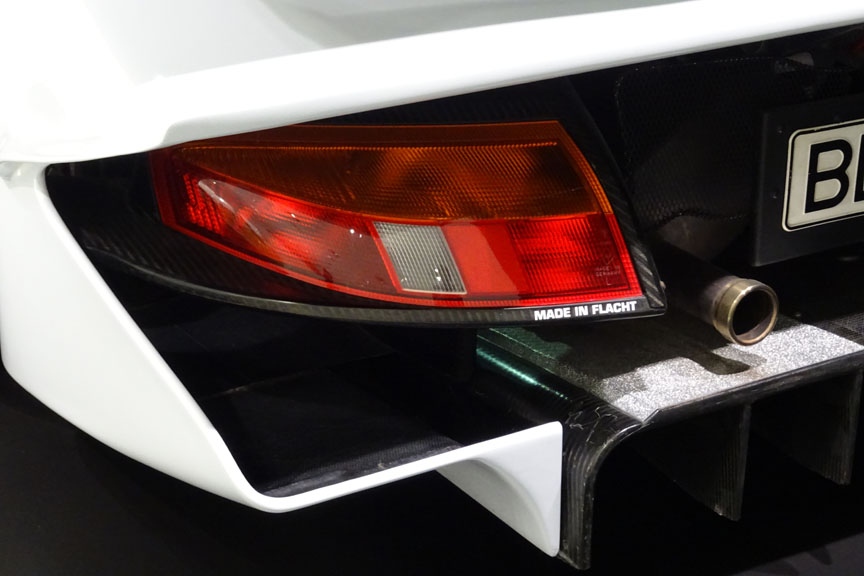
In addition to the original GT1-98 street version, five racing versions were made – three for Porsche works team (chassis GT1/98-001, 002, 003) and two for Zakspeed racing team (GT1/98-004, 005). Interestingly, the customer cars had factory team chassis number sequence.
In the opening 1998 FIA GT race on May 15 at Silverstone, the GT1-98 #7 (chassis GT1-98-003, drivers Allan McNish/Bob Wollek) set the pole position, but had to retire the race because of the engine failure. Mercedes-Benz CLK GTR won it, followed by Porsche #8 (GT1-98-002) driven by Uwe Alzen/Jörg Müller and Porsche #6 of Zakspeed (GT1-98-004) driven by Michael Bartels/Armin Hahne. Then came another CLK GTR and then the second Zakspeed Porsche #5 (GT1-98-005). The rest of the GT1 cars included McLaren F1 GTR, Panoz Esperante GTR-1 and Lotus Elise GT1-based Bitter GT1.
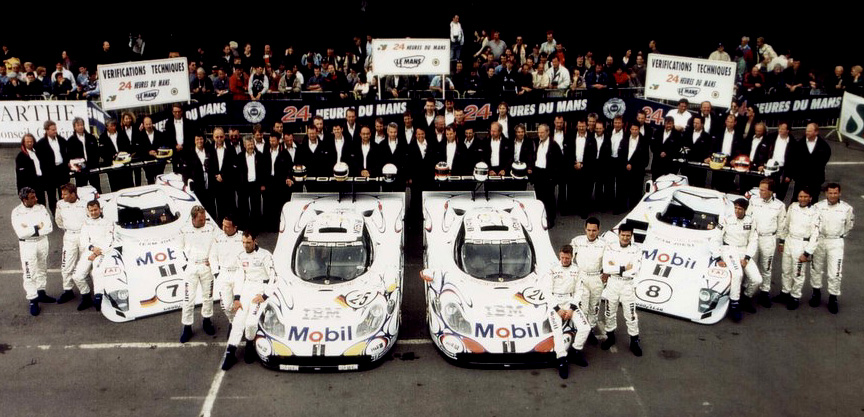
The 1998 Le Mans 24 hour race was dominated by GT1 cars over the LMP1 cars which tells the GT1 cars were not GT (production related) cars anymore. Porsche faced tough competition from Mercedes CLK LM (pole position) and Dallara-Toyota GT-One racers. Other rivals included BMW V12 LM and Ferrari 333 SP (both LMP1), Astec-TWR Nissan R390 and McLaren F1 GTR (both GT1). The new BMW LMP1 cars were pulled out from the race on team order after it was clear they have serious design problems. The 1997 Mercedes CLK GTR 6.0V12 had evolved to 1998 CLK LM 6.0V8, but the new engines failed in the beginning of the race and Mercs were out. The #7 Porsche LMP1-98 had to quit after 107 laps because of an electrics problem that coudn’t be solved. One of the three Toyotas (#28) crashed on lap 191. The #8 Porsche LMP1-98 was damaged on lap 218 and was out. On Sunday morning a water pipe on Allan McNish’s #26 911 GT1-98 broke and shortly afterwards, Jörg Müller went over a chicane damaging the underbody of #25 911 GT1-98. Both GT1-98 were in the pits for half an hour. Toyota #29 went into the lead until it lost the gearbox 85 minutes before the flag. This meant double victory was taken by Porsche.
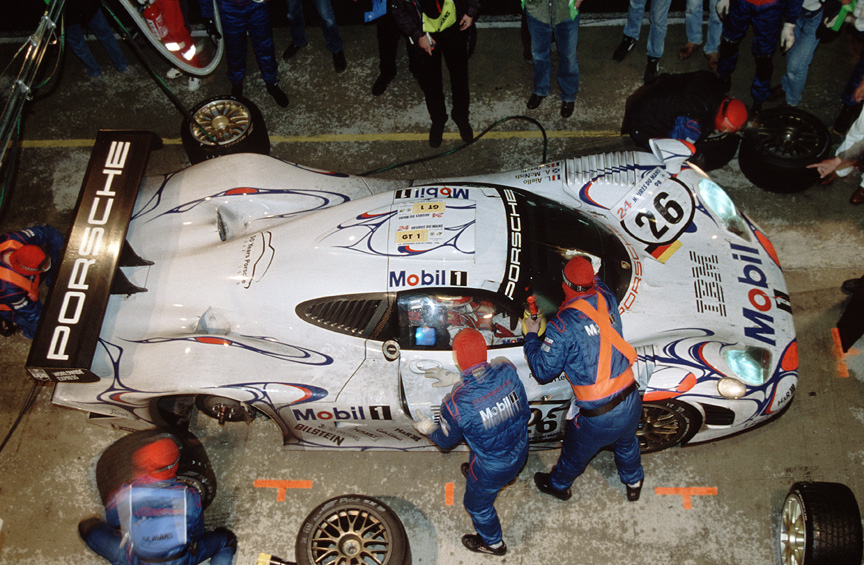

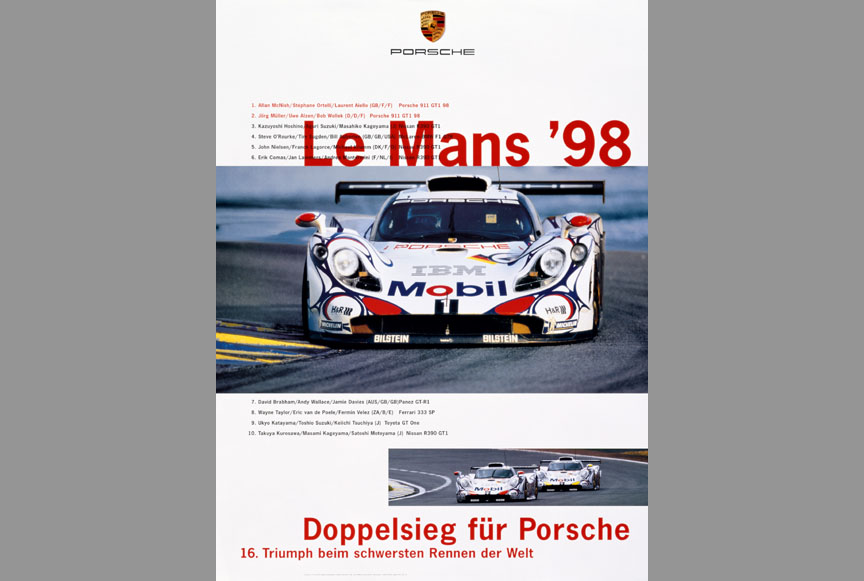
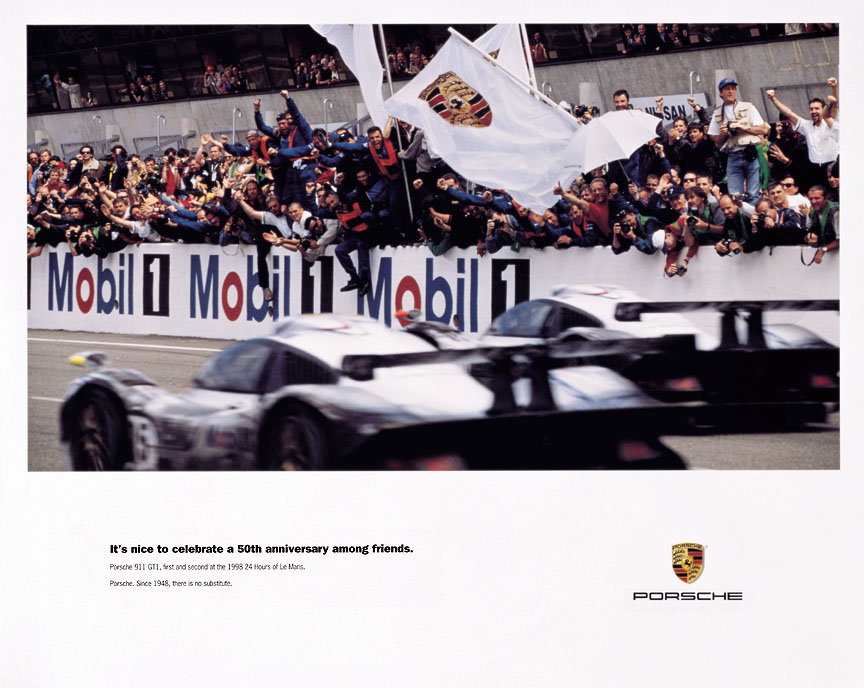
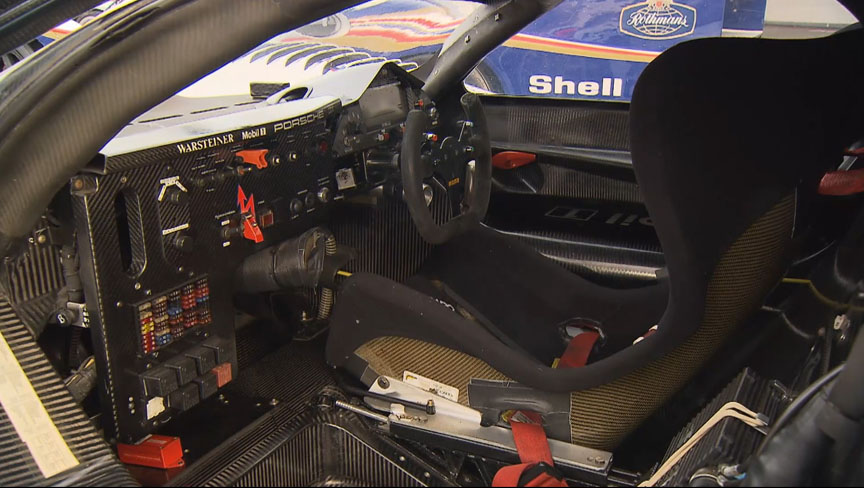
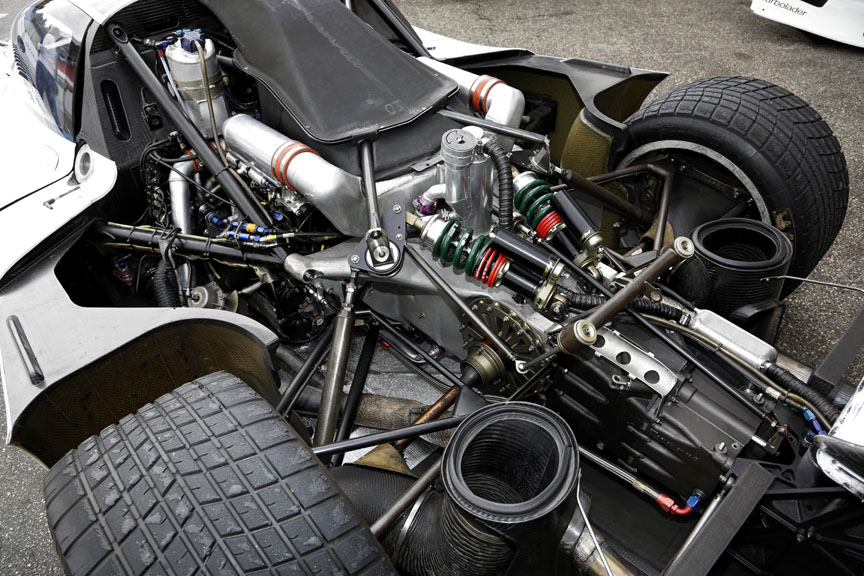
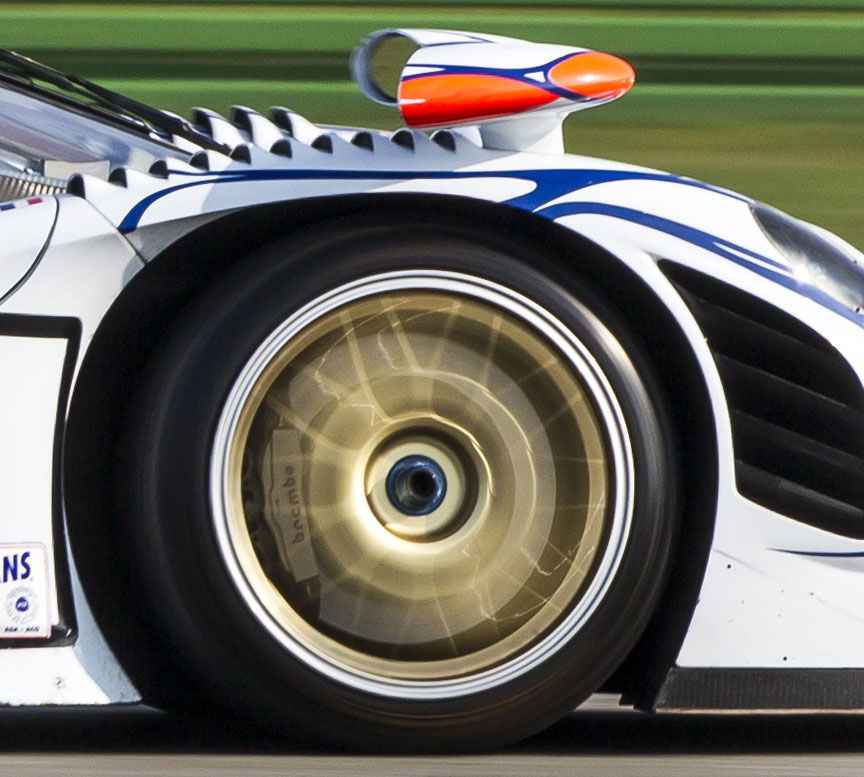
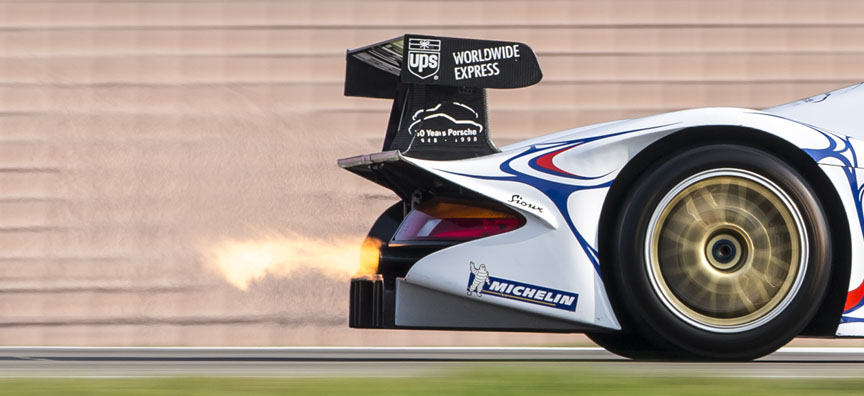
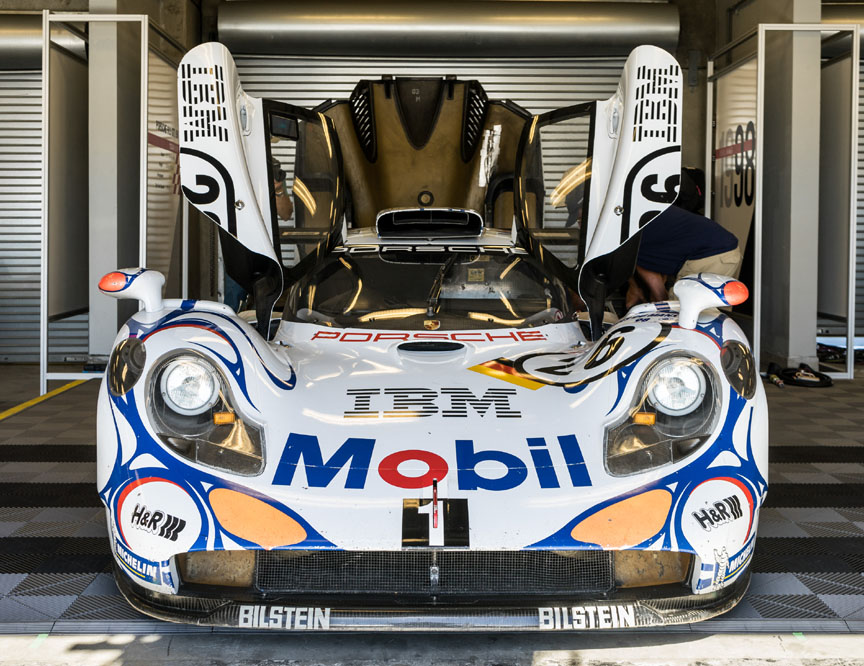
Ferry Porsche had passed away in March 1998 and the 1998 Le Mans sees the last Porsche factory entry with overall victory in mind. The new force at Porsche stops the V10 engined LMP1-2000 program and focuses on developing the SUV in cooperation with Volkswagen. The 996 Carrera Coupé and Cabriolet were introduced in USA in the end of summer of 1998.
While the Carrera Cup Germany and the Carrera Cup France racing series were still held with the 993 Cup cars in 1998, the Porsche Supercup was ran with the new 996 GT3 Cup cars. The Supercup races were held on 9 F1 weekends (out of 16 F1 weekends). The 1998 Supercup series was dominated by Manthey Racing. Patrick Huisman won 6 races. Second in the season was Oliver Mathai (also Manthey Racing). Mathai had lost the Supercup title a year before to Huisman although he had the same amount of points (but lost with the number of race victories). Third place in the 1998 Supercup went to Altfrid Heger (1993 Supercup winner).
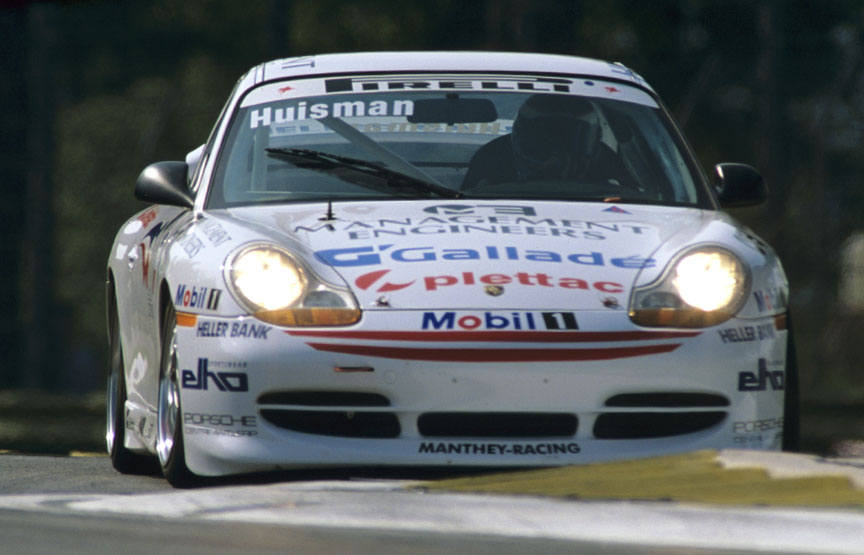
Production of the Carrera 4 started in October 1998 as 1999 model. Compared to the 993 Carrera 4, the viscous clutch of the central differential was moved from the gearbox into the front differential housing for better weight distribution.
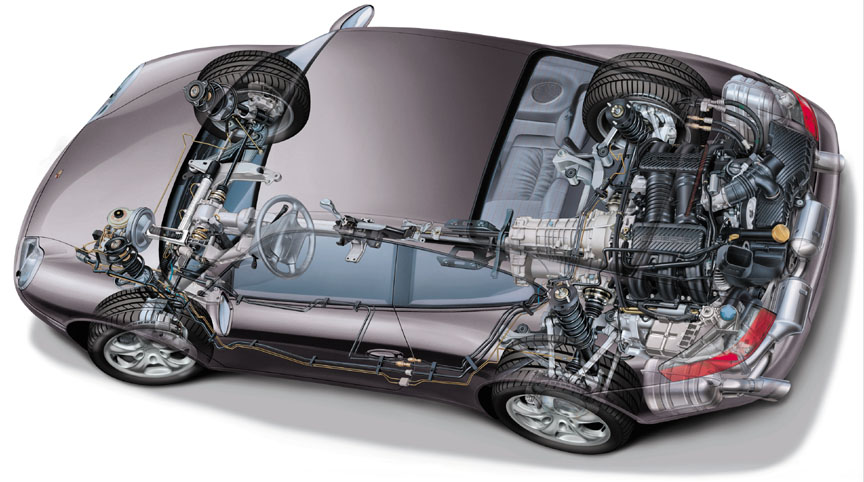
Because of the weight of the rear-mounted engine, the rear-wheel-drive 911s have beaten 4WD cars in rallies, but many customers don’t care how mechanical engineering works and they demand 4WD even for a rear-engined car. For some, the “Carrera 4” might give great hopes on the paper, but who has driven the 996 C4 on the snow, can tell that it is rather hard to understand what is going on at the front axle. The Carrera 4 has 60% of the weight at the back, so 40% on the front axle. Every Porsche 356 and 911 was designed to have less grip at front as it is needed more at the back. In normal driving conditions the viscous clutch of the Carrera 4 sends only 5% of the drive power to the front axle and when the rear wheels completely lose grip, up to 40%. Considering the front is light, these numbers have less impact. 40% of the peak drive power times 40% of the weight, translates to around 30% peak drive force on the front axle, but as the front differential has no locking, on a very slippery surface one of the front wheels starts to spin and the other stops, minimizing what the front axle can contribute to the car’s forward acceleration. As you cannot benefit from the front wheel traction in a rear-engine 996, so why drag around the 54 kg/120 lb extra weight of the 4WD system?
Another factor that makes the 4WD system in the Carrera 4 even more useless is when the car is fitted with the Tiptronic transmission – in this case there’s the torque converter (non-linear power transfer) between the engine and the gearbox in addition to the fact that the central differential has no lock (non-linear power transfer) and there’s no front differential lock. A 911 Carrera 4 Tiptronic on a really slippery surface gives its computers a lot to calculate, but the result for the driver is rather useless.
The conclusion on the Carrera 4: you are better off with the real-wheel-drive manual Carrera – this is the original and the best configuration of the 911. Porsche has actually said “We did not intend the all-wheel drive system as an all-weather traction assistant”. And “The focus here, however, is not so much on traction, but rather on supreme driving characteristics and safety to the limit”. This is rather complicated wording, but you can read that you should not set hopes on the traction at the front axle. Finally, Porsche calls the 4WD in the 911 as the “Drive system of your choice”. This is as honest as Porsche can be – they provide the drive on the front axle because the customer insisted it, not because it’s worth much.
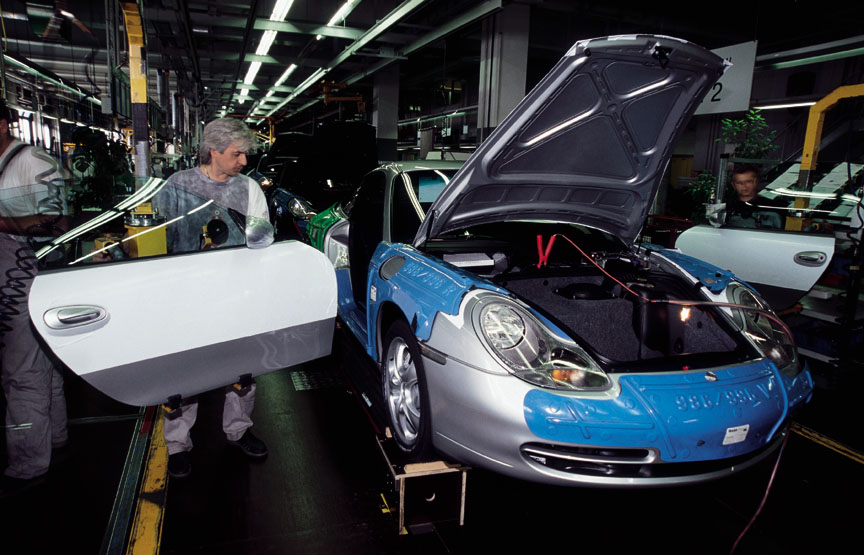
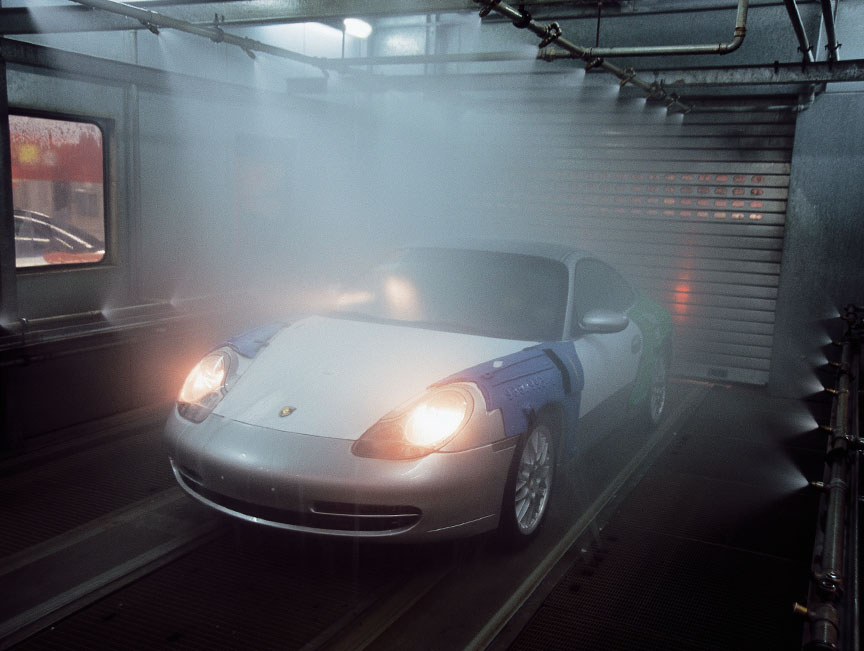
The 911 Carrera 4 is fitted as standard with PSM Porsche Stability Management. With this, oversteering is avoided by automatically applying the brake on the outer front wheel in a bend, understeering is eliminated by applying the brake on the inner rear wheel. The driver can disengage PSM with a dashboard switch, but, for safety, PSM will engage under braking and will disengage when the driver lifts off the brake. Visually the C4 is distinguishable by silver-colored brake callipers and the rear lid script (if it is not deleted with option M498). Carrera 4 also got special nice-looking 17″ wheels – but who drives with the 17″ wheels? So they are very rare. Because of the front wheel drive system, the front luggage compartment is a bit smaller and folding tyre spare wheel is used.
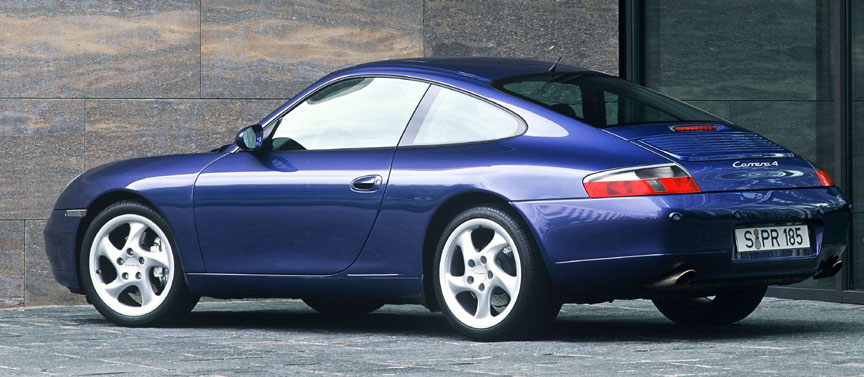
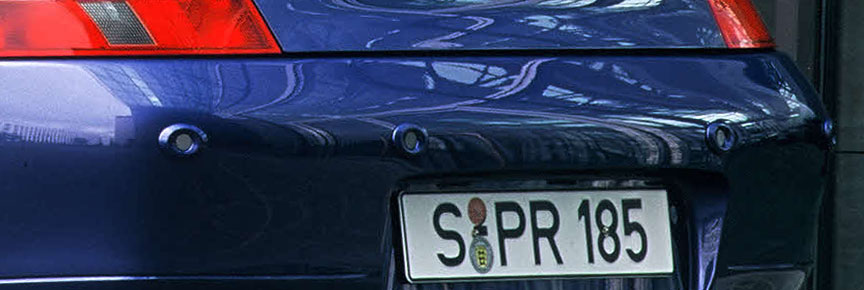
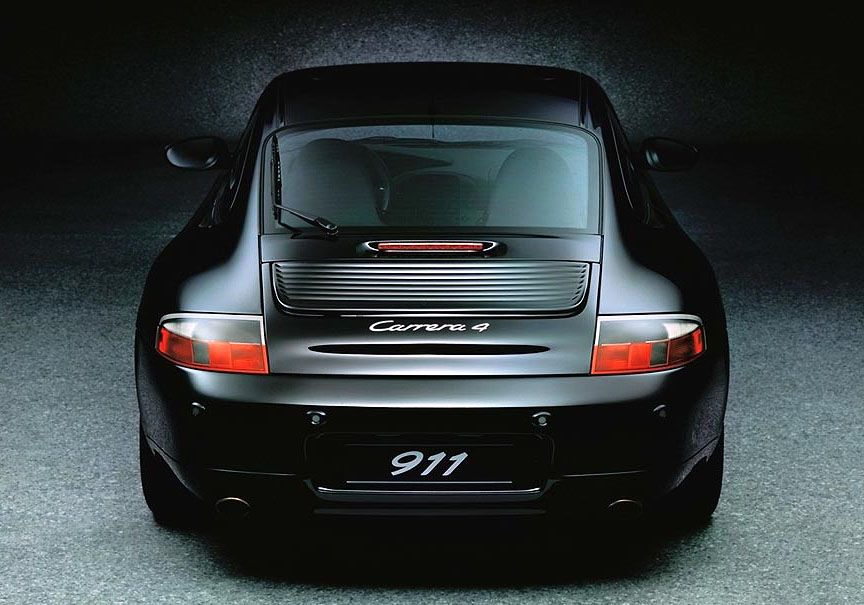
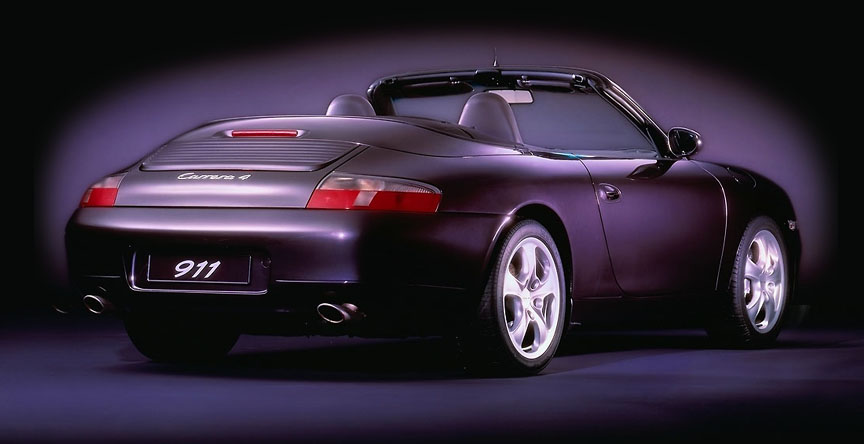
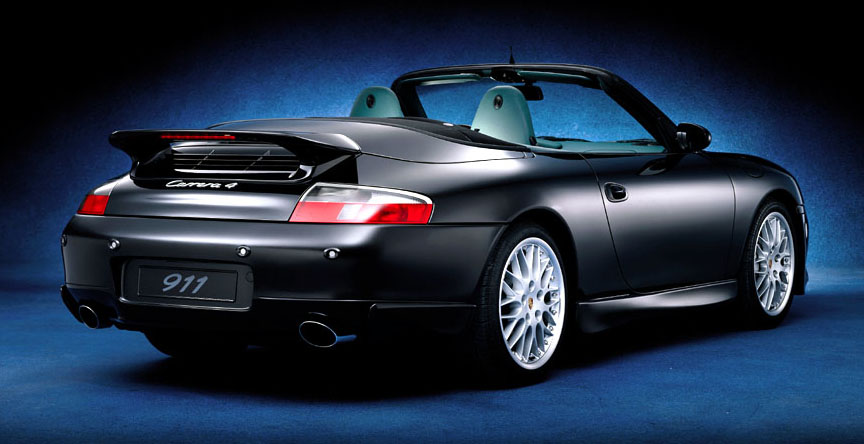
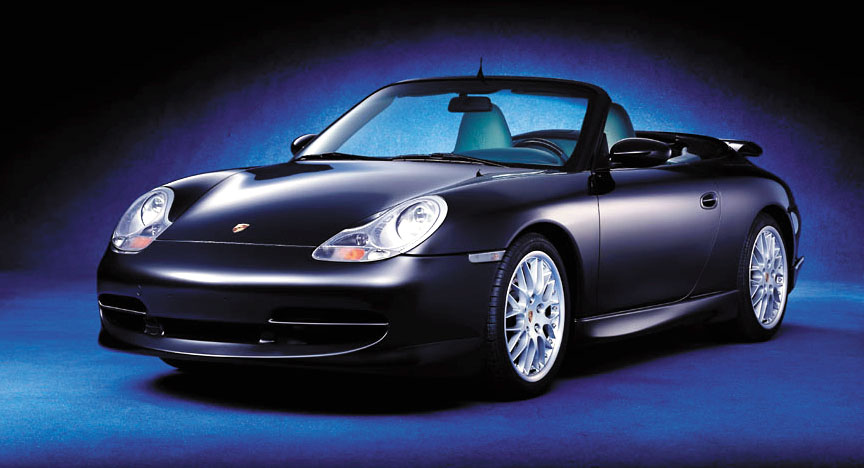
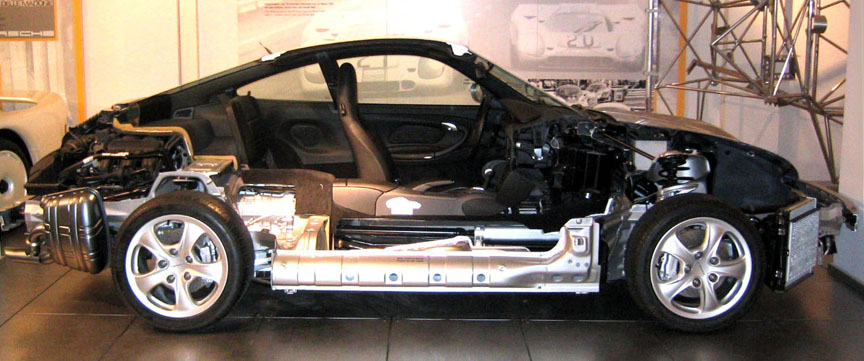
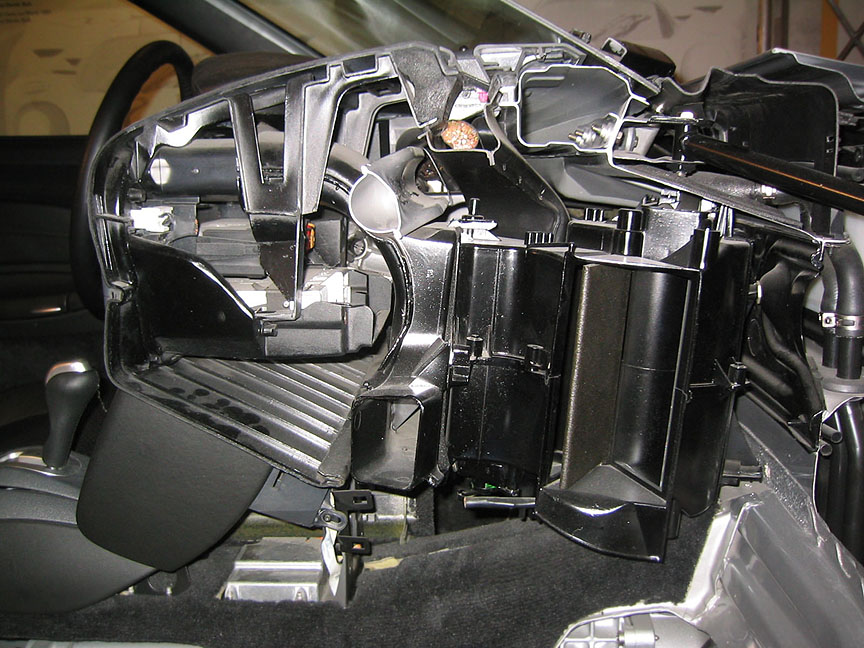

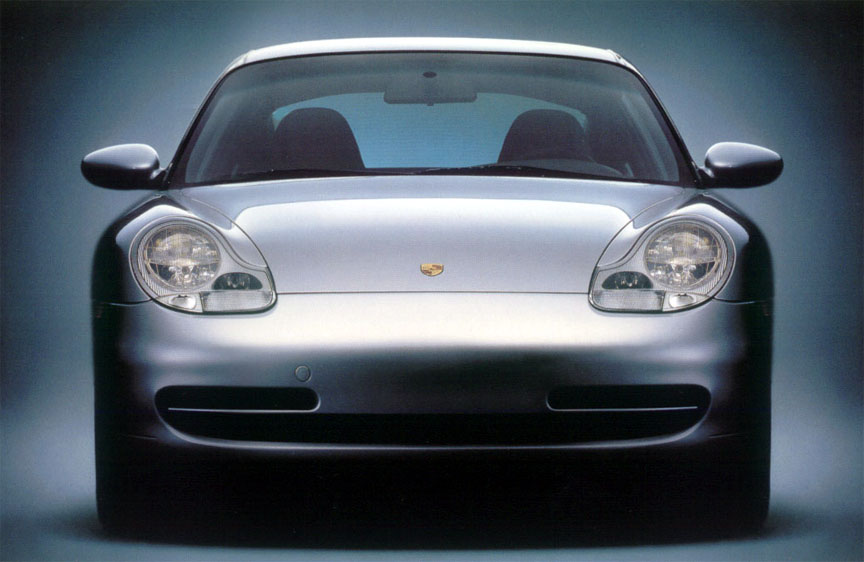
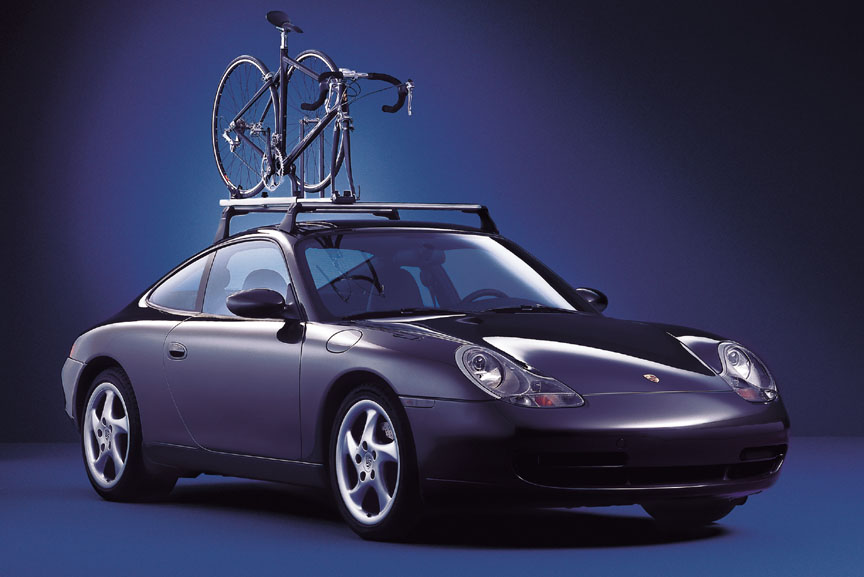
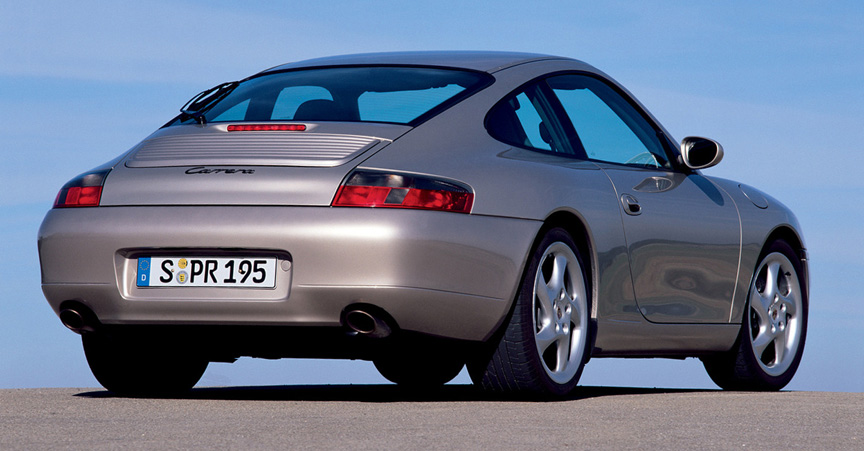
WLS (Werks LeistungsSteigerung) factory powerkit was made available (Porsche Exclusive option code X51). The power of the 3.4-litre engine rose from 221 to 235 kW. Even more importantly the fragile budget engine received vital lubrication and cooling upgrades. The 993 could do easily with air-cooling, but the 996 Carrera has 6th cylinder overheating problem despite water-cooling, or because of that. Here’s what the X51 engine included: modified oil pan partition box (larger alloy baffles with aperture valving replaces small plastic baffles), adapted exhaust manifolds with larger cross-section and optimized flow behaviour, optimized inlet and exhaust ducts (machined and polished), aluminium intake system with modified cross-section, revised cylinder heads, new 996 mark 1.1 revised swirl piston set (3.4 WLS), modified valves (including profile and longer shaft), larger lift camshaft, additional dual chamber oil extraction pump, additional oil extraction pipe to service cylinders 4-6, third radiator, alternate Tri-metallic catalytic converter, new underside panel in transmission area, modified fuel maps for DME (rev limit raised by 200 rpm).
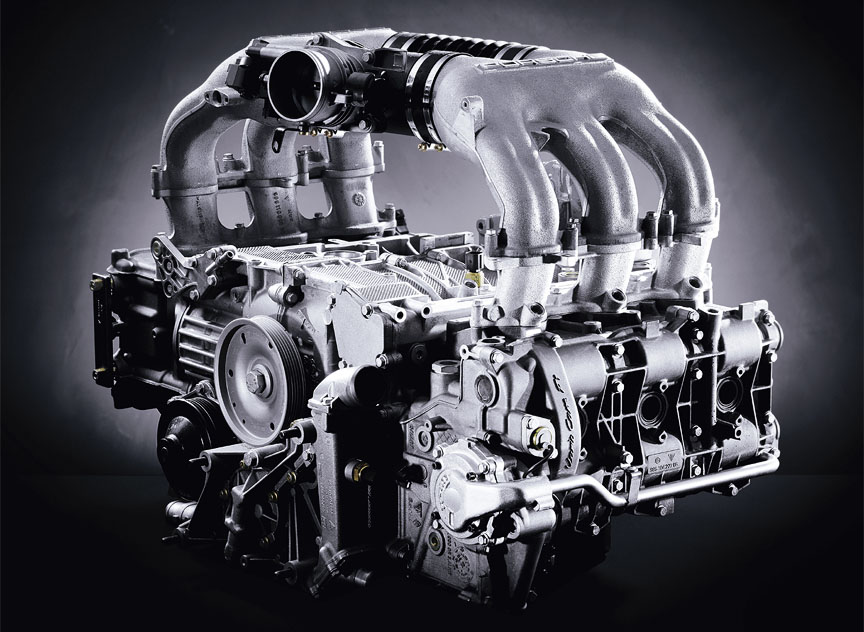
Here’s a list of the 996 Carrera engine problems (only Carrera, not GT3, Turbo or GT2):
1. 6th cylinder cooling issue. There seems to be a design flaw that the coolant is not circulating well in the this part of the engine. 6th cylinder is on the right side bank, closest to the cabin. The high temperature issue is local and therefore you cannot see the problem on the temperature gauge. You are unaware of the overheating in 6th cylinder until you start to hear some rattling from the engine. This means the cylinder has lost its surface layer, the cylinder is scratched and the piston clucks in the cylinder. This also means this cylinder is now burning oil. As the exhaust pipes are in X-shape, the exhaust gases from right side of the engine exit through the left side exhaust pipe. Oil residue starts to build up on the rear bumper above the exhaust pipe end. You now need a new block, or the 6th cylinder machined and a sleeve inserted.
2. Lubrication issue. 996 Carrera is the first 911 with wet sump, showing its Boxster engine origin. Wet sump engines are vulnerable to lateral forces (race track driving). Slightly insufficient lubrication together with slight cooling issue translates to a problem.
3. Intermediate shaft (IMS) brearing issue. Camshafts are run from the intermediate shaft that is driven by crankshaft. The intermediate shaft has a bearing that gives up at some point. When that bearing crashes, it completely destroys the engine because all camshafts get stuck and valves hit the pistons. There’s nothing to repair, a complete new engine is needed. Although Porsche has engineered the bearing to last forever and the bearing is not available through after-sales, other companies manufacture the bearing and it is advised to regularily replace the bearing (30.000 mile/50.000 km interval is hopefully safe).
It should be said that the X51 kit tries to extend the life of the engine, but it is not quaranteeing anything. The X51 does nothing to the IMS problem.
Final success for the 911 GT1 Evo (1997) came at the 1998 Petit Le Mans race on Road Atlanta. The Champion Motors car (chassis 993-GT1-005) driven by Thierry Boutsen/Bob Wollek/Ralf Kelleners scored 3rd after Ferrari and Porsche LMP1 cars. Something really spectacular had happened when the Porsche factory team 911 GT1-98 had gone airborne on the 236th lap. Before the race the car had scored pole position in front of LMP1 cars. The car wore number 26 as the winner in Le Mans, although it was chassis 001 – and its first and last race.
The Le Mans 24 hour race was not part of the 1998 FIA GT Championship, so Mercedes’ complete failure there didn’t have any effect on the championship. Porsches managed many podiums at the championship (Silverstone 2nd and 3rd, Dijon 2nd, Hungaroring 3rd, Suzuka 3rd, Donington 3rd, A1-ring 3rd, Homestead 2nd and 3rd, Laguna Seca 3rd), but Mercedes totally dominated the season by winning with 146 points in front of Porsche with 49 points.
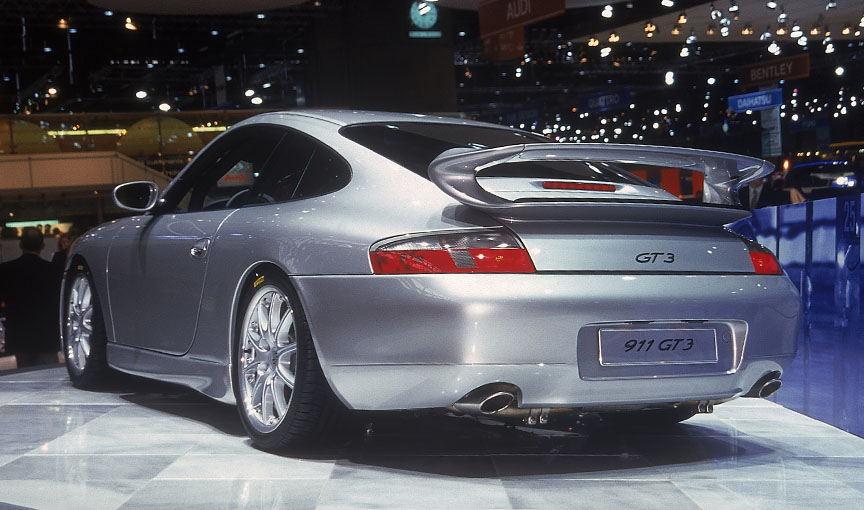
The street version of the 911 GT3 Cup car, the 911 GT3, was launched at the Geneva Motor Show in March 1999 (its exterior design was filed for a patent already in December 1997). The 996 GT3 was the successor to the 993 Carrera RS. Compared to the 993 Carrera RS 3.8 and the 996 Carrera 3.4, both 221 kW, the 996 GT3 was significantly more powerful at 265 kW. Although a bit heavier than the 996 Carrera – because of the larger wheels, brakes, bodykit and maybe a heavier engine and transmission – at 1350 kg/2976 lb the GT3 was still fit and remained the lightest 911 GT3 ever made. Unfortunately the GT3 was not sold in USA.
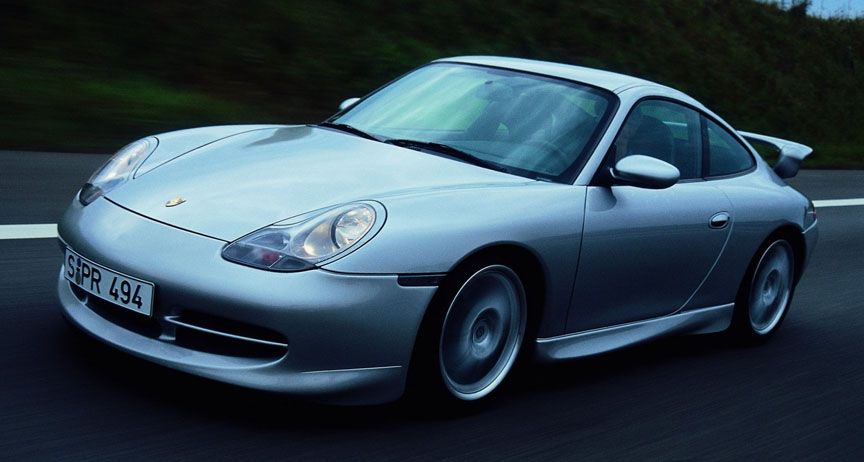
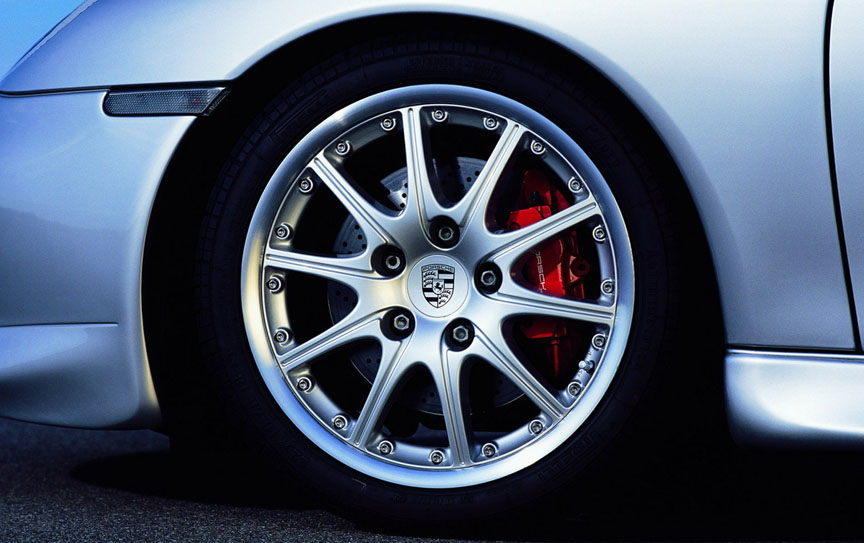
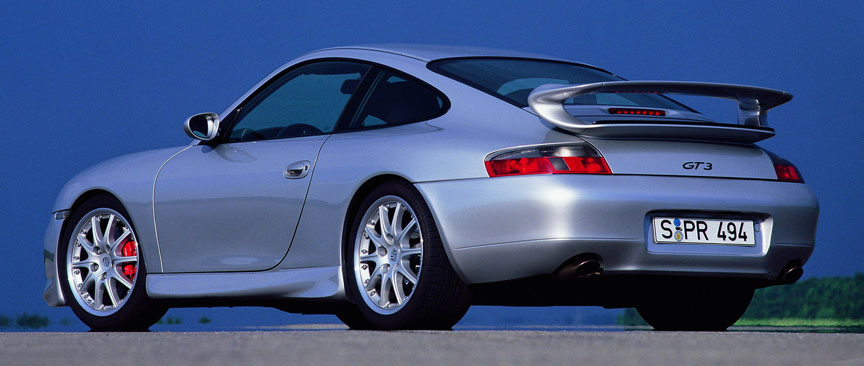
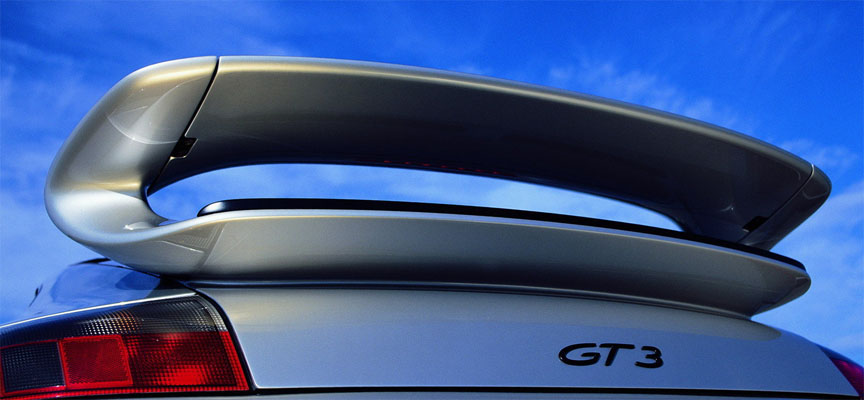
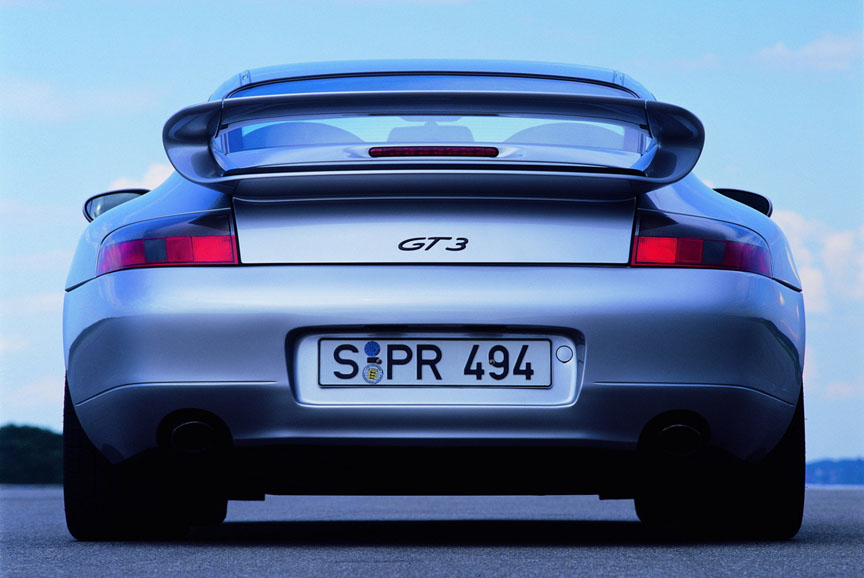
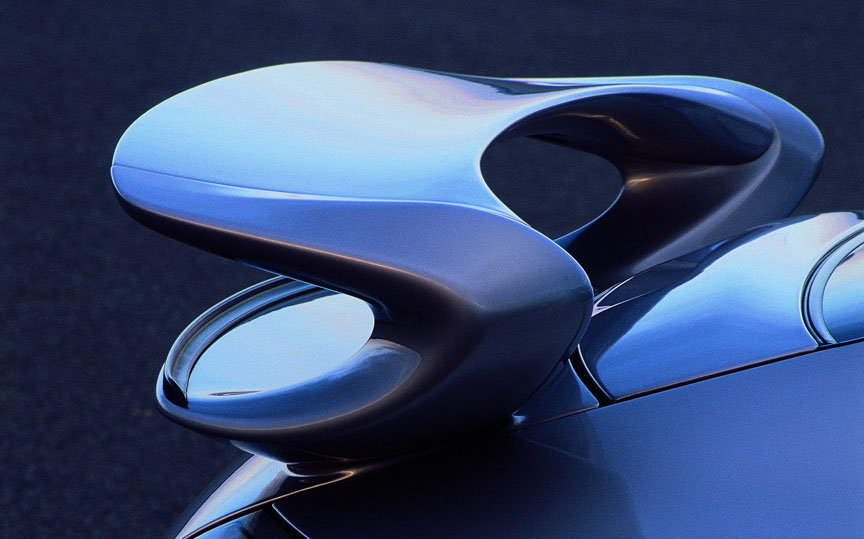
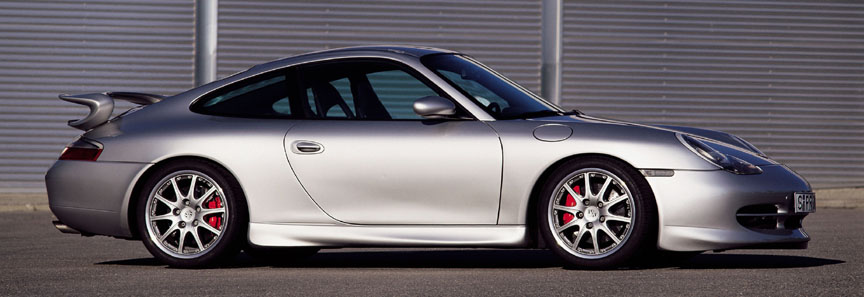
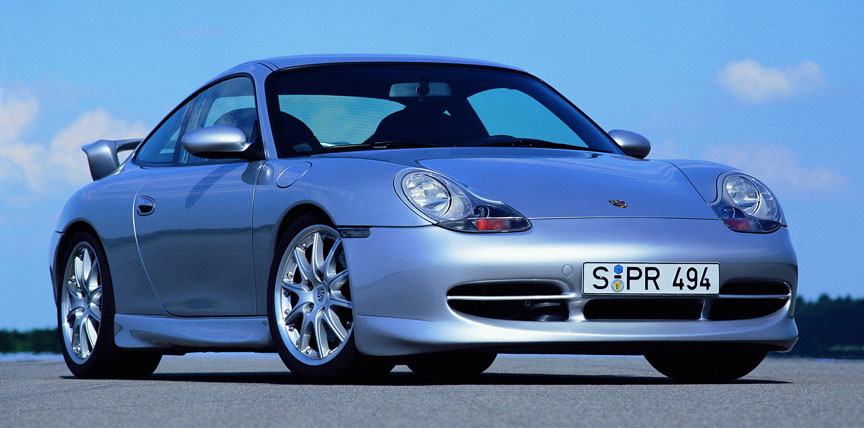
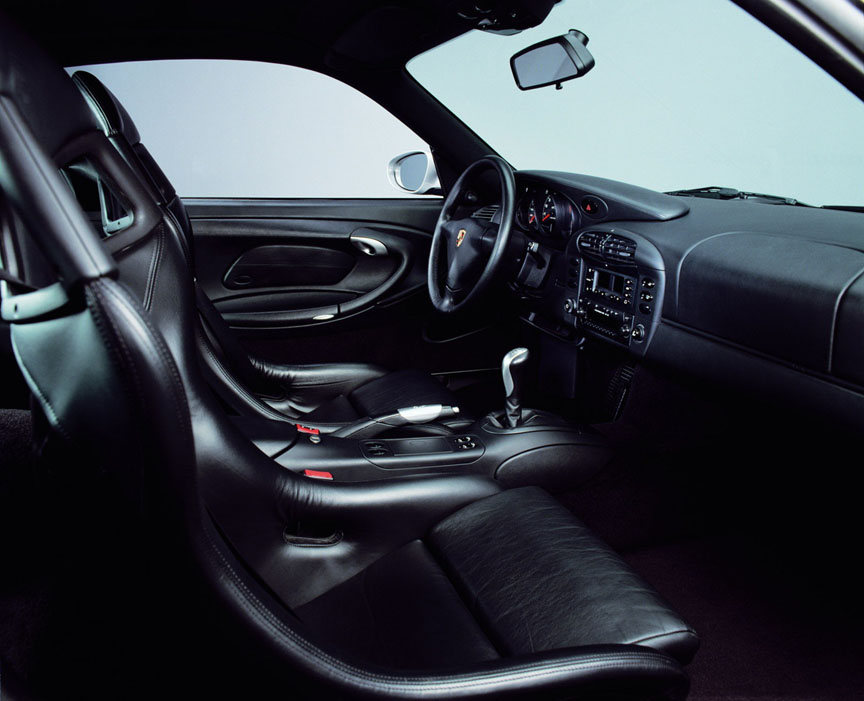
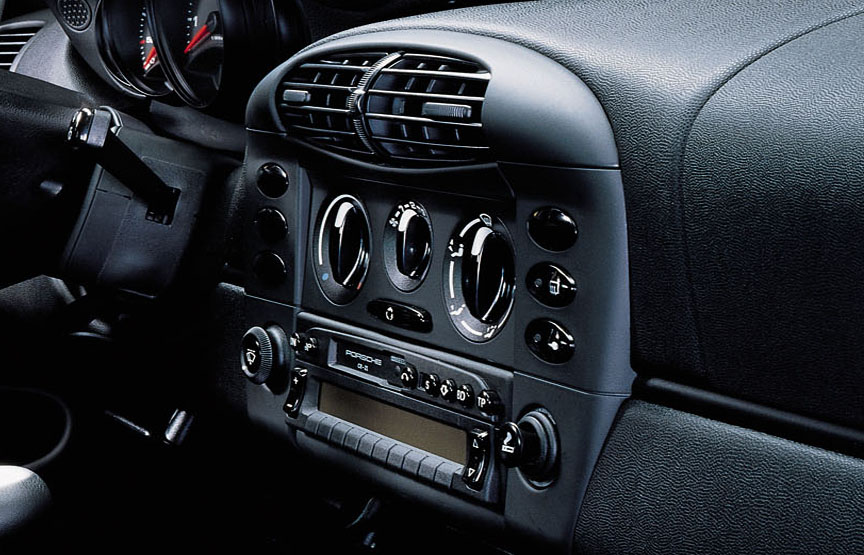
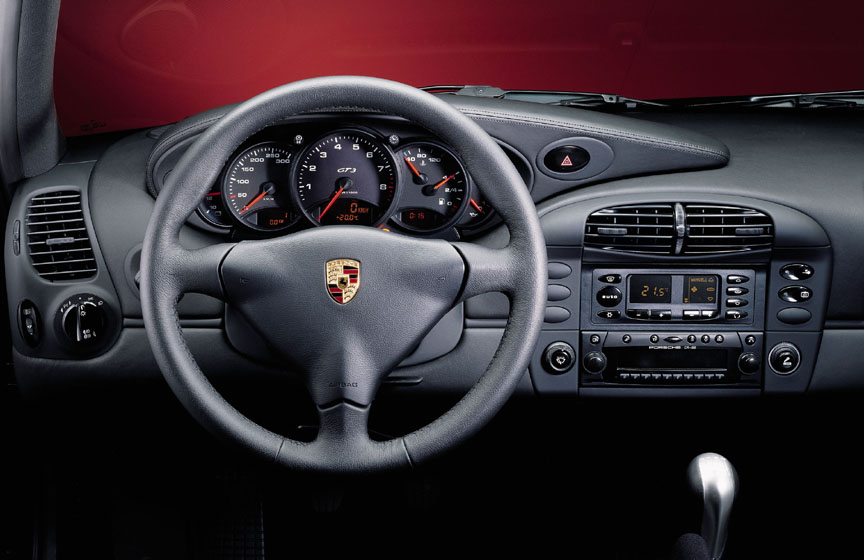
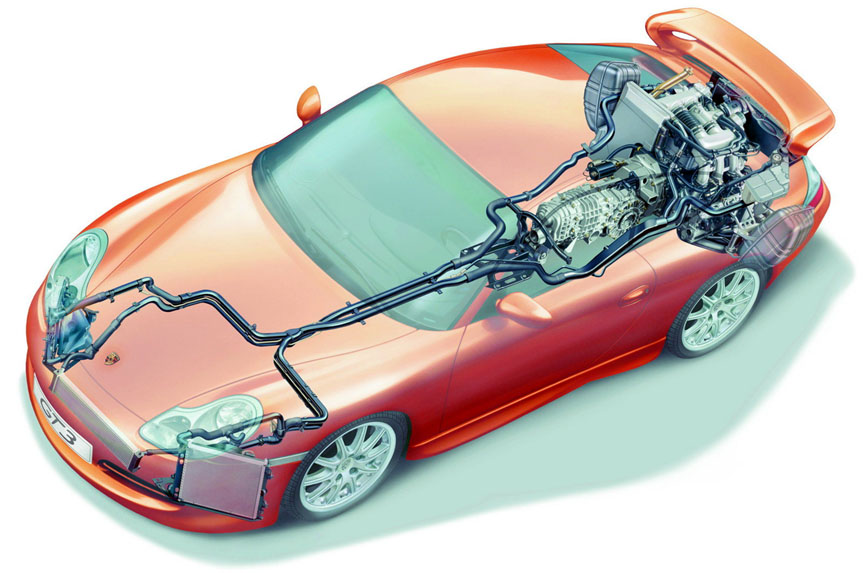
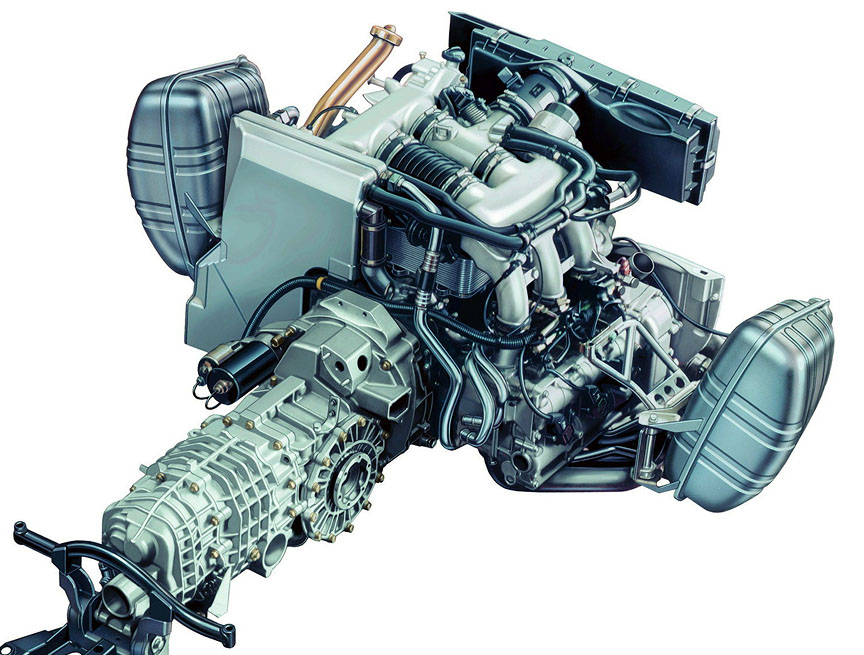
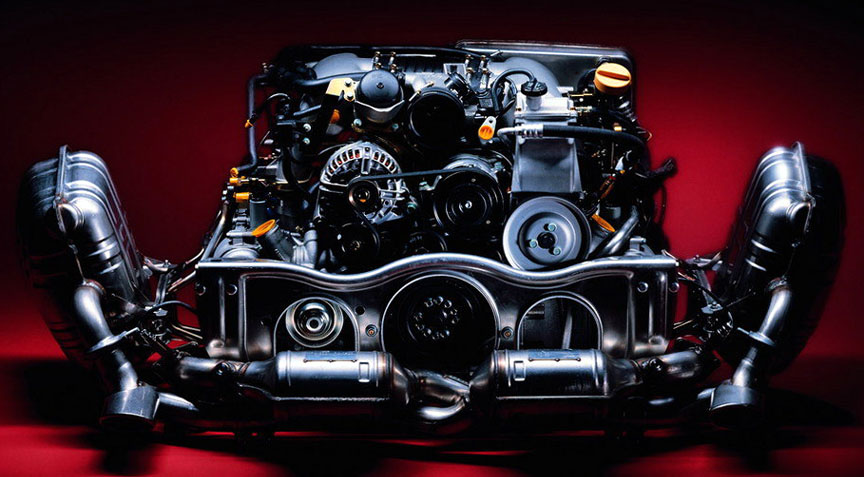
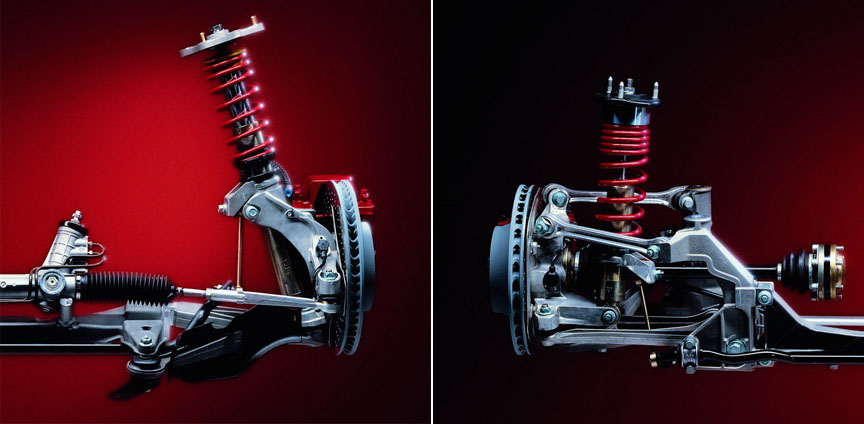
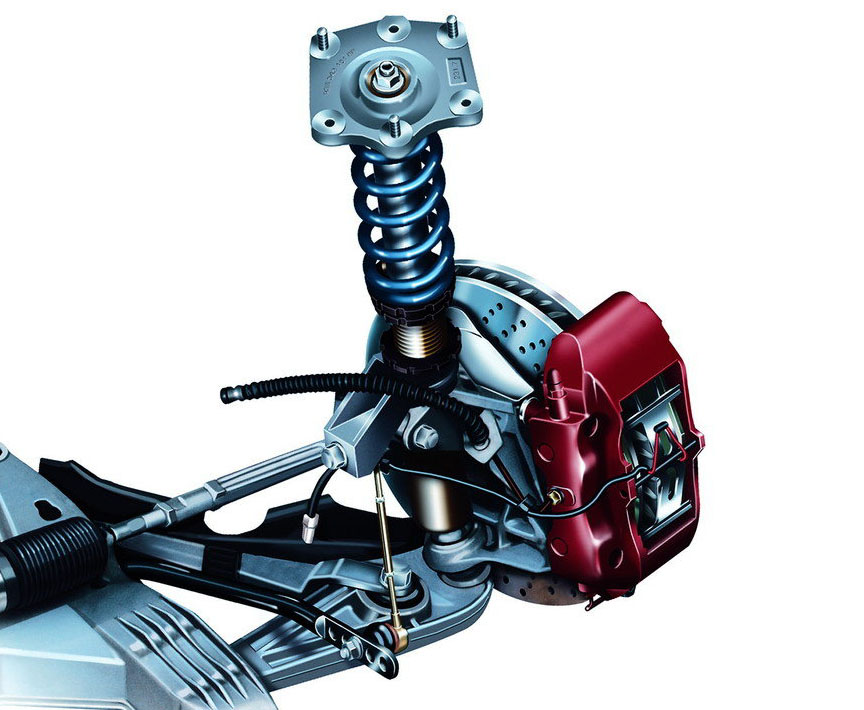
From the 996 GT3 Cup, a more powerful long distance racer was created for private teams called the 911 GT3 R. Although the engine size stayed at 3.6-litres, power was significantly up compared to the GT3 Cup, now at 301 kW. Pretty significant considering the engine is naturally aspirated. Weight could also be lowered. The GT3 R was first seen on the Le Mans test day in May 1999 and then at the 24 hour race in June. At the Le Mans there was a special GT-class for normally aspirated Porsches (993 GT2 competed in the faster GTS class). The GT class was won (13th overall) by Manthey Racing GT3 R driven by Patrick Huisman/Uwe Alzen/Luca Riccitelli.
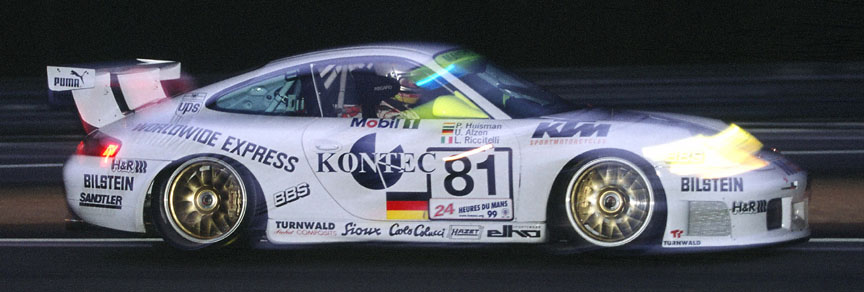
All Porsche Tiptronic cars got a conveniency feature in 1999 for 2000 model year – a manual 8 second override function, allowing the driver to shift gears manually via the toggle switches on the steering wheel even when the selector lever was in the automatic position.
In the end of 1999, the 911 Carrera 4 Coupé Millennium Edition was announced for year 2000. It was limited numbered edition of 911 cars, but not anything so special. The Limited Edition plaque on the centre console was the most value-adding item. It came with brown leather, dark burr maple, shiny 18″ wheels and special Violet Chromaflair paint. Depending on ambient light conditions, the color of the car changes from black to dark green to an elegant shade of violet. Instead of the “Carrera 4” script on the back of the car it reads “911” – nice!
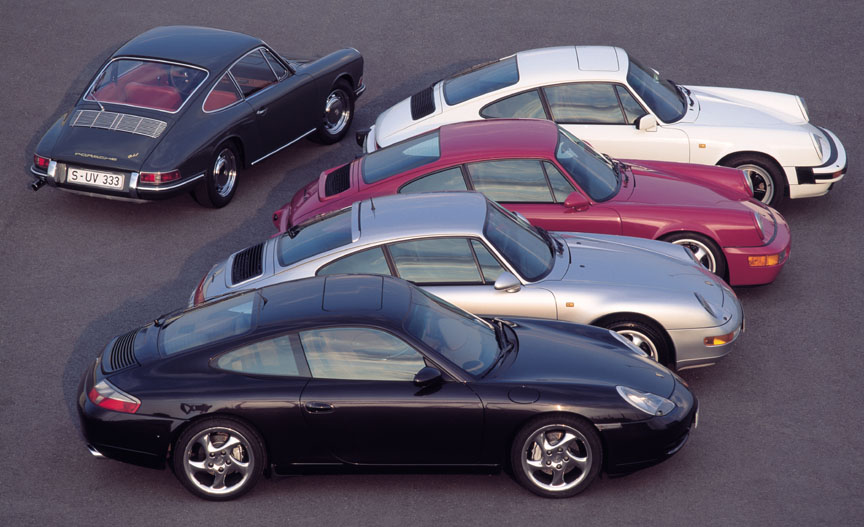
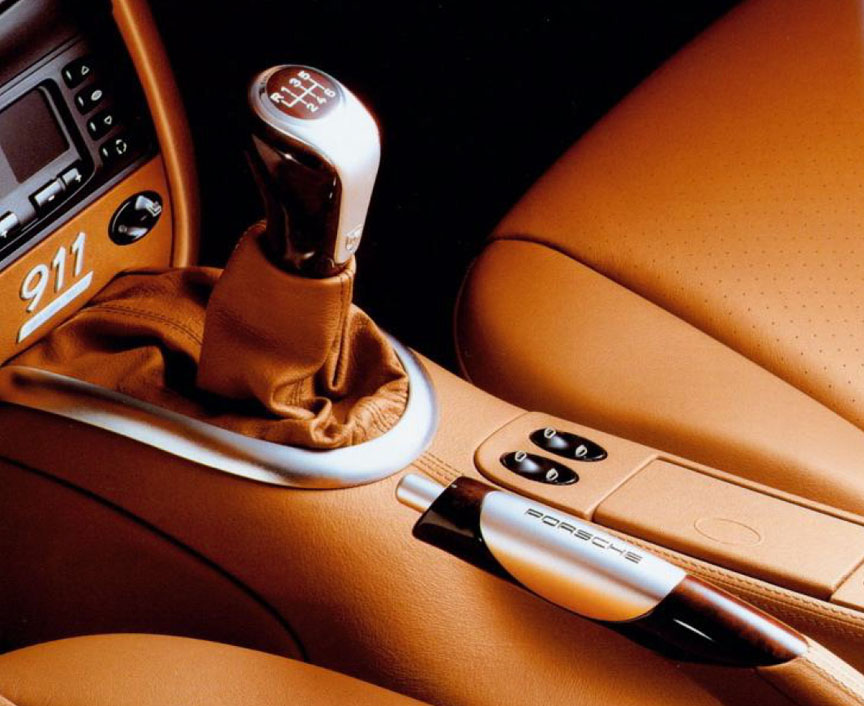
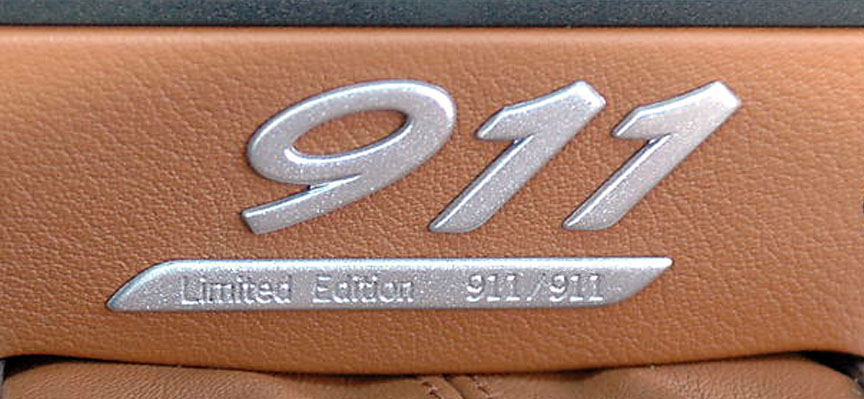
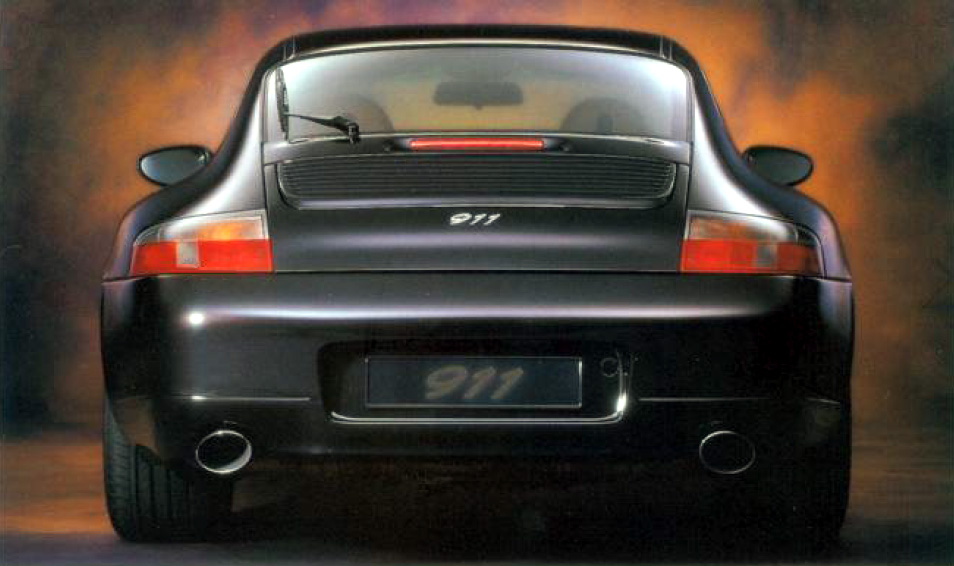
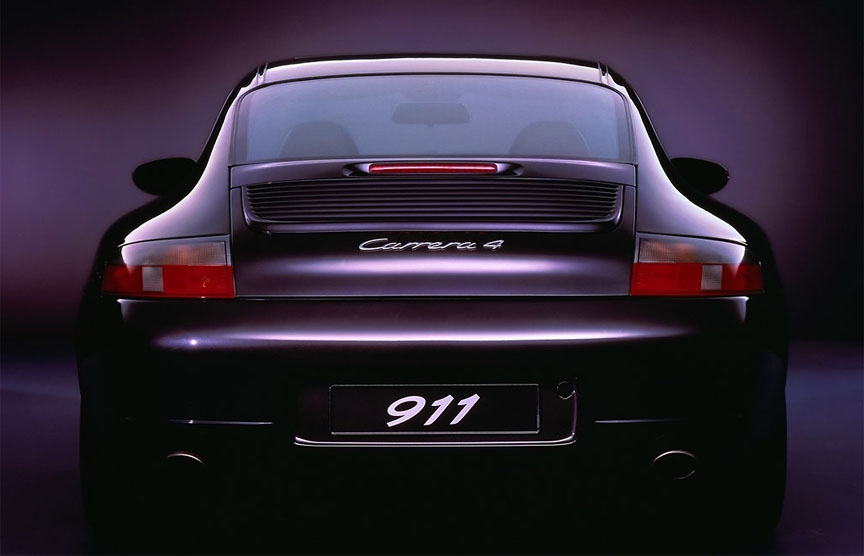
The 1999 Porsche Supercup was again won by Patrick Huisman in front of Oliver Mathai. In 1999, the Carrera Cup races were also contested with the 996 GT3 cars like in the Supercup already a year earlier. The 1999 Carrera Cup Germany title went to Lucas Luhr and 1999 Carrera Cup France victory to Dominique Dupuy. The reason the cars were named as GT3 is a bit strange. Either the cars should have been called as 996 Carrera Cup or the series as Porsche GT3 Cup.
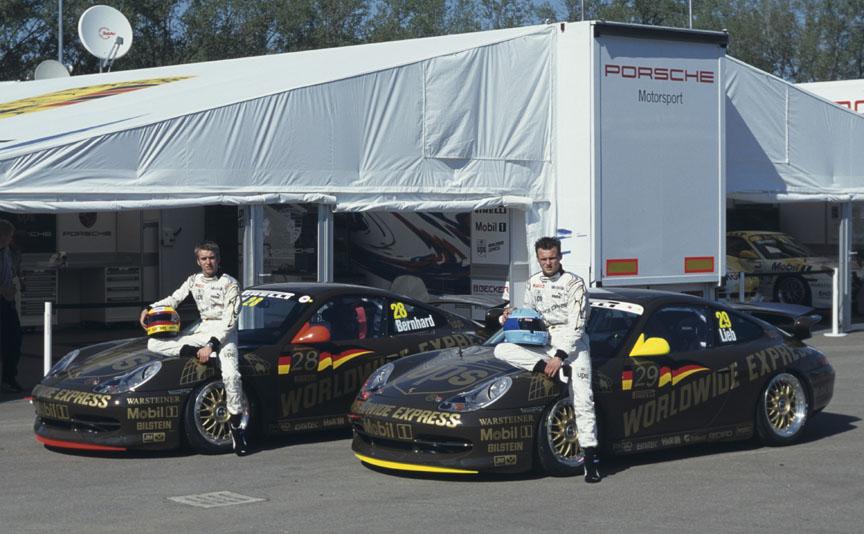
In the summer of 2000, Porsche announced a press release saying “Fresh evidence of the reliability and durability of Porsche sports cars: in the latest edition of the TÜV (MOT) report, the Porsche 911 holds 1st place as the most reliable vehicle in the category of cars that are 10-11 years old”. This was the quality of the 964. And therefore, the second hand 964 Carrera is much more expensive than a second hand 996 Carrera.
Although the production of the 996 Turbo started finally in June 2000 (as a 2001 model), there were many signs that it is coming. The design was patented in May 1998, official photos were unveiled in June 1999 and the car was actually shown at the IAA Frankfurt Motor Show in September 1999, but it wasn’t possible to order one yet. The press launch finally happened in March 2000 with the production starting a few months later. It was planned to build 2500 996 Turbos in the 2001 model year (from 8/2000-7/2001), but the order books boiled over and the production was rised to 4000 a year. At 309 kW, the 996 Turbo got less power than the 993 Turbo WLS1 and WLS2 had had, but it still was an insanely quick supercar. It had the heavy duty problem-free dry sump engine. It was even written in the press release that the engine in the Turbo is not a turbocharged version of the Carrera engine.
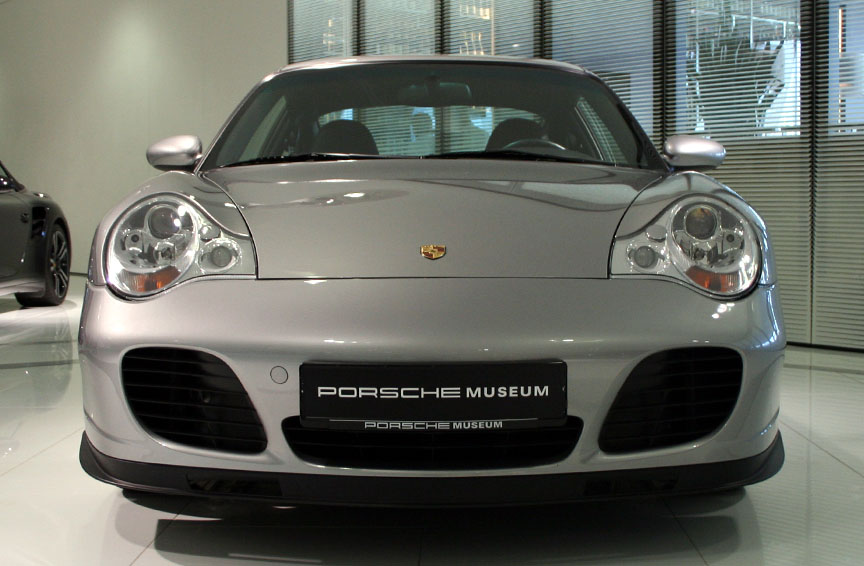
996 Turbo was the first car in the world to have bi-xenon headlamps (high beam also with xenon technology). The 996 Turbo was priced as the 993 Turbo or even a bit lower and considering it was a better every day car, the waiting list soon grew to 1.5 years. By many, the 996 Turbo was considered as the best new sports car in the world as it had supercar performance, infinite durability, reasonable maintenance costs similar to any other German make, and finally – and maybe most importantly – 4 seats. Something that you would not see in any other supercar. 2 seat cars are for drivers with only one friend. Be Porsche praised for its high-end 4-seater sports cars!
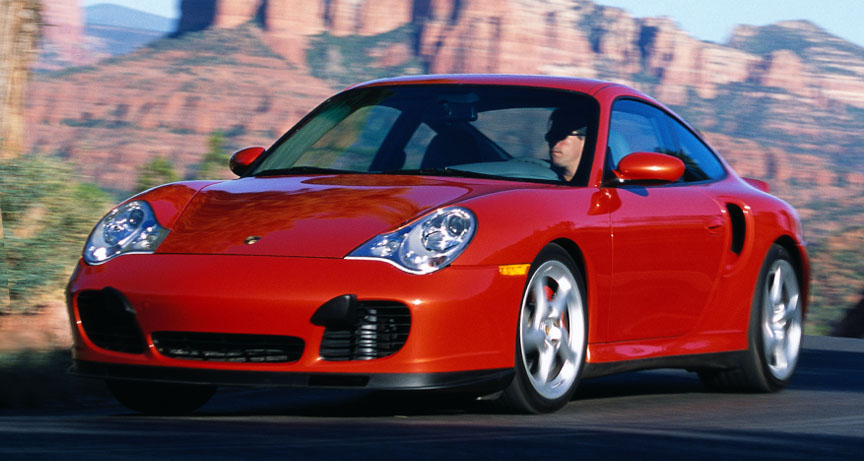
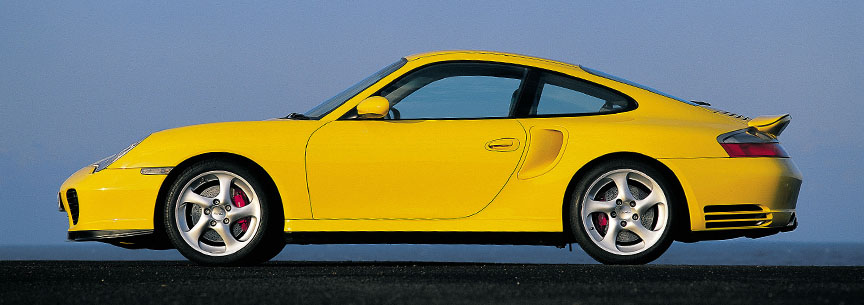
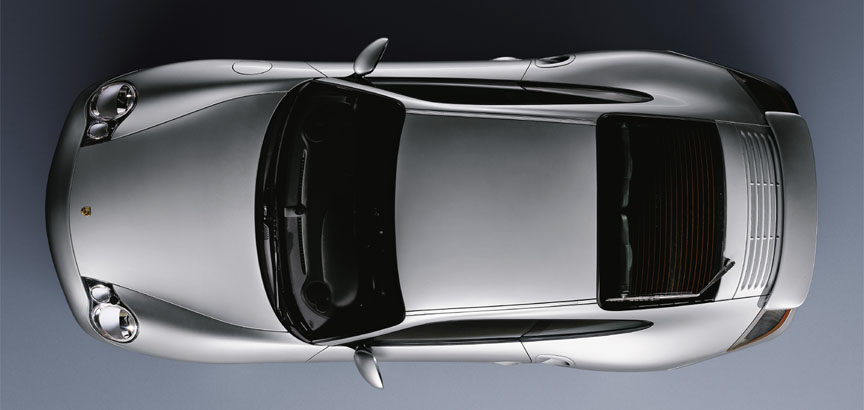
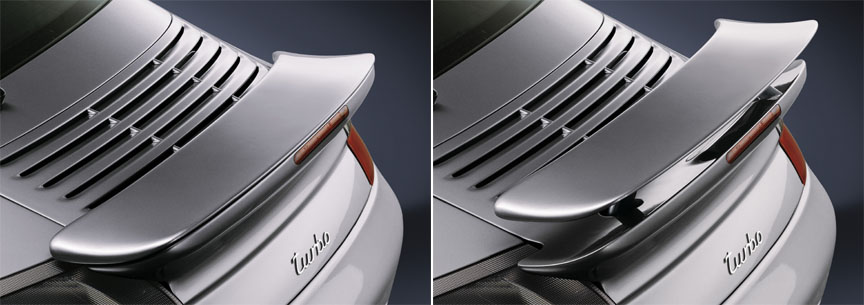
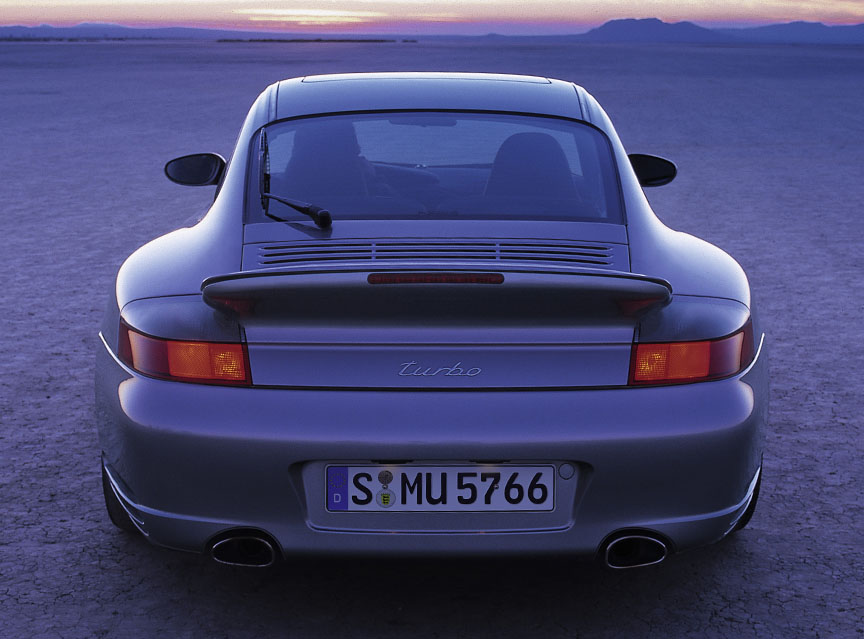
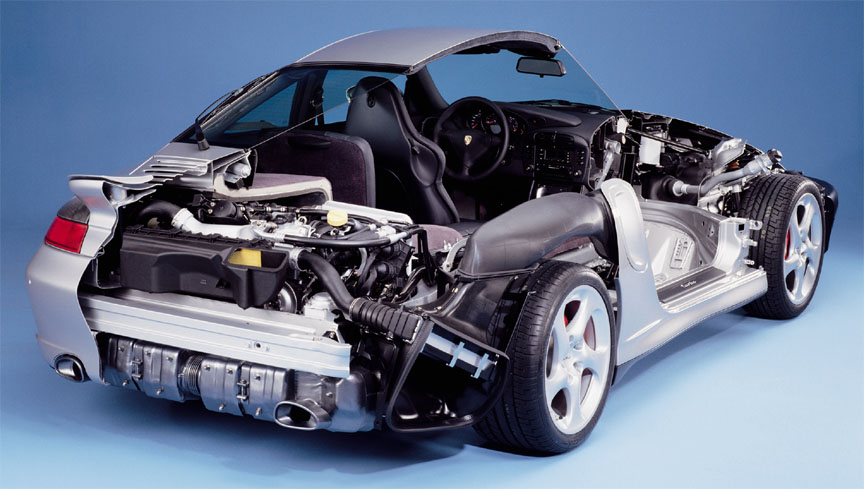
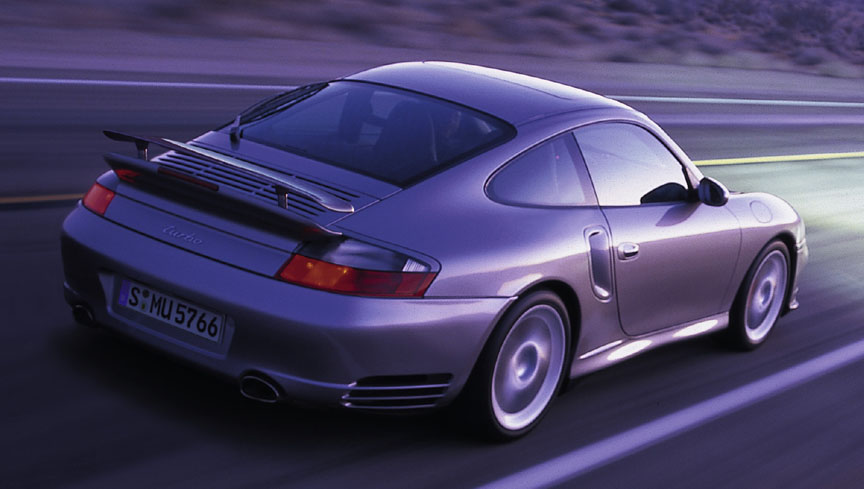
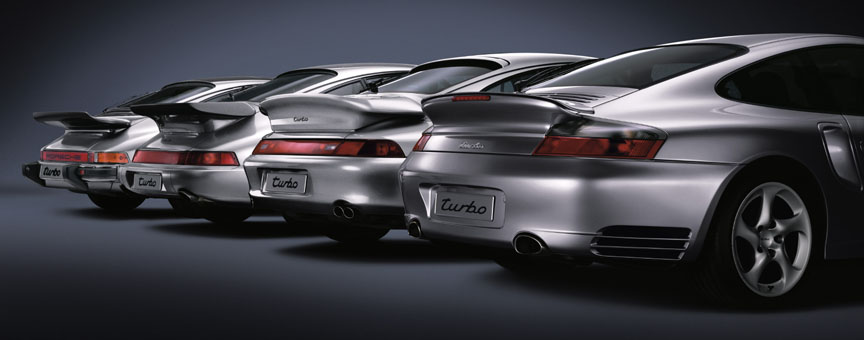
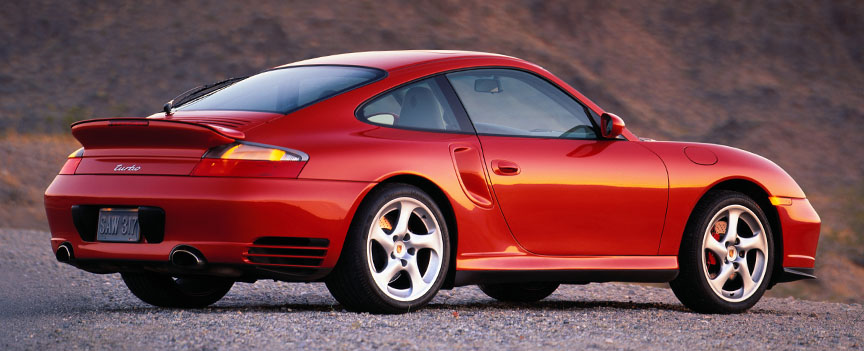
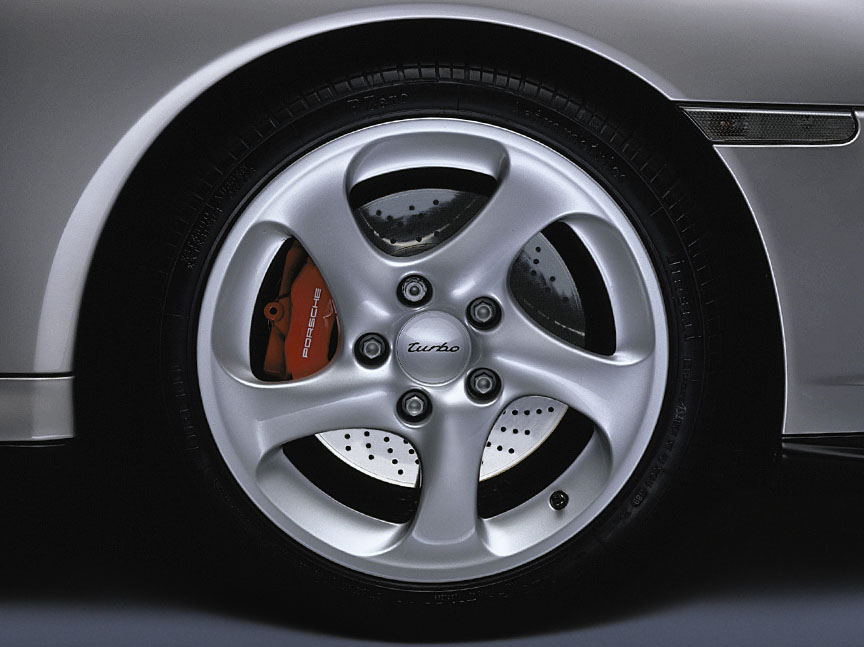
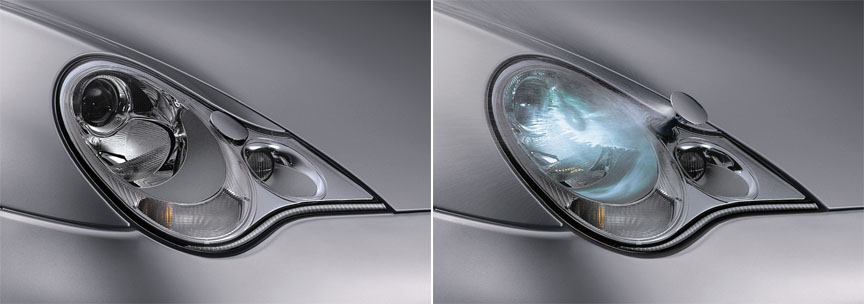
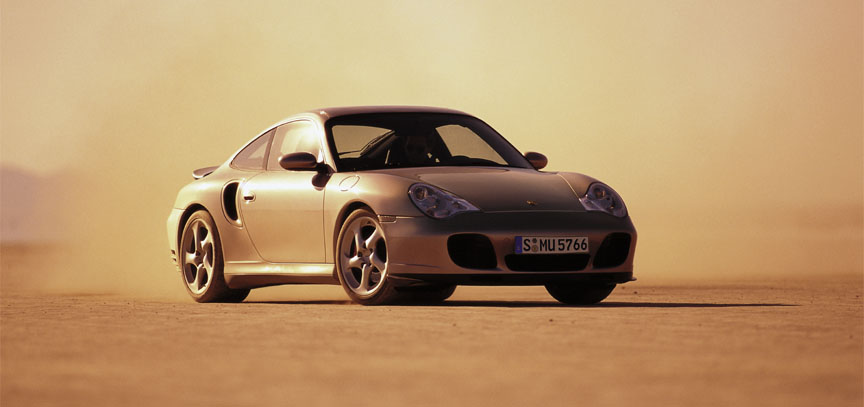
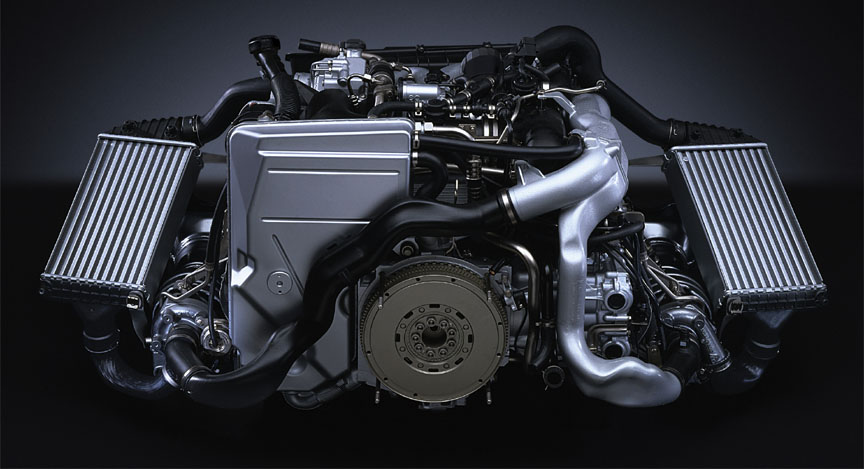
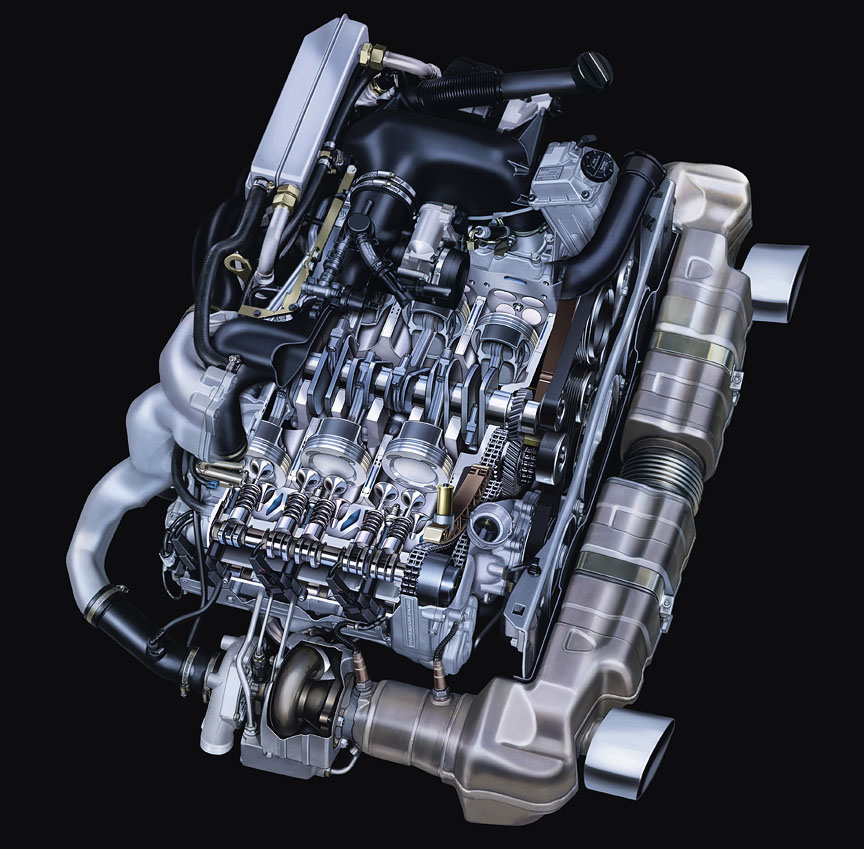
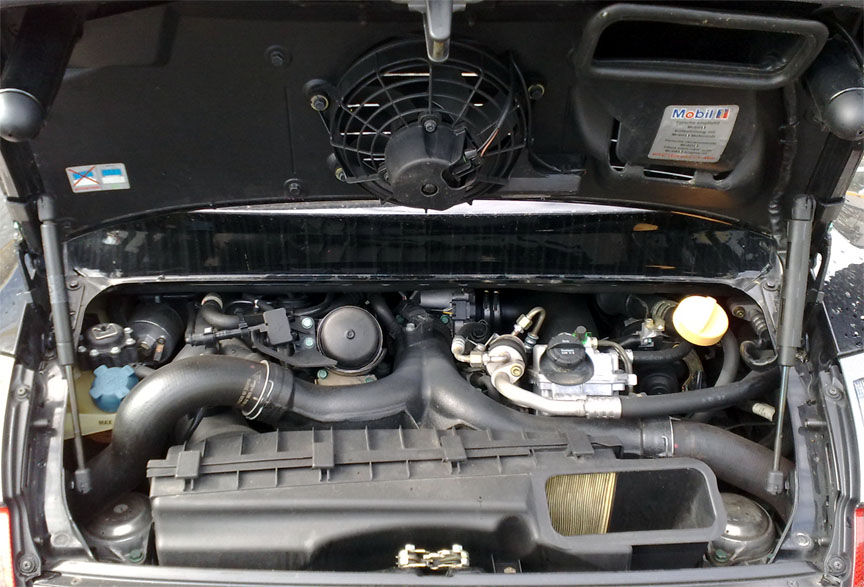
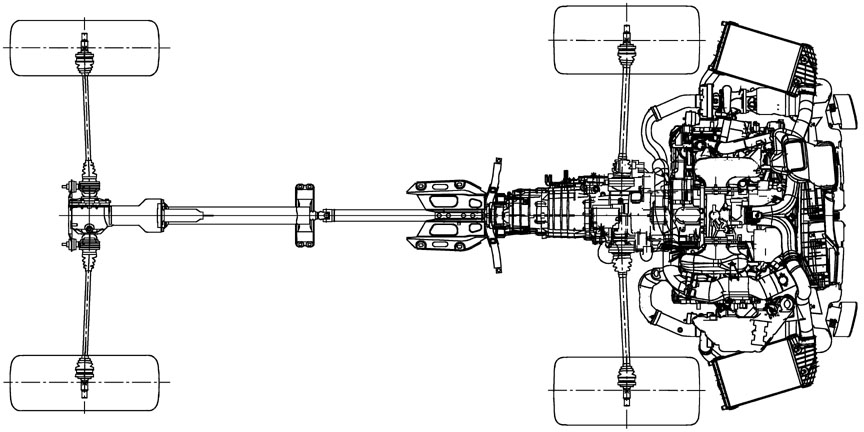
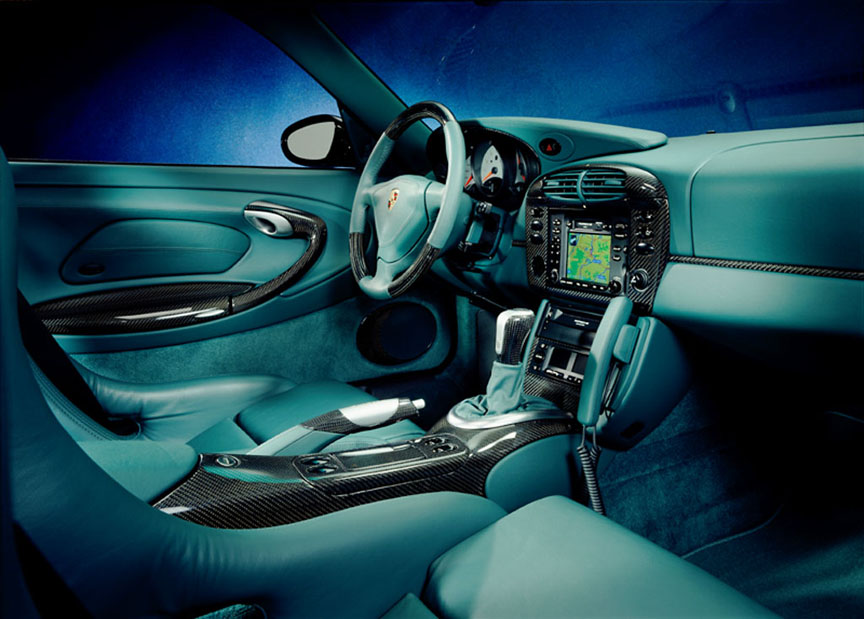
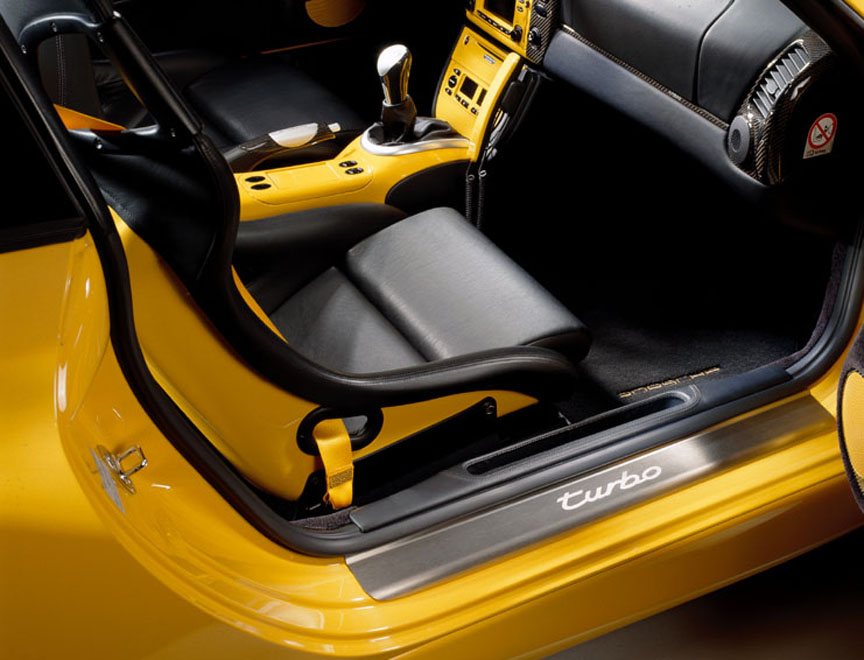
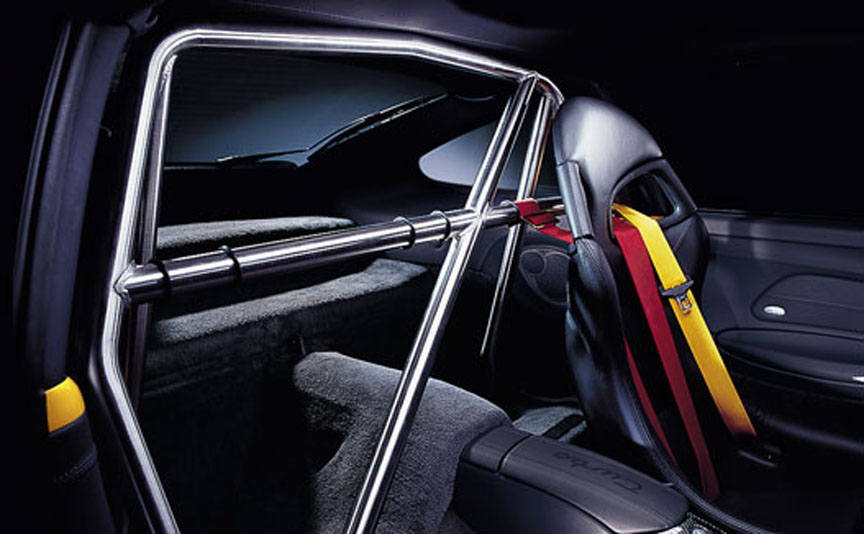
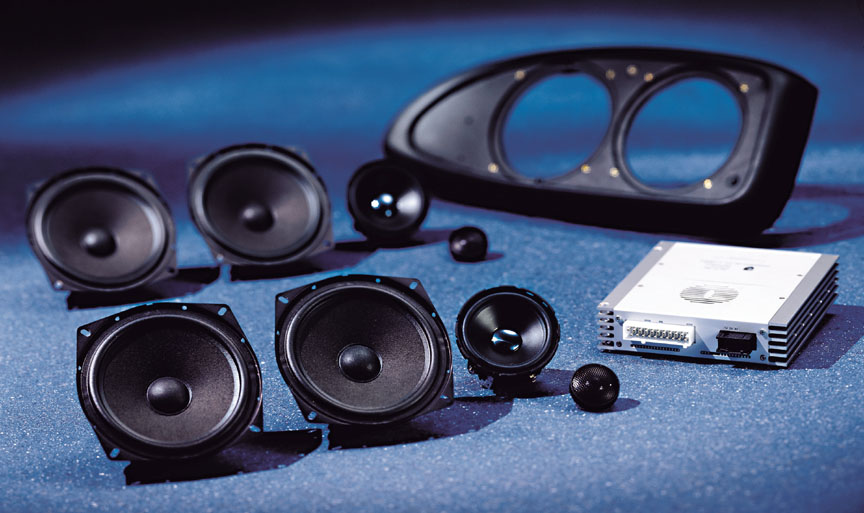
If you have driven the 996 Turbo with Tiptronic, you have noticed the car is not so bad compared to the manual transmission version as the 996 Carrera Tiptronic is compared to the manual. Your feeling doesn’t lie – the Tiptronic in the Carrera is built by ZF, while the one in the Turbo comes from Mercedes-AMG (just that it has a shaft for front drive plus an external oil cooler). The MB 5G-Tronic has 250 shift programs for different driving styles and conditions while the ZF Tiptronic in the Carrera has 5. With quicker gas pedal action, the transmission responds by raising shift points to hold each gear longer for crisp response and power. The Mercedes-AMG gearbox has 2 reverse gears. When you start to drive with the cold engine, 1st forward and 1st reverse gears are used to quickly warm up the engine. With the warm engine the car moves away in second aswell as it uses 2nd reverse gear when driving backwards.
Soon after the 996 Turbo production had started, carbon fibre reinforced silicon carbide brake discs were added to the option list. The new brake discs were manufactured by SGL Carbon AG. The brake system with ceramic discs and yellow callipers was called PCCB – Porsche Ceramic Composite Brakes. The PCCB discs are two times lighter than the steel units which means unsprung masses are significantly reduced (minus 20 kg/44 lb all corners combined).
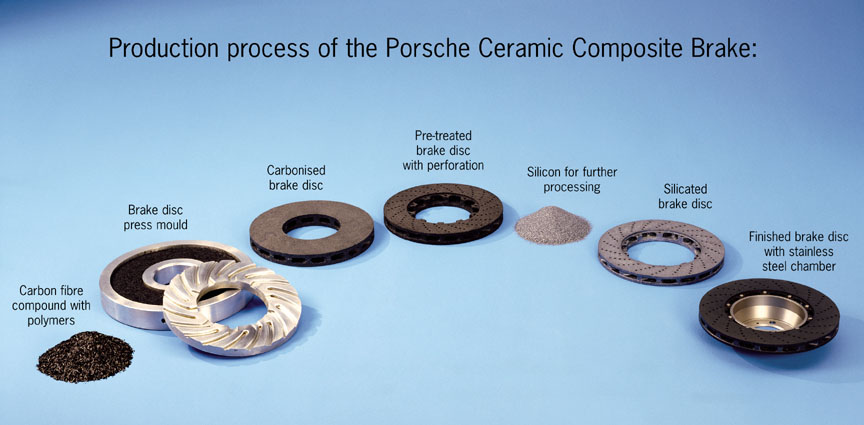
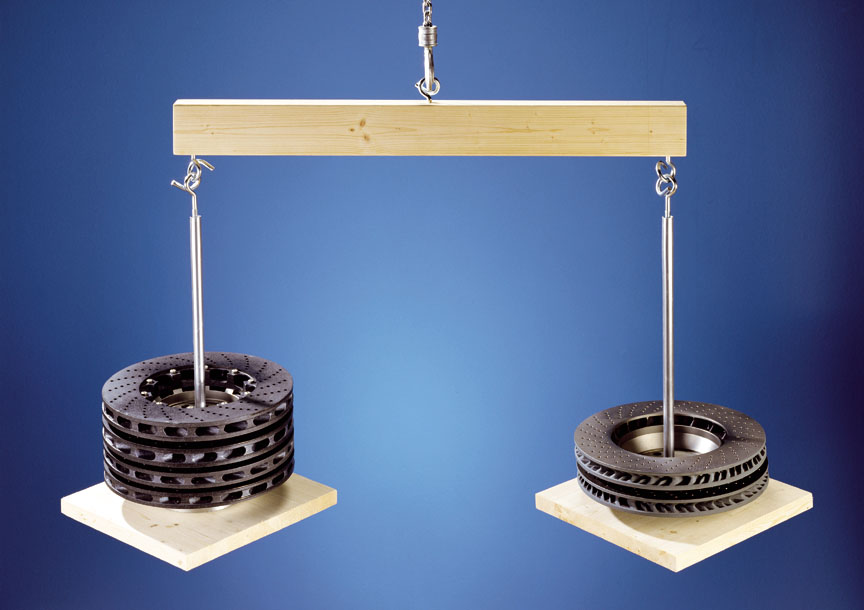
An early advertising from August 2000 optimistically said the ceramic discs should last 200.000 miles/300.000 km. Unfortunately the discs had serious durability issues that couldn’t be cured in years of further development. Replacing 4 ceramic discs as spare parts costs as much as a new VW Golf.
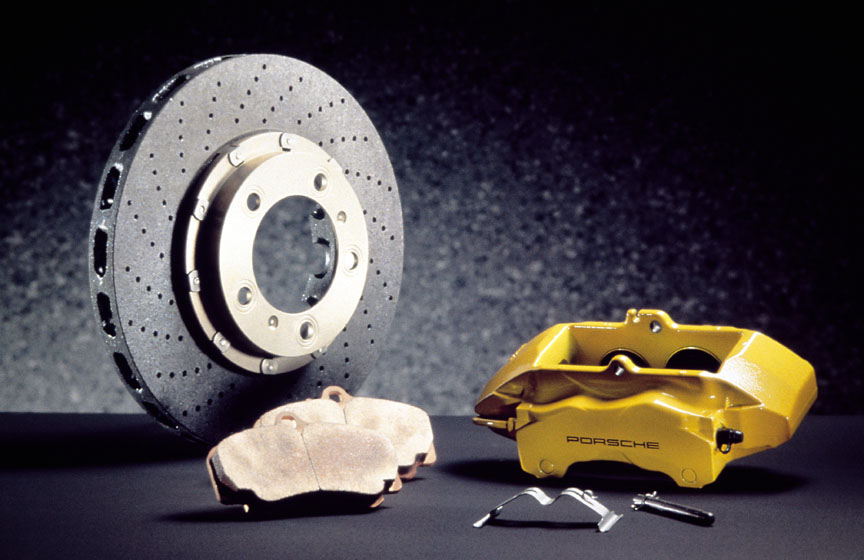
The 2000 Porsche Supercup was won – for the 4th time in a row – by Patrick Huisman! The 2000 Carrera Cup Germany victory went to Jörg Bergmeister and 2000 Carrera Cup France victory to Christophe Bouchut.
The Porsches sold in the USA had 4 year/50.000 mile (80.000 km) warranty and in Europe 2 year/100.000 km (62.000 mile) warranty. The US-versions have bumperettes (bumper extensions) demanded by DOT. The US Department of Transport does not have the top specialists as they have made many unreasonable demands for car manufacturers over the decades. The 996 Turbo is designed in Germany where there is no speed limit on highways. These cars are legally driven at top speed (190 mph/305 km) and they have the needed strength built into their bumpers. Now, US DOT tells that the bumpers need to be upgraded with additional pads for USA where the cars can drive only up to 30% of the speed allowed in Germany. As long as we prefer the comfort of not saying anything and not helping the government institutions, the car manufacturers have to build uglier cars for America.
From 2001 model year the front and rear lids became electrically openable instead of the earlier cable version. This also meant, now it was possible to open the front lid from the remote control in the key. At the same time came the interior LED orientation lights for ignition lock, center console and interior door handles. 2001 model year also brought optional automatically dimming interior mirror.
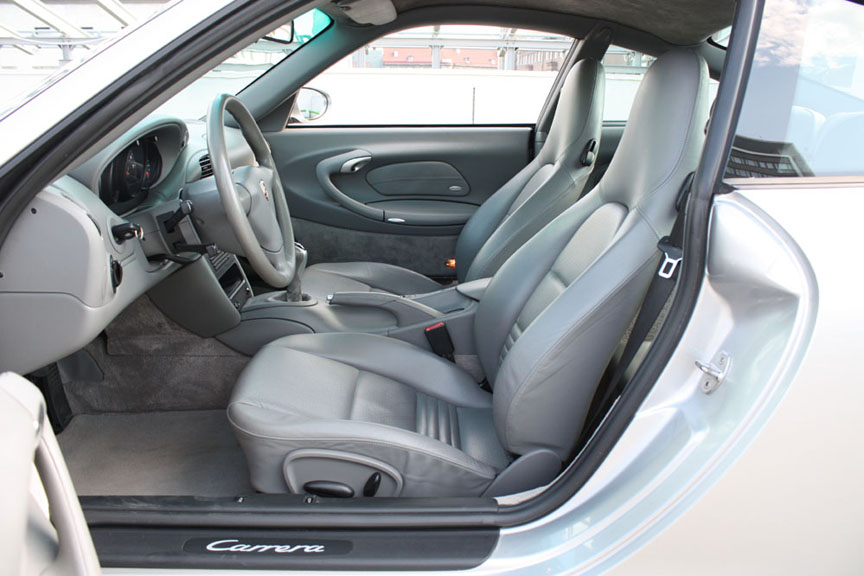
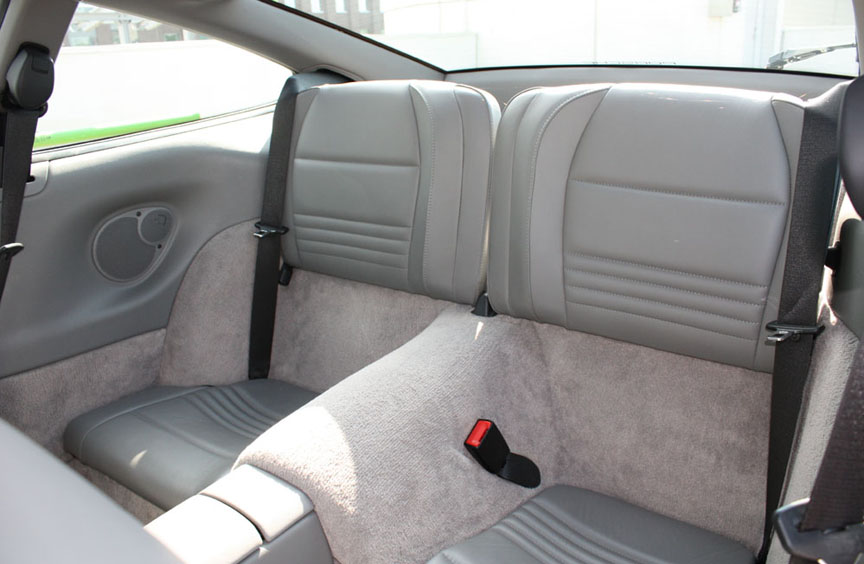
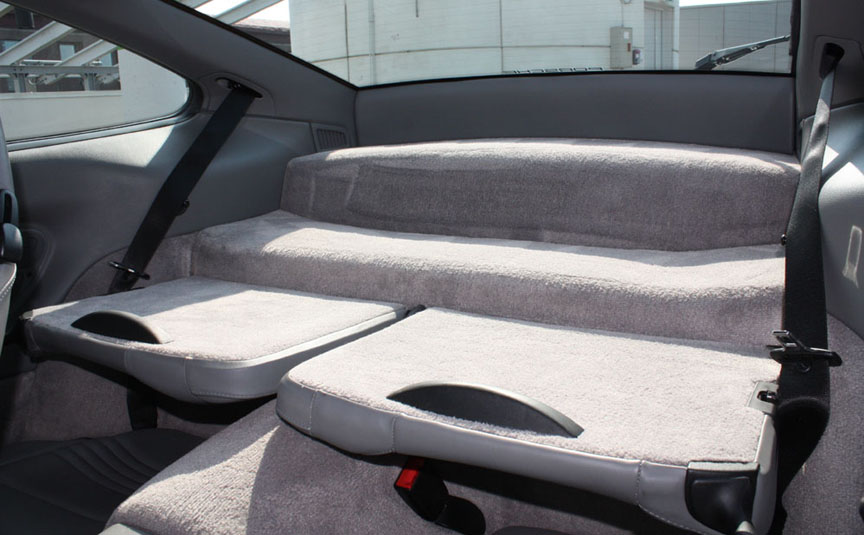
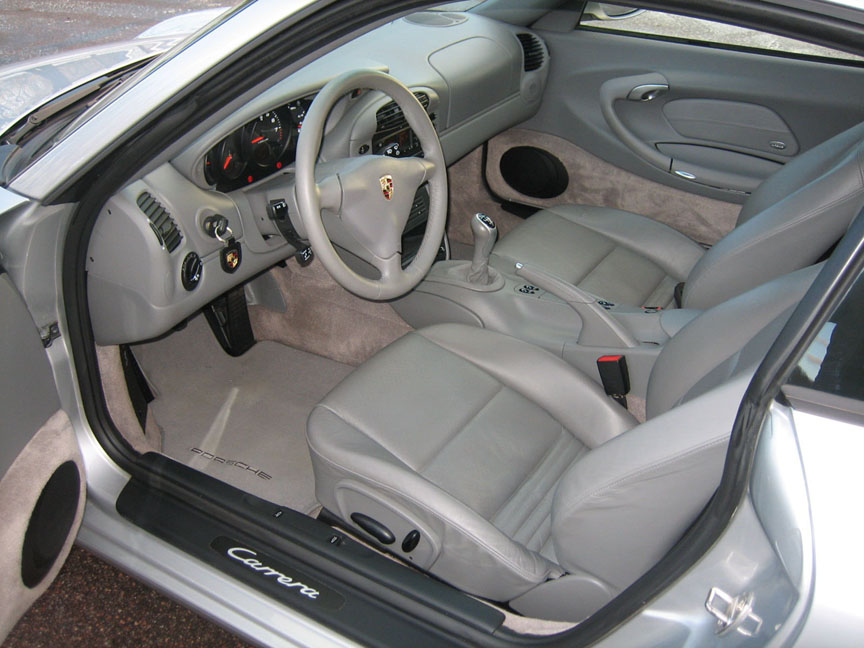
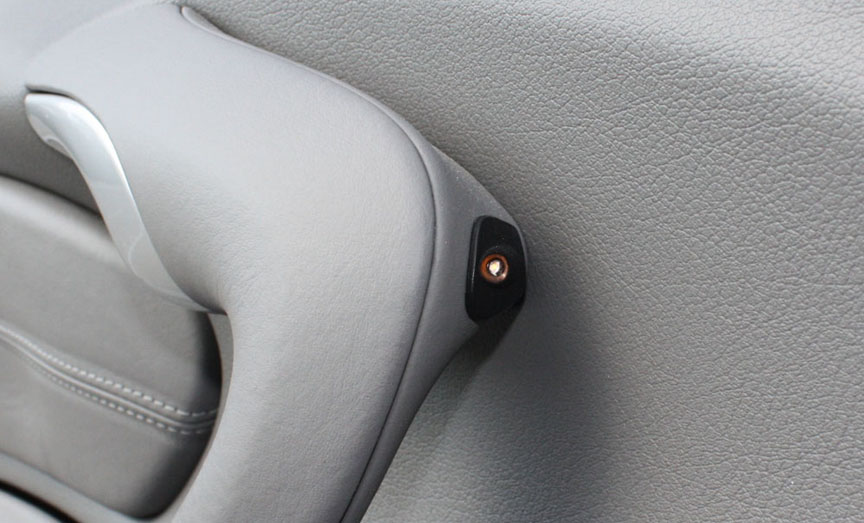
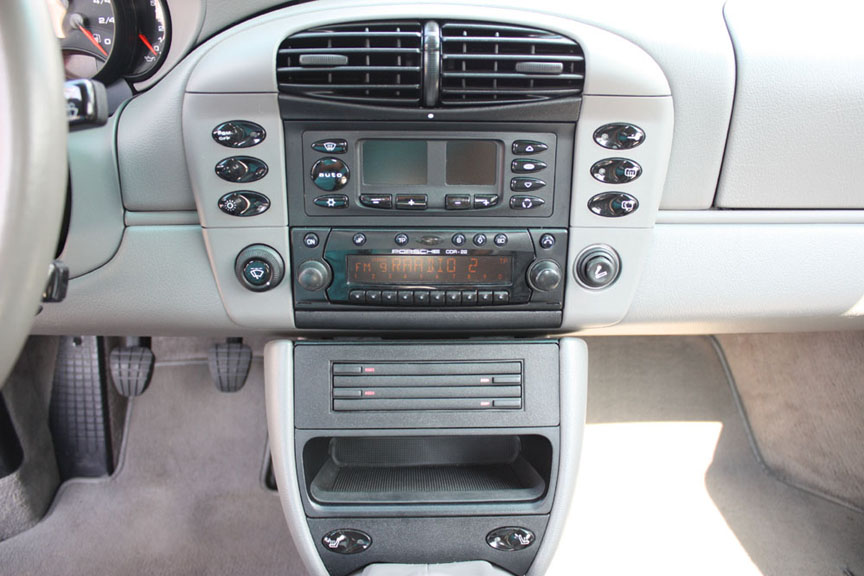
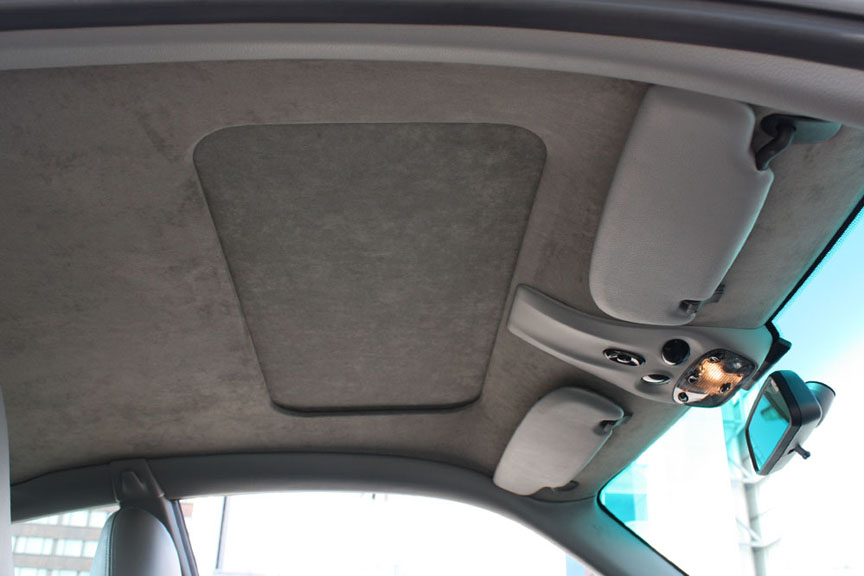
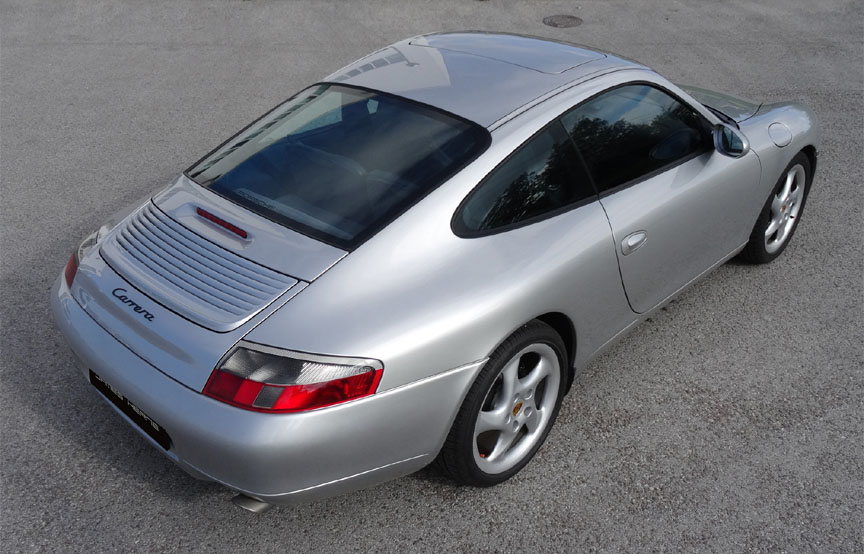
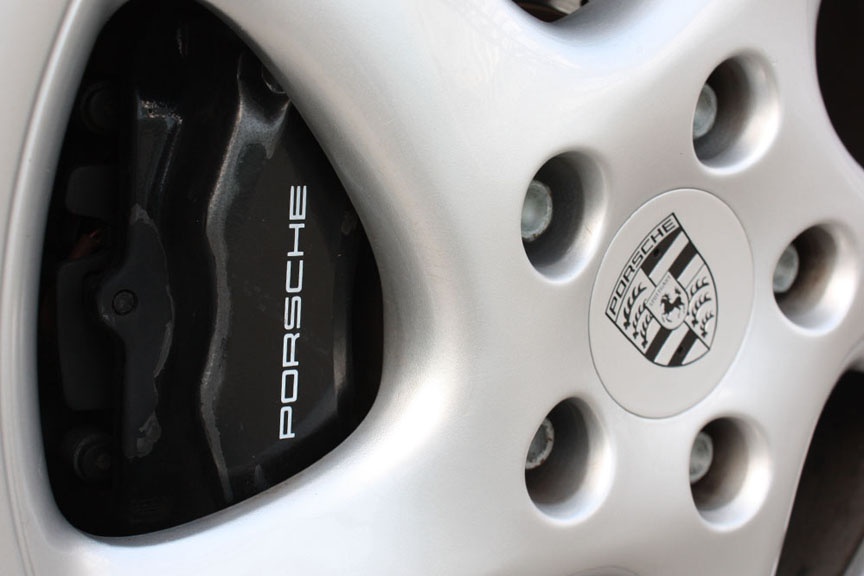
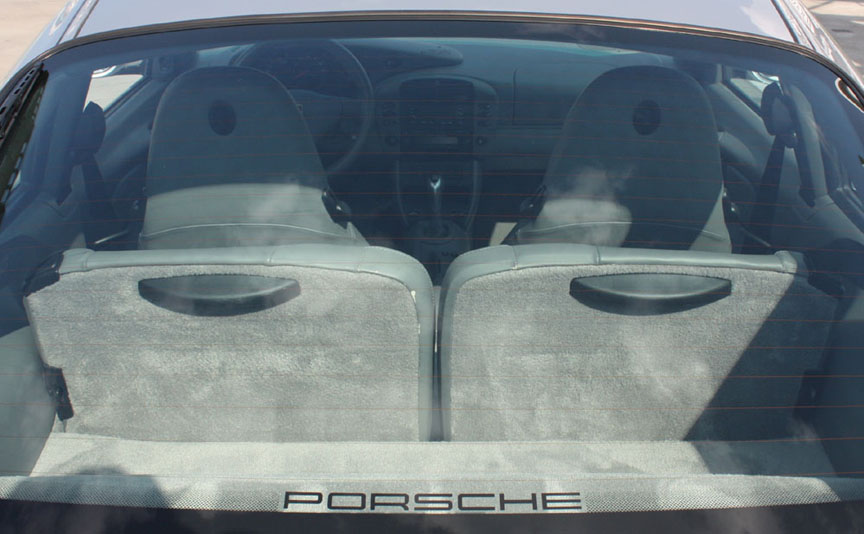
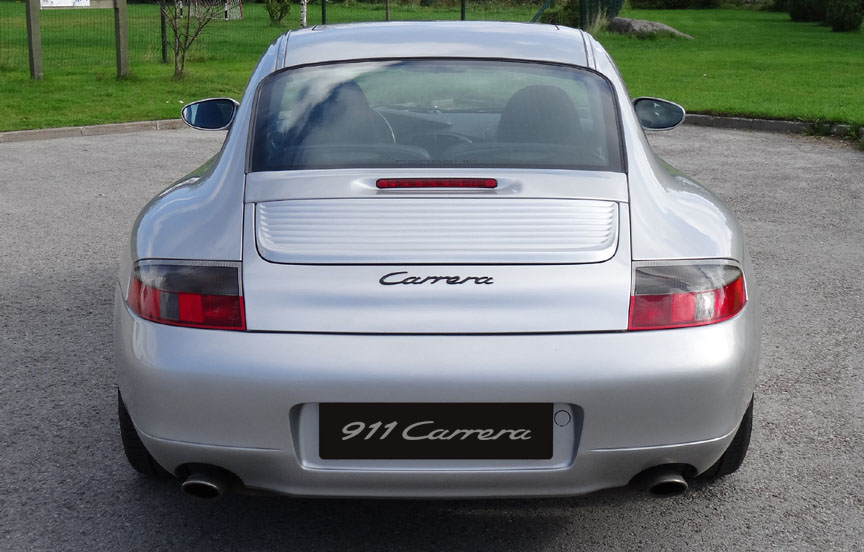
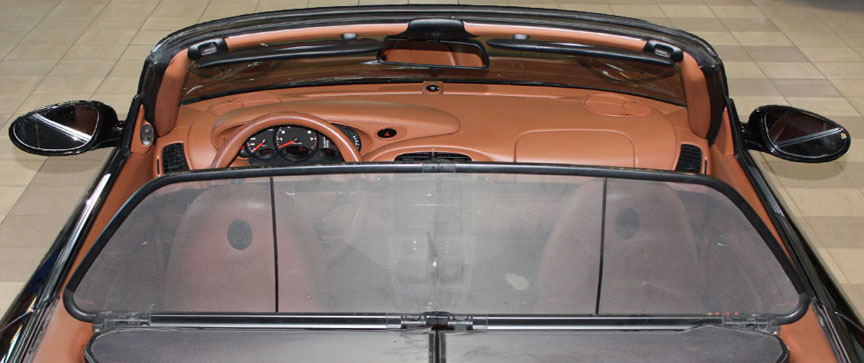
For the 2001 season, the 996 GT3 Cup car got large fixed rear wing which more than doubled downforce at the rear axle. Heat dissipation from the engine, gearbox and brakes was significantly improved. The front section channels the hot air from the enlarged central radiator upwards through slots in the upper part of the front spoiler. A gearbox cowling, adopted from the 911 Turbo, improved the cooling. Modifications brought the engine closer to the road version – the standard hydraulic valve drive replaced the earlier racing component. The GT3 Cup car accelerates to 62 mph/100 km/h in under 4 seconds. The top speed is set by the gear ratios at 178 mph/286 km/h.
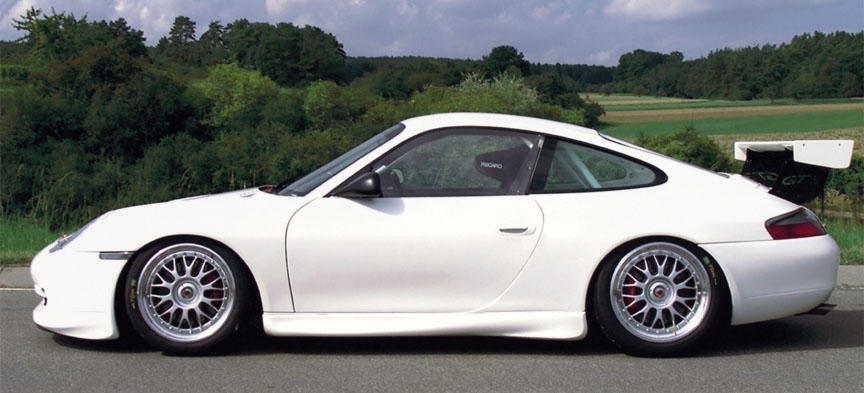
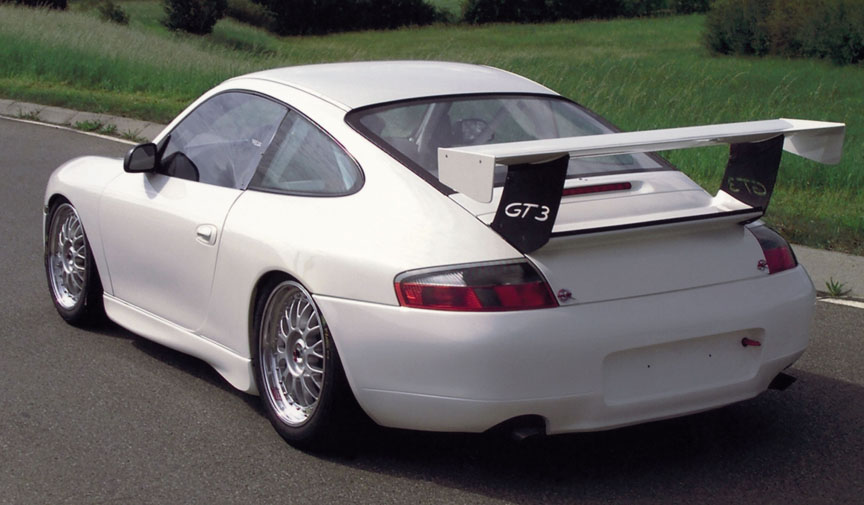
For the 2001 season, another GT3 was created. After the GT3 Cup, GT3 street and the GT3 R came the 911 GT3 RS (not to be confused with the later street car with the same name). The successor to the GT3 R, the RS, had wider wheel arches. The power remained almost the same. Only the GT3 R and RS racing cars were completely built in Weissach (the GT3 Cup was 90% finished on the 911 production line in Stuttgart and then shipped to Weissach for final assembly).
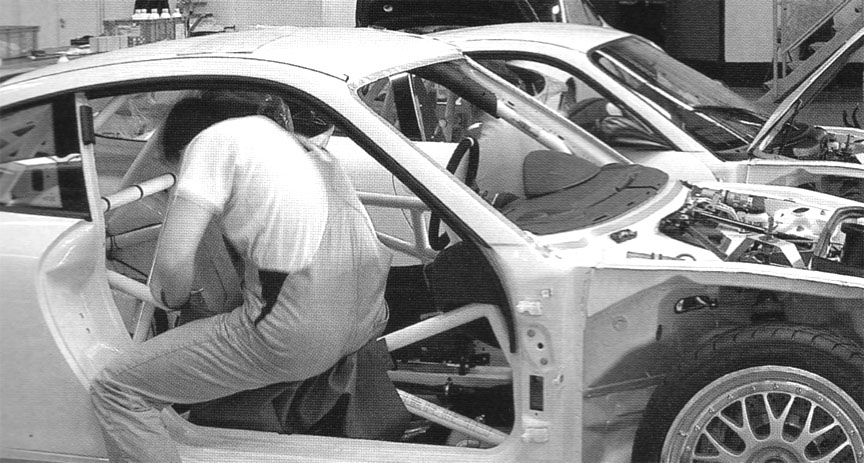
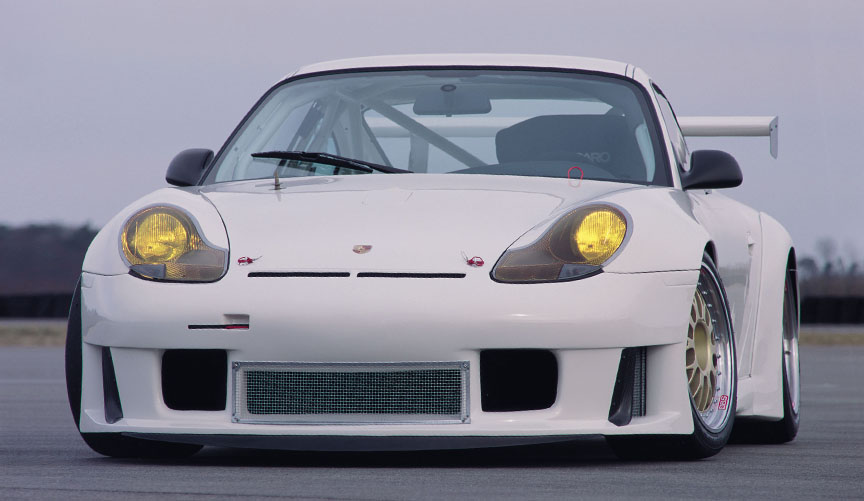
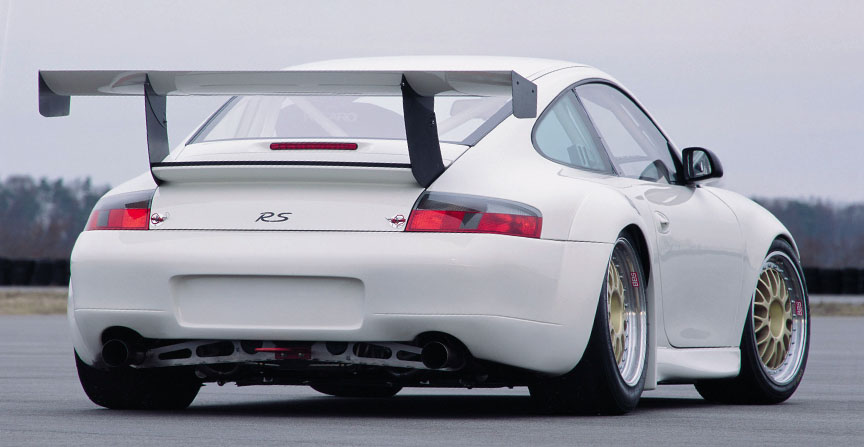
The GT3 RS took its first victory at the Mil Milhas race in Brazil on January 28, 2001. A week later, at the Daytona 24 hour race, second place overall was achieved with GT3 RS driven by Christian Menzel/Randy Pobst/Mike Fitzgerald/Lucas Luhr.
The 996 GT2 was introduced at the Detroit North American International Auto Show (NAIAS) in January 2001. The power was rated at 340 kW, 9 kW over the 993 GT2 street version, but 100 kW under the 993 GT2 racing version. The 996 Turbo has a maxiumum boost pressure of 0.8 bar/11.8 psi (0.65 bar/9.4 psi at maximum power) and the GT2 has a maximum of 1.0 bar/14.5 psi. While the 993 GT2 was named after the FIA GT Championship class it competed in – GT2 – this naming was discontinued by FIA after the 1998 season, so the 996 GT2 was a rear-wheel-drive 911 Turbo with harsh suspension and without the rear seats, not a street version of a race car. A king without kingdom. The heavier standard full leather interior added to the fact that it was more of a luxury car than a race car. As the GT2 wasn’t a race-derived machine anymore, it had rather simple looks compared to the fender-flared 993 GT2. Despite the wrong name, the rear-wheel-drive 911 Turbo with added power and lighter weight is the ultimate 911. Before the roll cage is installed, the GT2 is 100 kg/220 lb lighter than the 911 Turbo. The biggest weight savings over the 911 Turbo comes from making the GT2 rear-wheel drive. Other weight-saving measures include ceramic brakes (-16.6 kg/36.6 lb), bucket seats, deleting the rear seats (-8.0 kg/17.6 lb), instead of a spare tire a tire repair kit (-13 kg/29 lb) and the automatic air conditioning and radio became optional (no cost).The wheel and tyre dimensions went up: front wheels 8.5″ with 235/40-18 and rear wheels 12″ with 315/30-18.
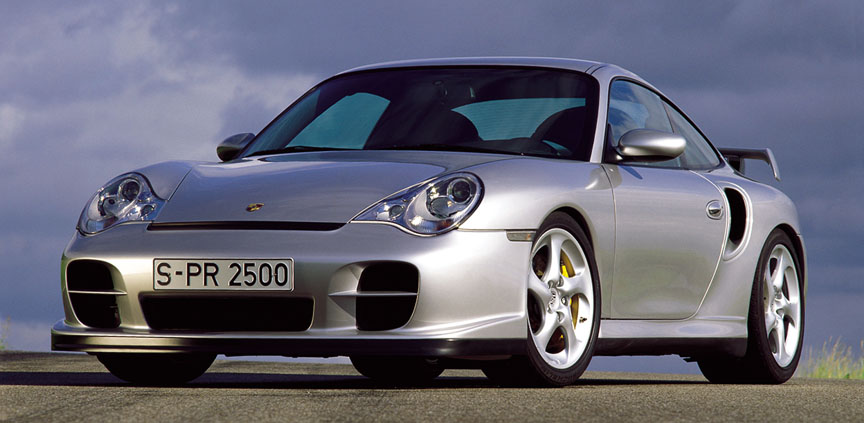
Except for mufflers with less backpressure, the GT2 exhaust system is essentially the same as in the 911 Turbo. European GT2 has a larger fuel tank (US and UK versions have 996 Turbo tank). While all earlier 996 (and 993) had had higher springs for American market, the US-version GT2 was delivered with European suspension (.8″/20 mm lower than the Euro 996 Turbo) and this meant the GT2 looked really low compared to the US 996 Turbo. The GT2 deletes the PSM Porsche Stability Management system that’s standard on the Turbo.
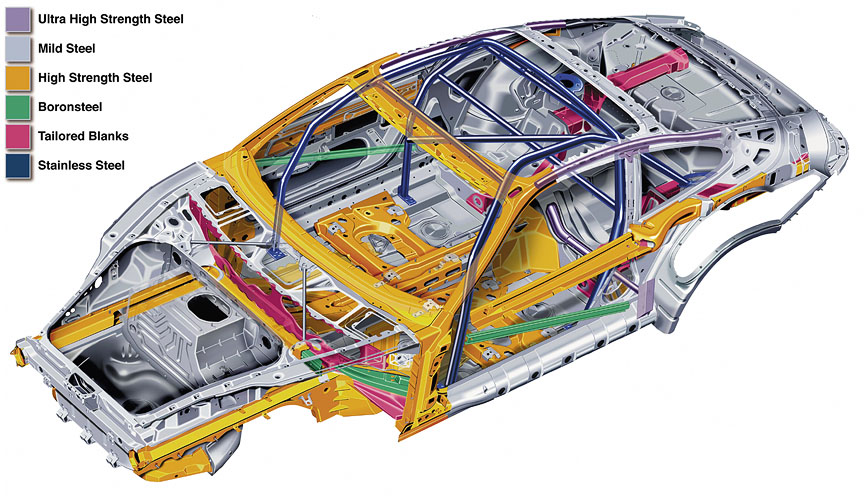
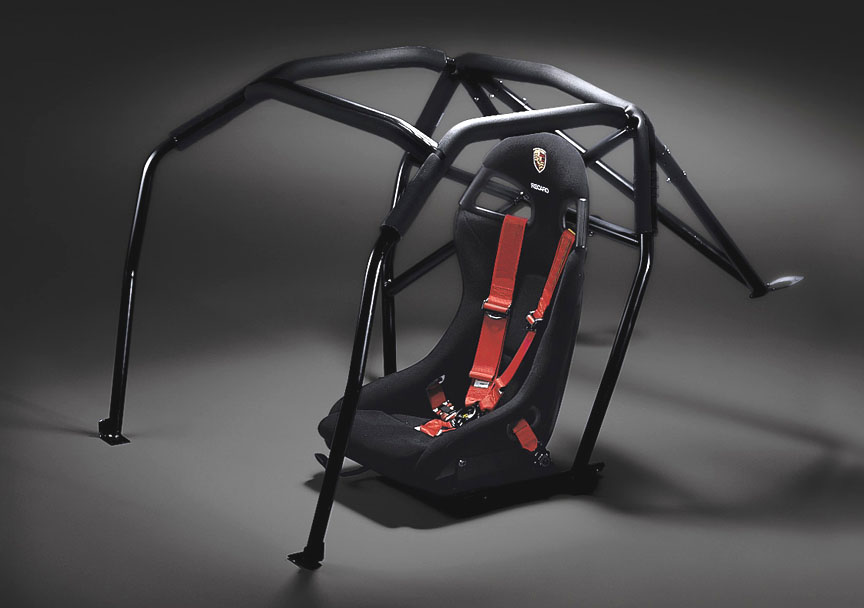
The 996 Carrera was lighter than the 993 Carrera, but the 996 GT2 is heavier than the 993 GT2 was. Even the 996 GT2 test driver Walter Röhrl admitted, it would be nice if the car were 150 kg (330 lb) lighter. As the GT2 project leader Hartmut Kristen put it, the 996 GT2 was meant to be a civilized ultra high-performance road car that can cover continents rather than an out-and-out racer. Still, compared to the Turbo, the 996 GT2 has a noticeably 18% better power-to-weight ratio.
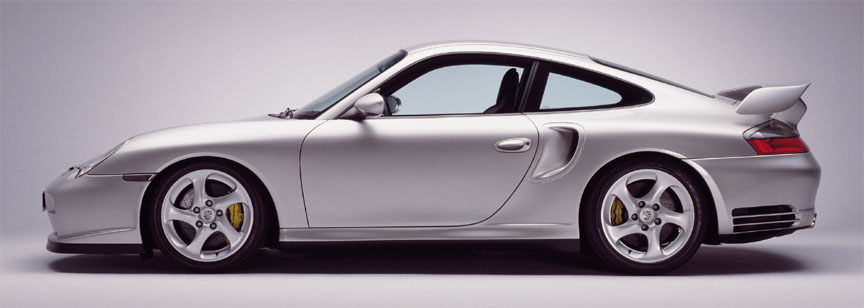
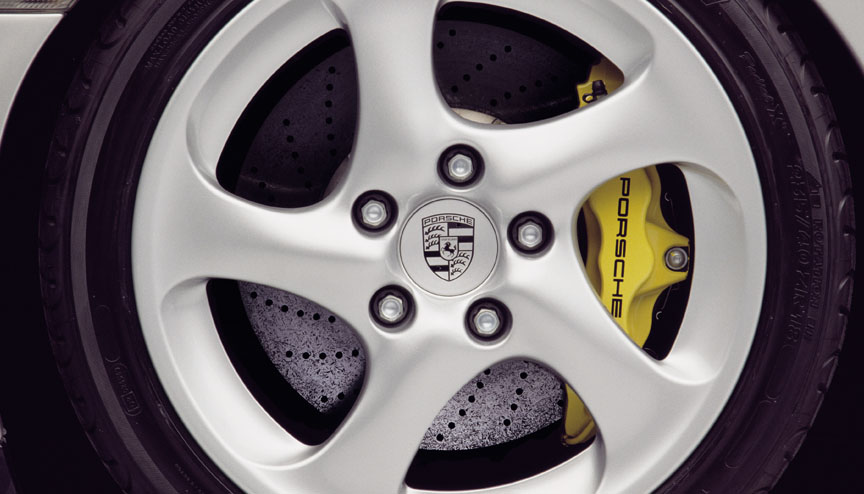
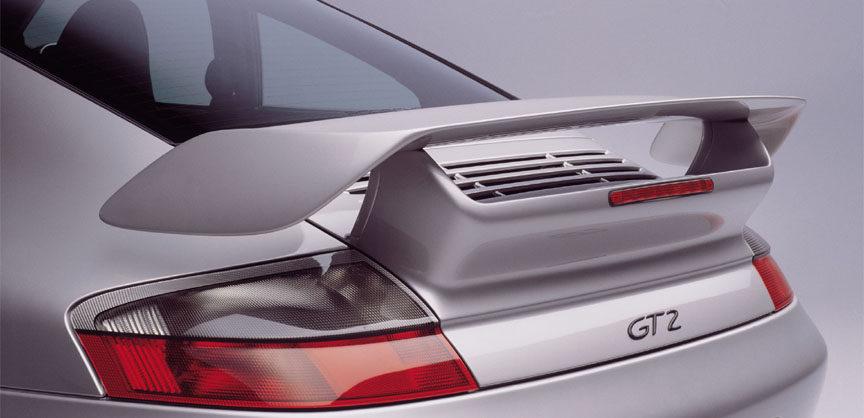
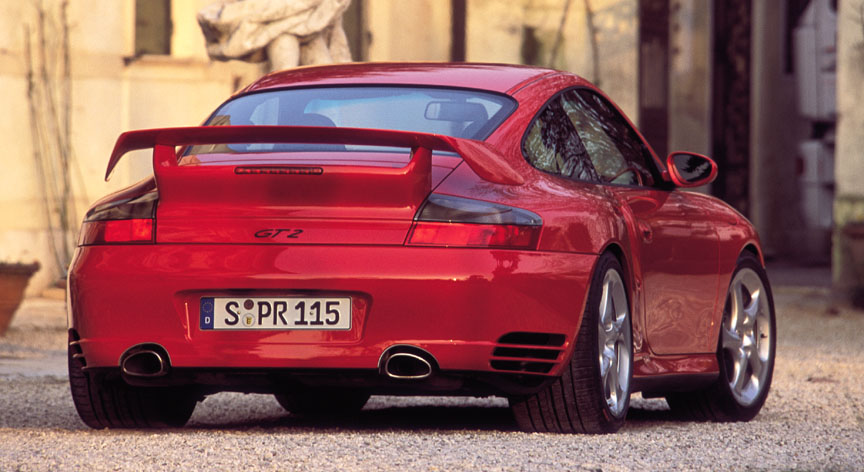
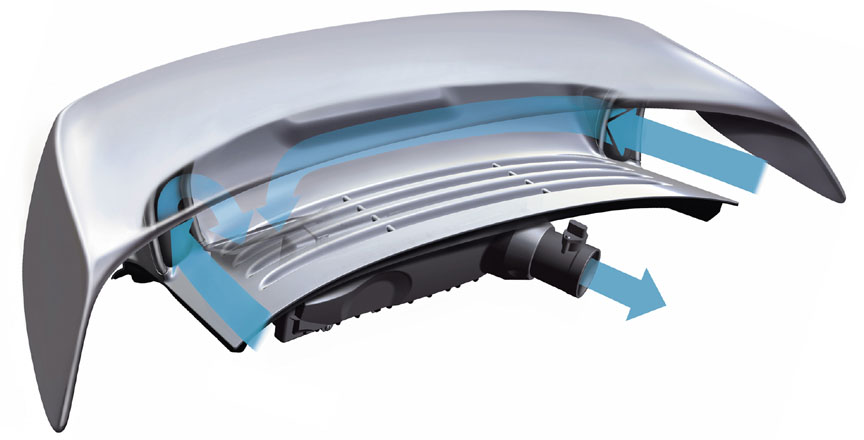
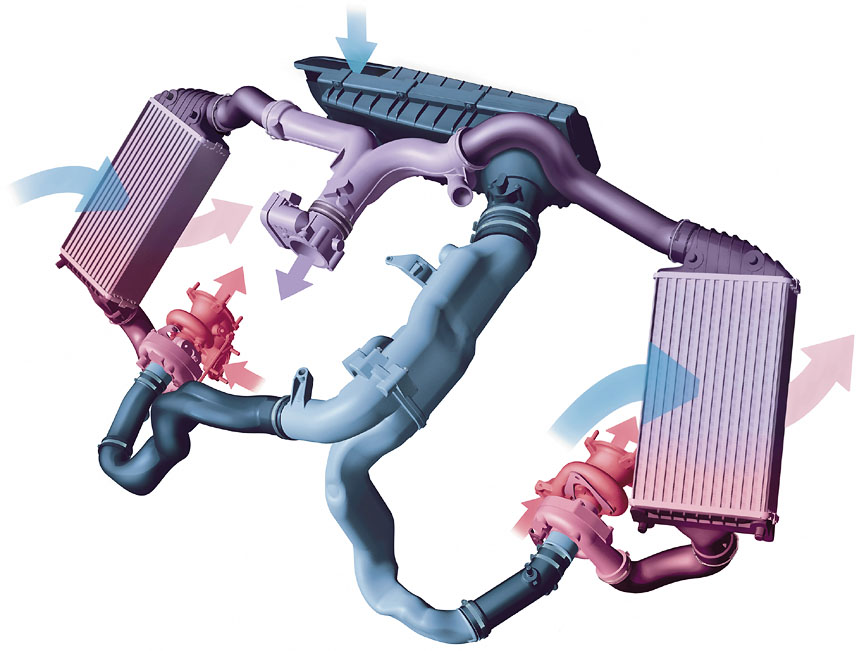
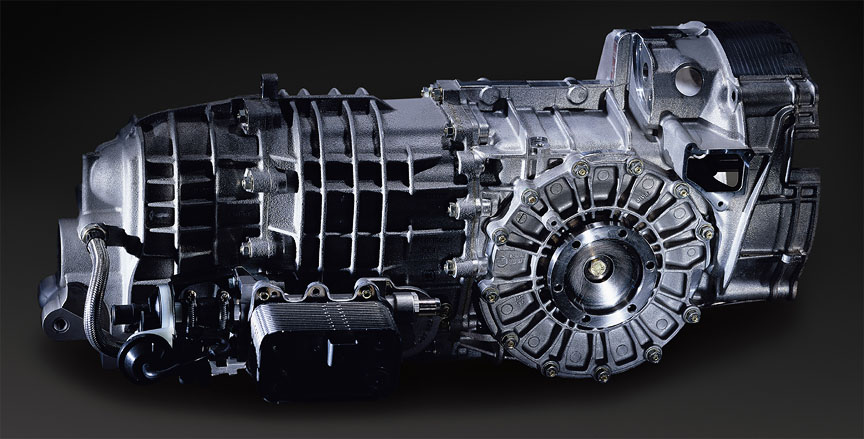
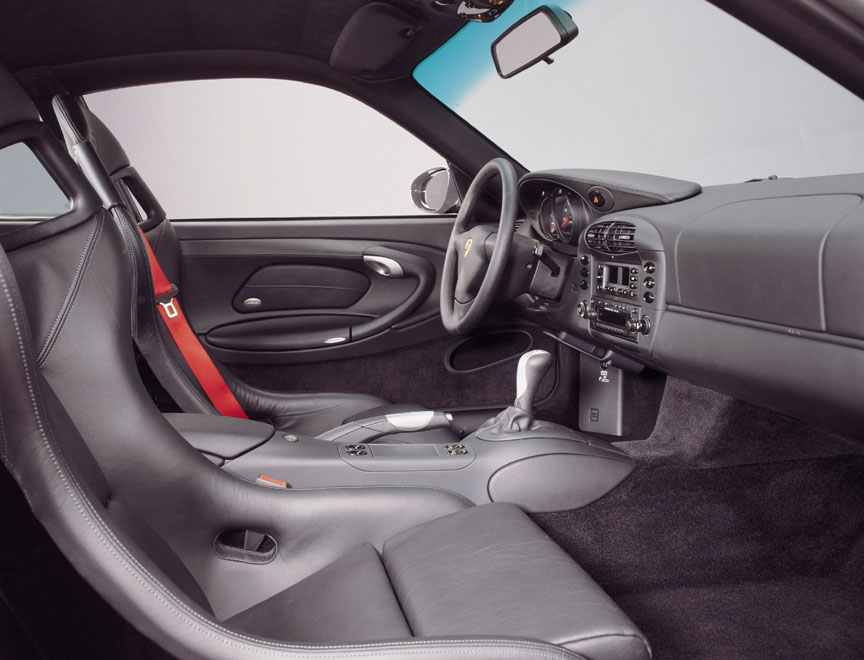
The 996 GT2 was launched in May 2001. Now Porsche had two very sporty cars – the 996 GT3 and the 996 GT2 – with names that didn’t mean anything.
996 GT3, Turbo and GT2 have dry sump lubrication like every 911 had since 1964 until the budget 996 Carrera was introduced. While all the 911s until 993 had separate oil tank, the oil tank in the 996 Turbo is attached to the engine. Turbocharged 996 engines have 8 oil pumps!
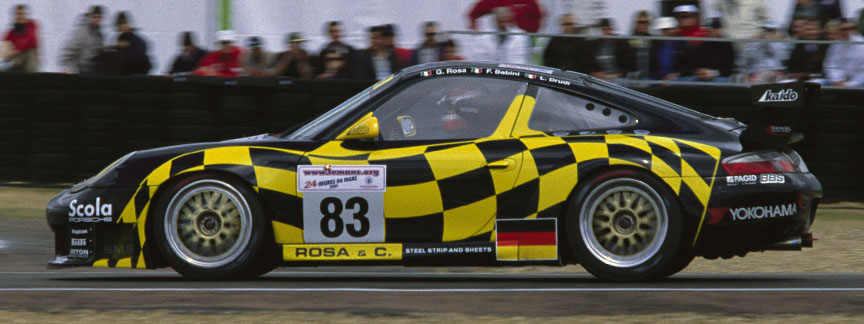
The 2001 Porsche Supercup was won by Jörg Bergmeister. He also participated in the Carrera Cup Germany where scored second after Timo Bernhard. The 2001 Carrera Cup France was won by Philippe Gache. 2001 was the first year when Carrera Cup Japan was held – and won by Yasuo Miyakawa.
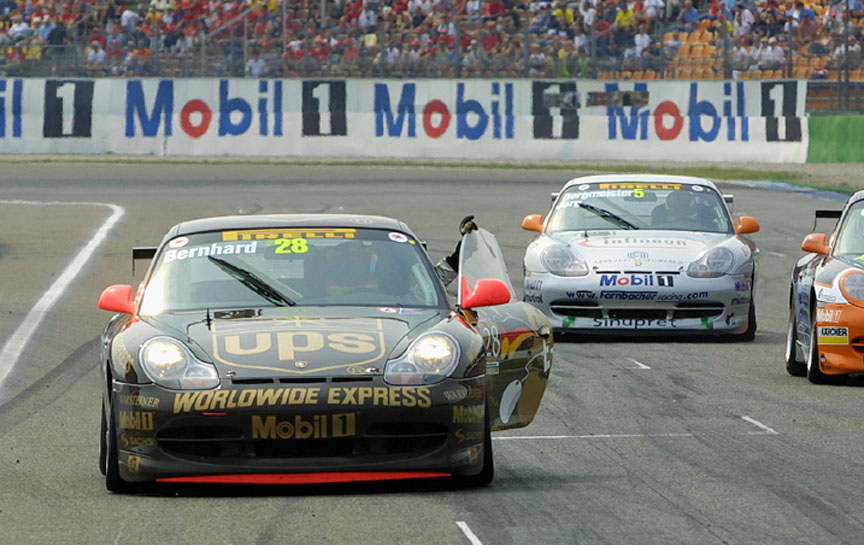
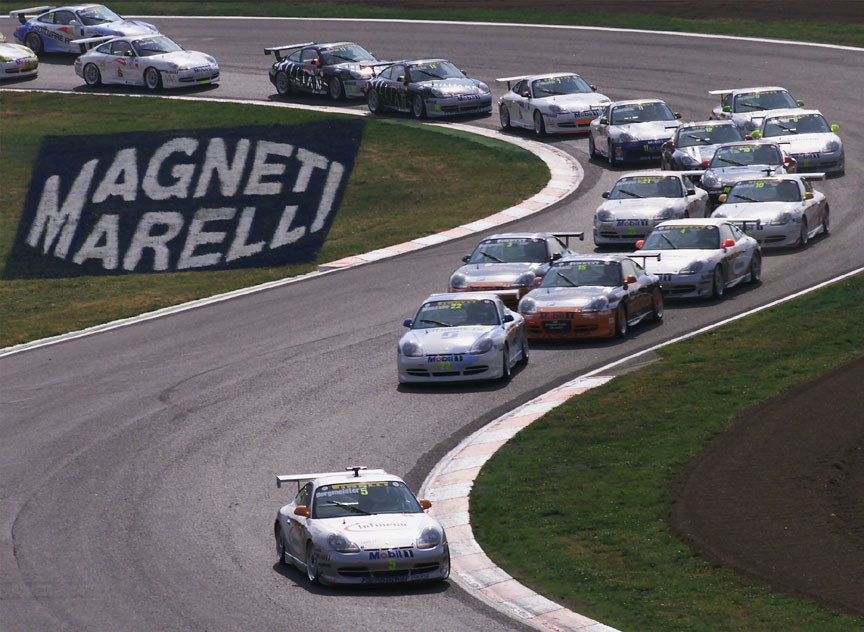
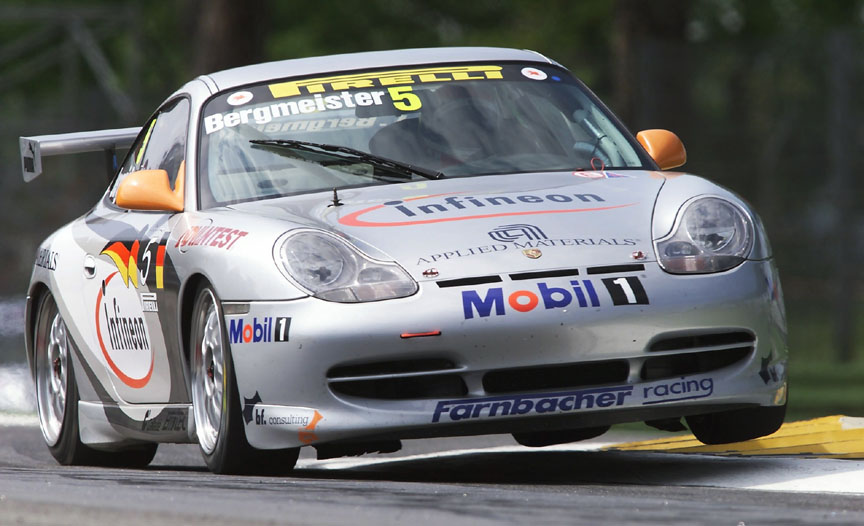
In 2001, the 996 Carrera 3.6 was launched as a 2002 model. The Carrera engine was now as large as was the 964 Carrera engine 13 years earlier. The engine got new crankshaft, pistons and connecting rods. Aside from the displacement increase, the biggest change to the engine was the adaptation of the VarioCam® Plus valve timing and lift system. At 235 kW the engine power of the Carrera 3.6 was the same as on the Carrera 3.4 X51 WLS. It was advertised that the LOKASIL high-silicon cylinder liners help to reduce friction and wear to such a level that a 15,000-mile (24.000 km) oil change interval could be recommended in USA and a 30,000-mile (48.000 km) oil filter change interval. In reality, in many cases, cooling problems still damaged the 6th cylinder’s surface. In the transmission a stronger alloy steel was used on key components. The output shaft runs on 3 bearings instead of two and the differential has stronger bevel gears.
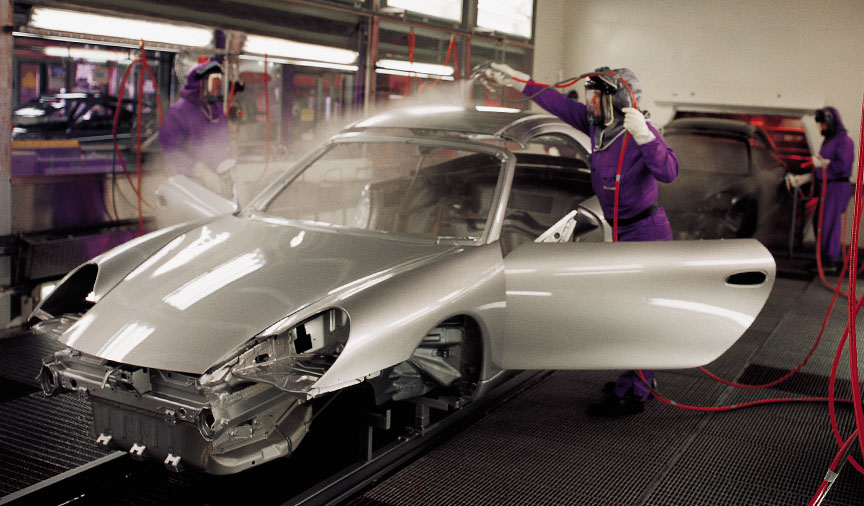
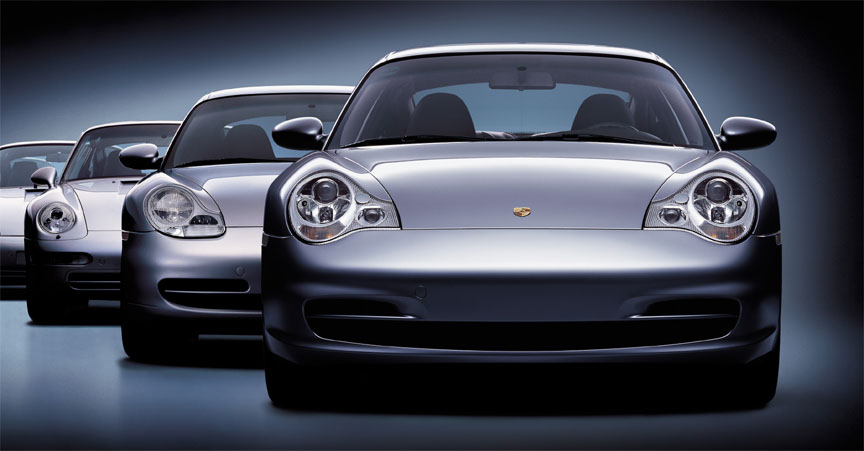
The headlight design was taken from the 996 Turbo. While the Turbo had bi-xenon as standard, it was optional for the Carrera 3.6. A new front spoiler, rear bumper and exhaust pipe ends completed the mild facelift. Some new wheels were offered. The 17″ 996 Carrera 3.6 wheels weighed 3.6 kg/7.9 lb per set less than the 17″ Carrera 3.4 wheels. The new 18″ Carrera wheels in 5-spoke design weighed 10.6 kg/23.4 lb per set less than the 993 Turbo-look (non-hollow-spoke) wheels, an improvement of 21%! The optional parking sensors were now flush with the bumper.
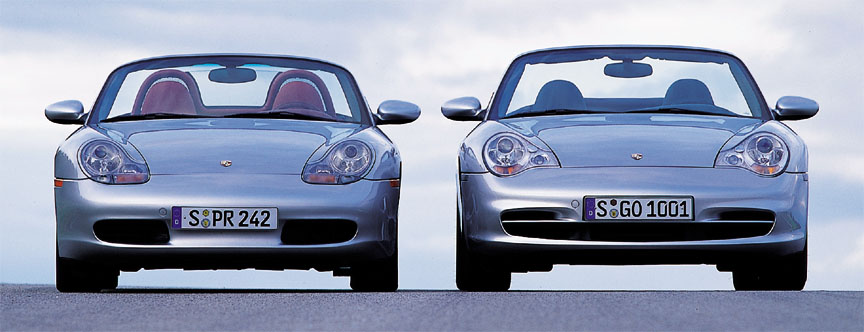
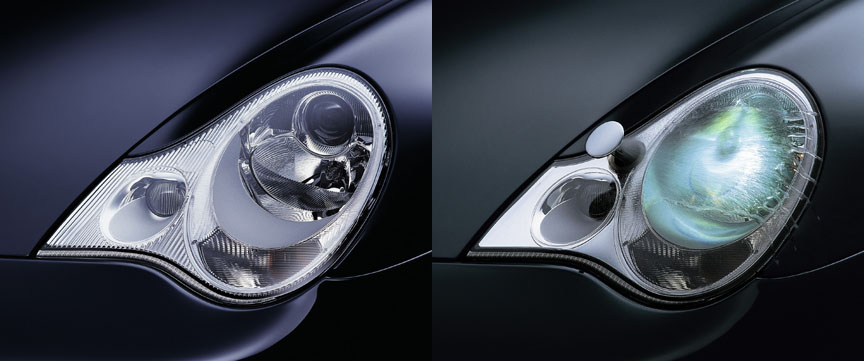
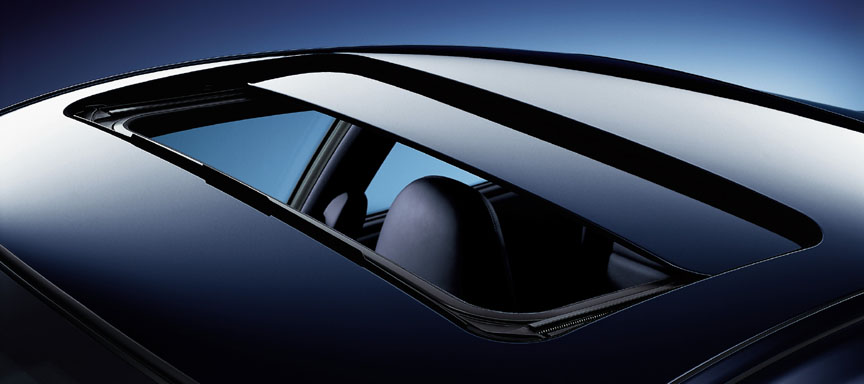
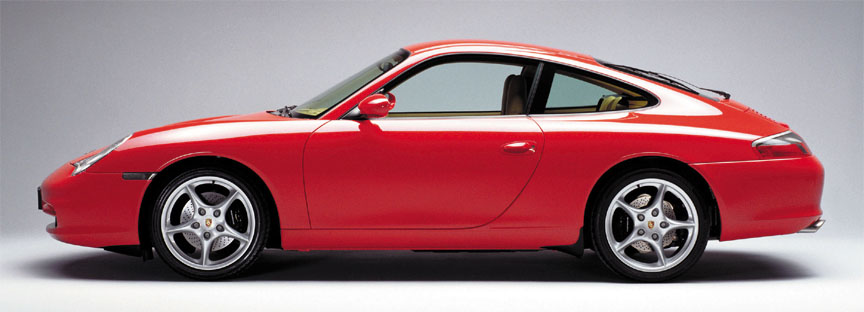
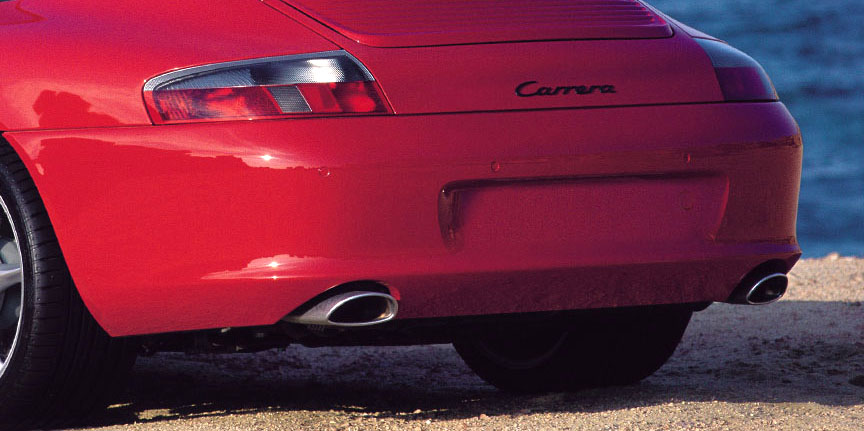
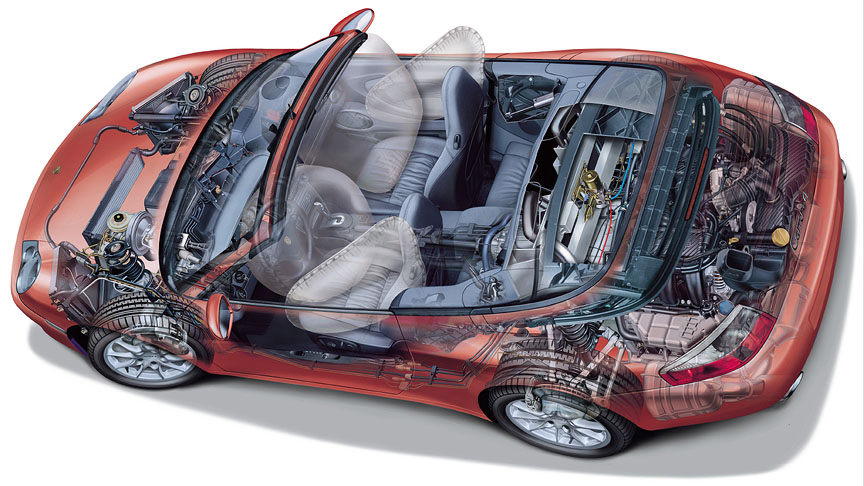
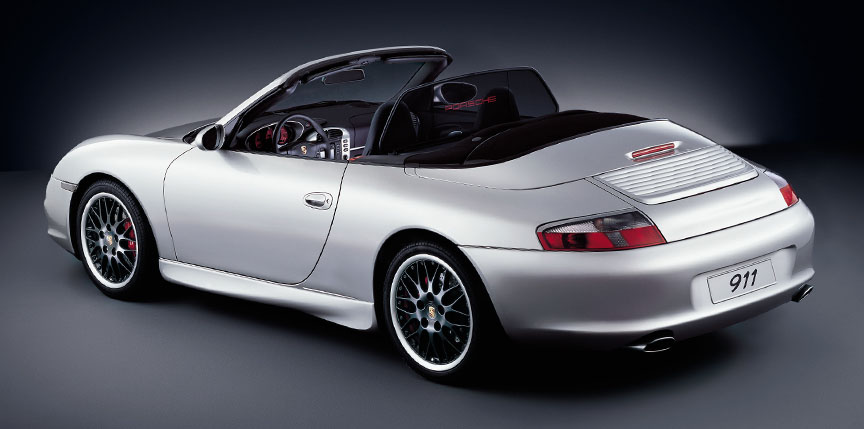

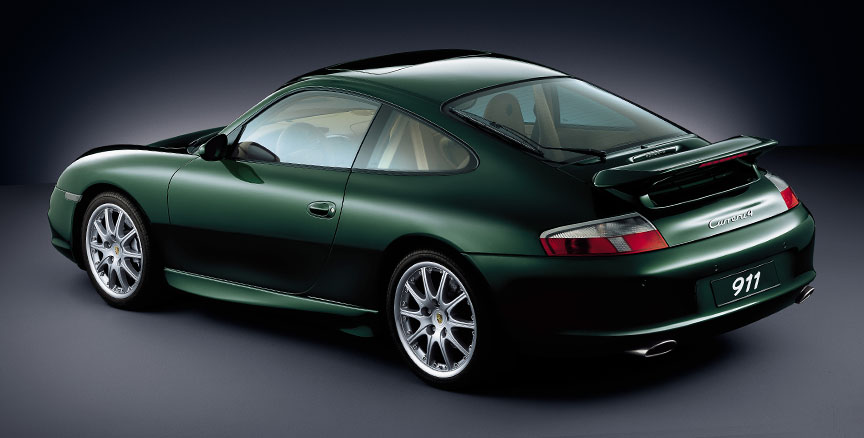
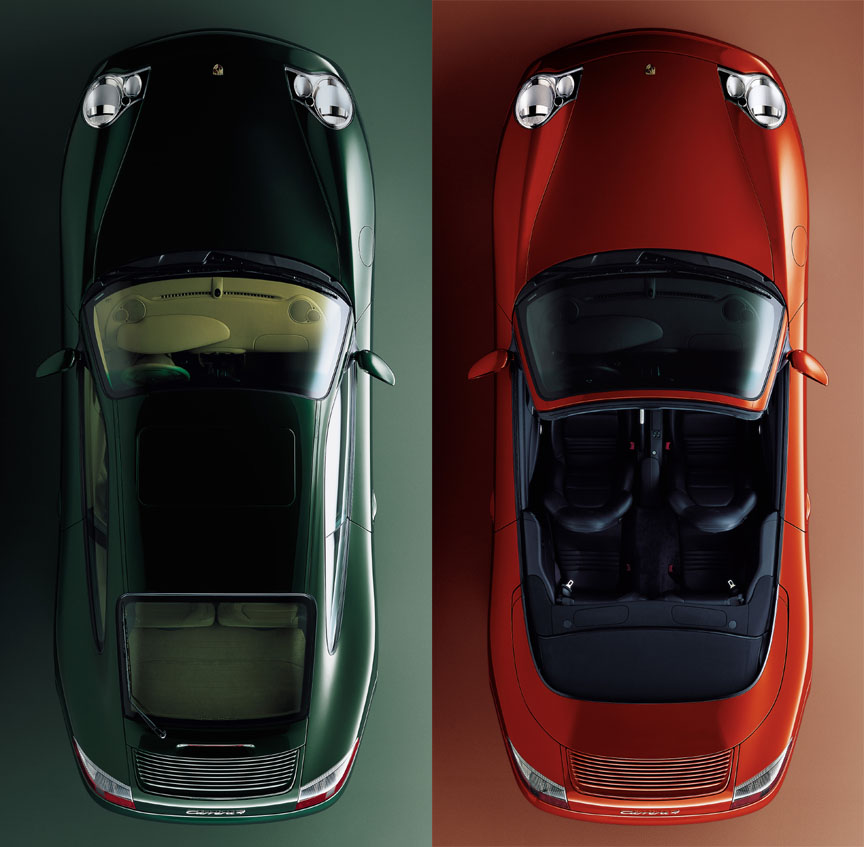
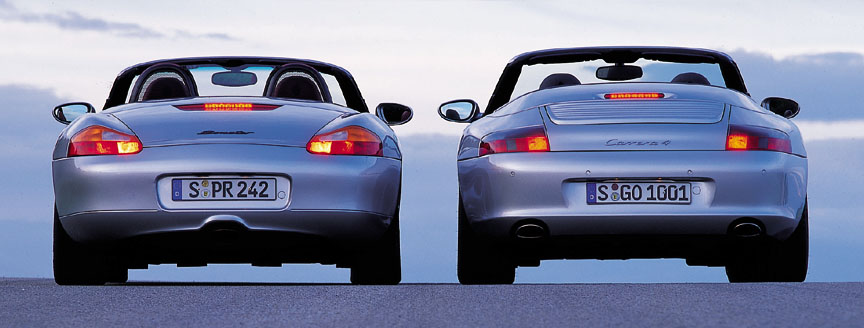
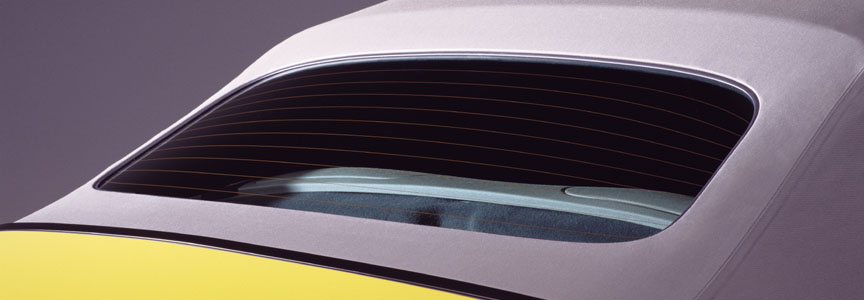
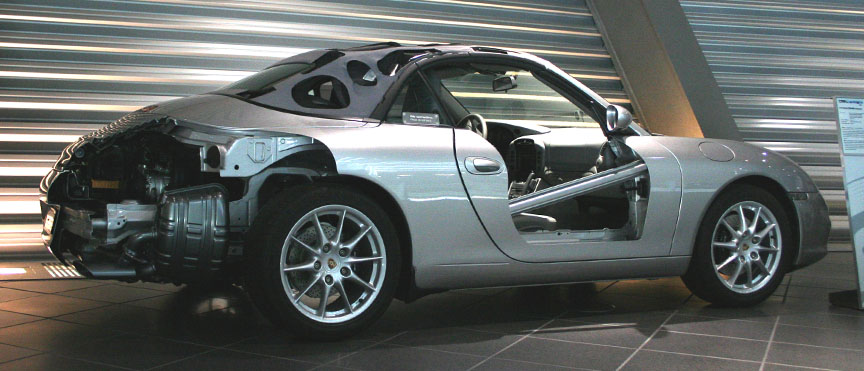
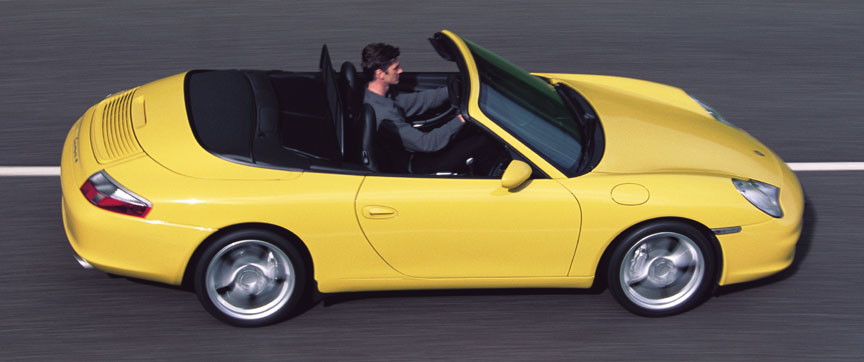
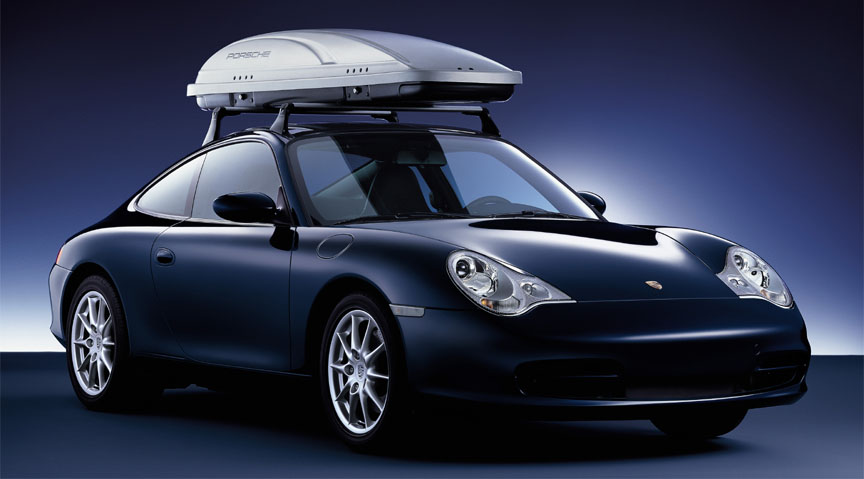

As of the 2002 model year, a glovebox finally adds to interior storage. A cupholder integrated into the center dash adds convenience, while matte surfaces for the switches enhance tactile quality. New features are the automatically dimming mirrors and the rain sensor. The optional Bose sound system replaces the earlier Nokia system. The Bose system has a subwoofer and loudspeakers that now blend seamlessly into cabin trim. Apart from the red area on the rev counter, the instrument panel comes from the Turbo, including the standard onboard computer. In addition to information about fuel consumption and driving range, the computer can display engine oil level, outside temperature and 35 different warning messages. The 3-spoke steering wheel that used to be optional, was now standard, replacing the previous 993-style 4-spoke wheel. The dash center vents were redesigned. The remote entry system now controlled seat memory function when the optional power seats were ordered. The remote determines which of the car keys is in use and transmits the information for driver’s seat position and exterior mirrors to the memory control unit.
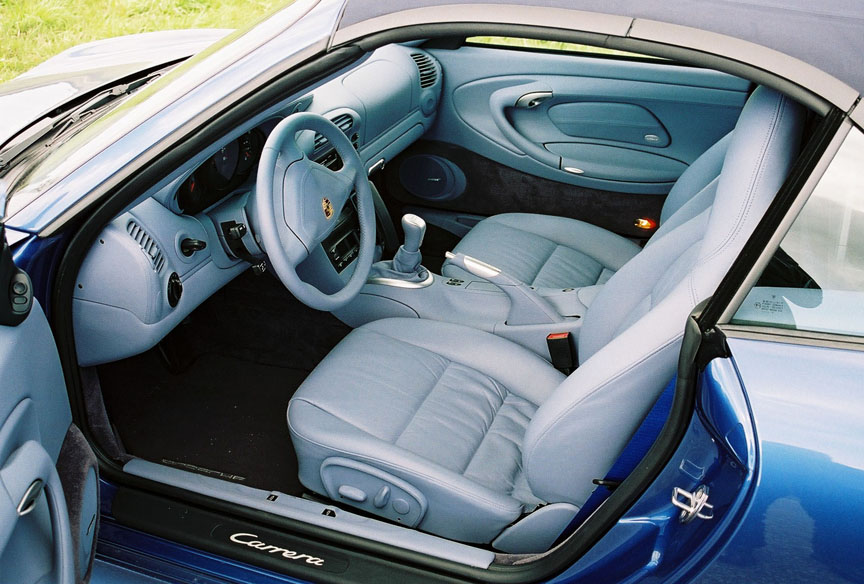
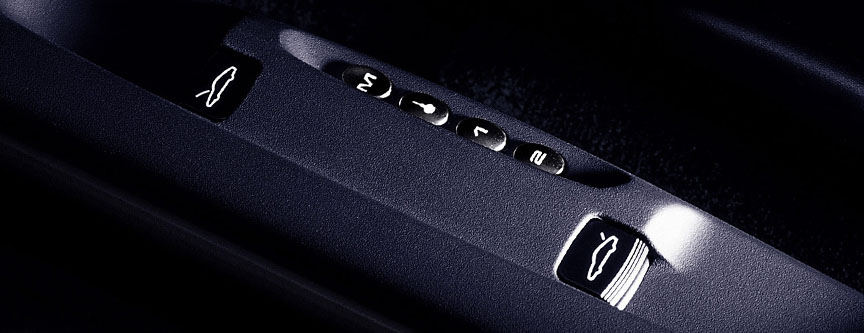
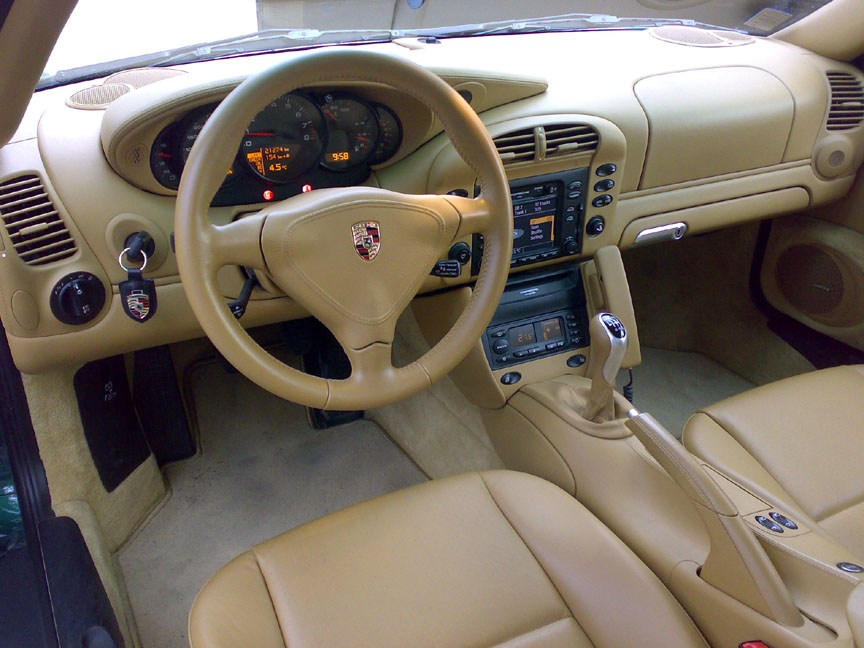

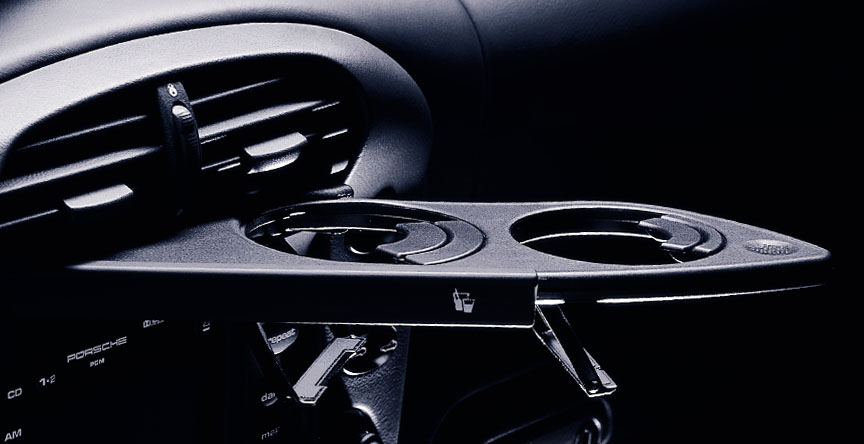
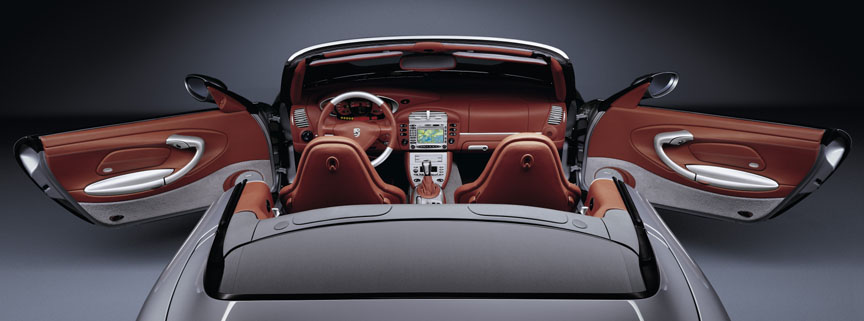
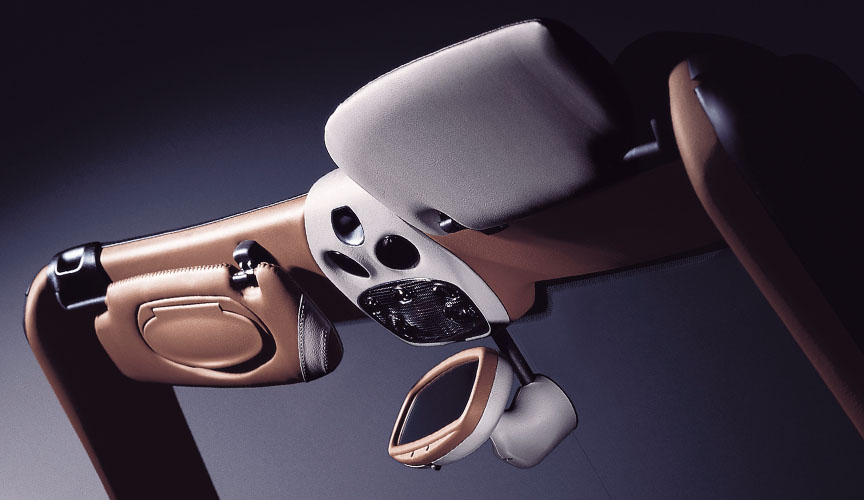
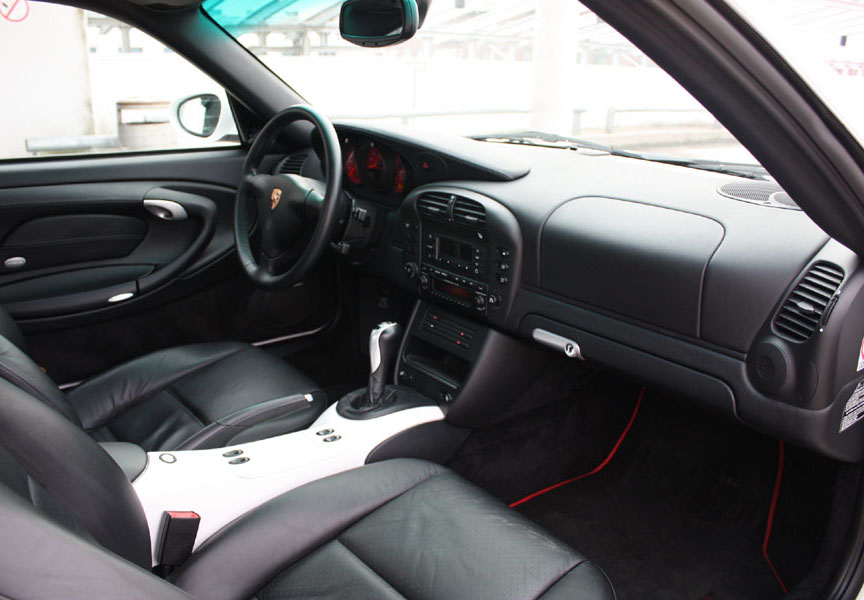
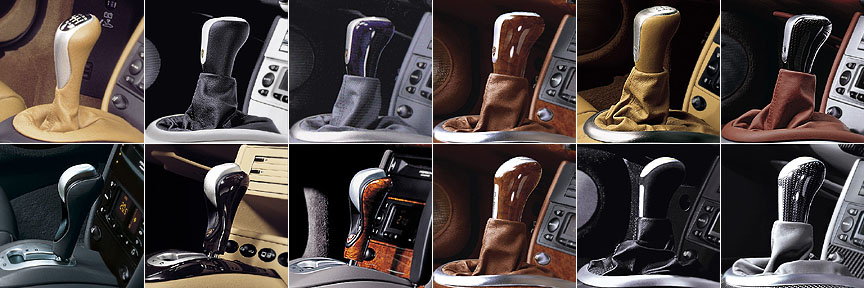
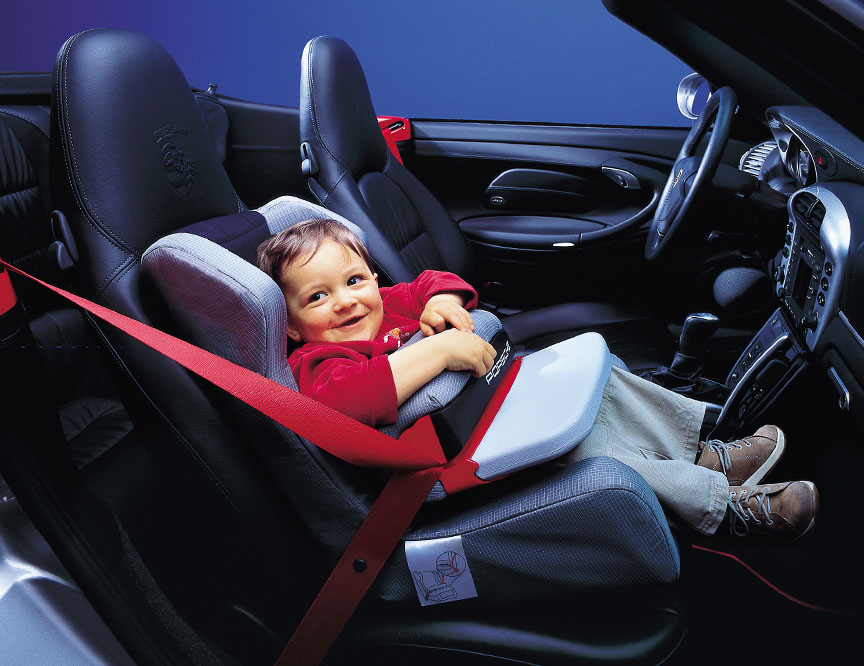
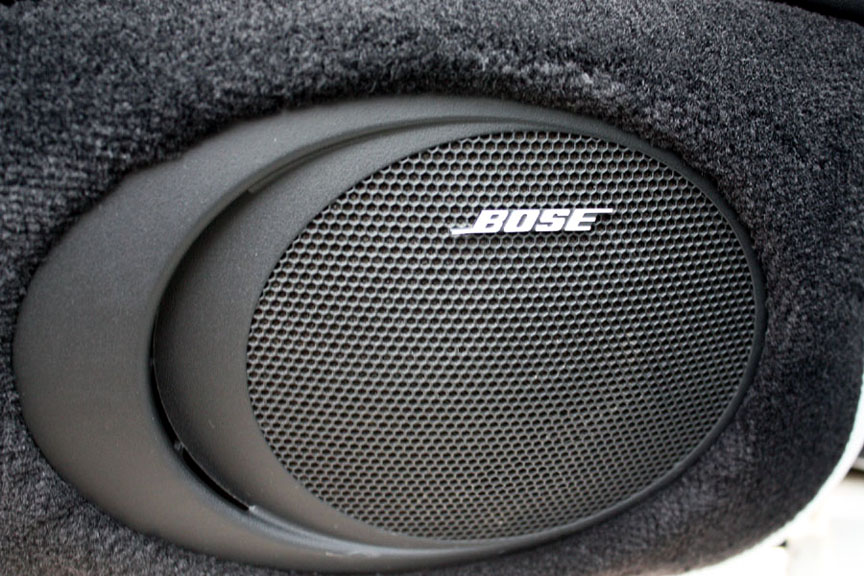
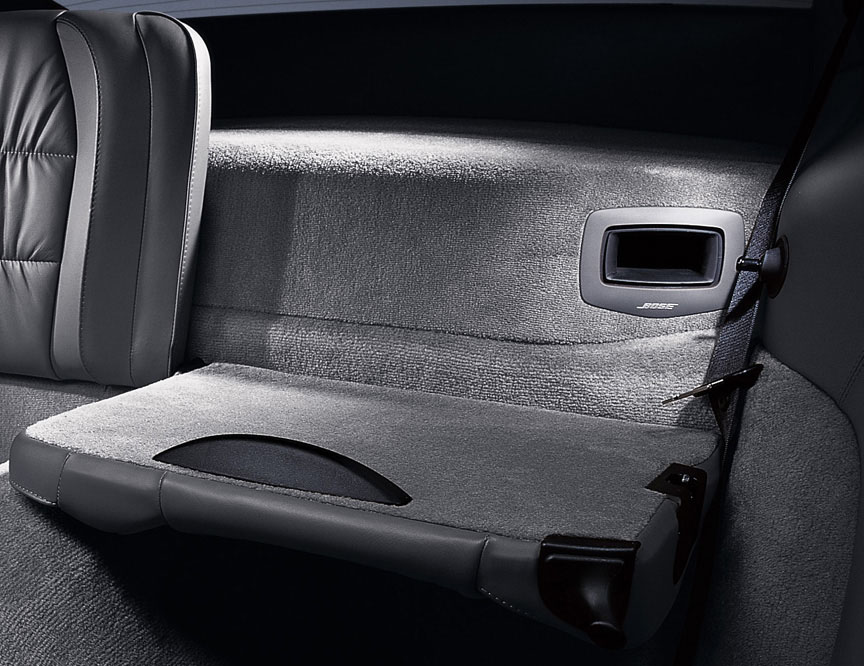
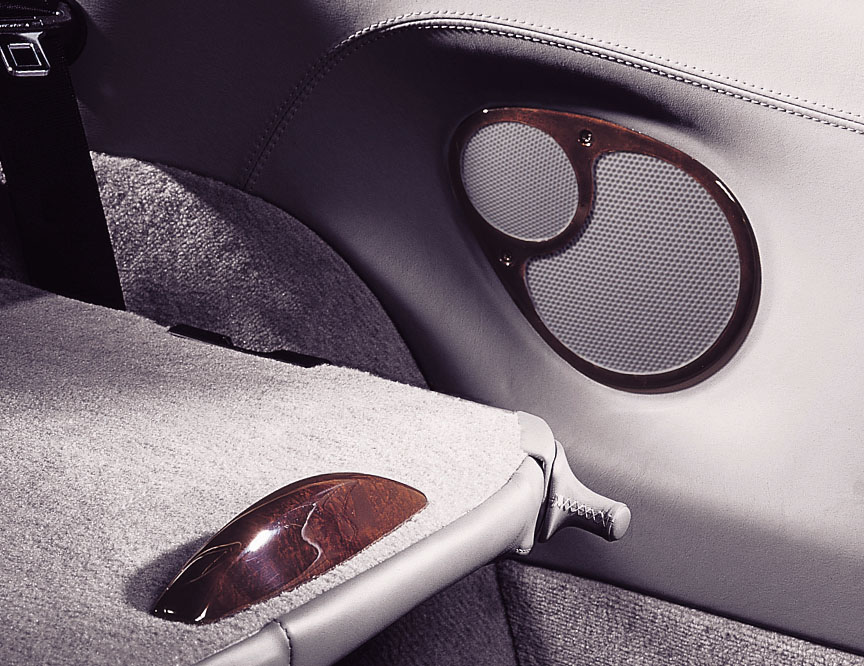
For the 2002 model the US version got the DOT-demanded trunk anti-entrapment release with internal handle. DOT said all new passenger cars with trunks must be equipped with a release latch inside the trunk compartment beginning of September 1, 2001. Alternatively a passive trunk release system could be installed which would detect the presence of a human in the trunk and would automatically unlatch the trunk lid. The people at DOT do not stop to surprise. Until we don’t say a word, passively agree to everything, they keep wasting people’s money on making absurd laws.
A year after the introduction of the PCCB, the production process wasn’t yet honed enough and at the 2001 IAA Frankfurt Motor Show a GT2 had cracks in its ceramic brake discs. Although PCCB was standard brake system on the GT2, first cars were delivered with the 996 Turbo brake system and later the brakes were changed at the dealer. At the 2001 Frankfurt motor show the Carrera 4S was one of the news. It had a body as wide as the Turbo, except no side air intakes and no Turbo rear spoiler. The chassis and brakes came from the Turbo. The wheels looked like on the Turbo, but they were solid (heavy), not lightweight hollow-spoke as on the Turbo. The widebody 911 naturally looked superb, but that came with a price and weight. Because of 100 kg/220 lb more weight from wider body, heavier wheels, brakes, 4WD system and full leather interior, the power-to-weight ratio of the 996 Carrera 4S is 7% worse than on the 996 Carrera 3.6. To save some weight, the 4S could be equipped with the ceramic brakes.
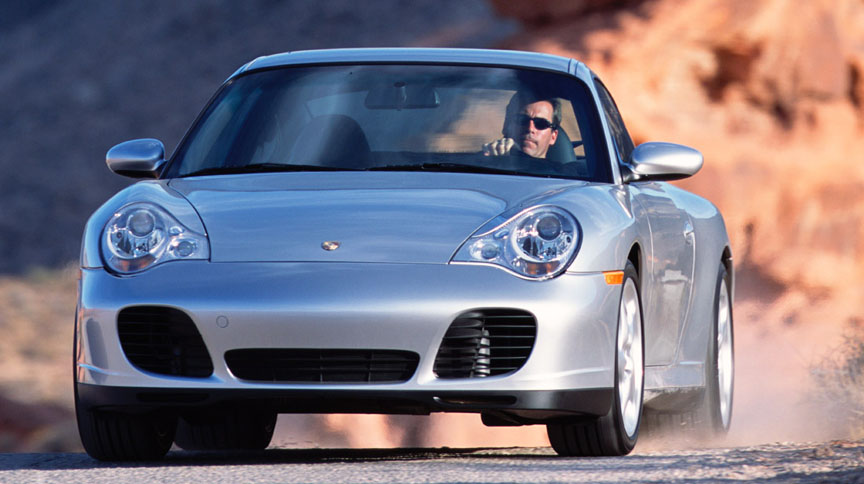
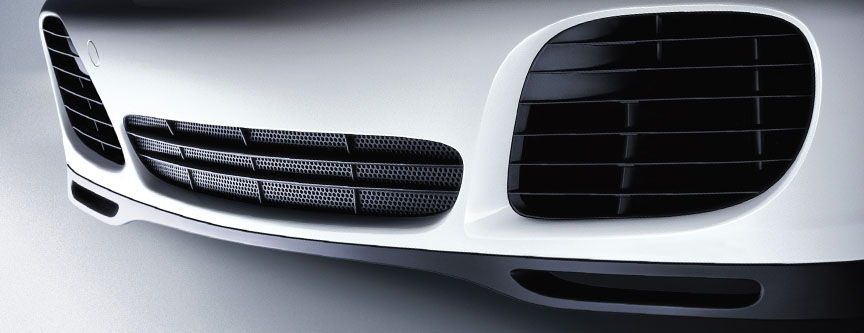
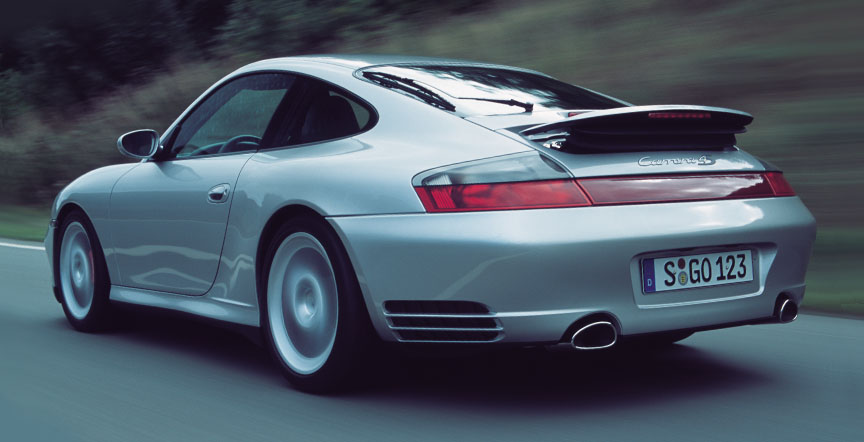
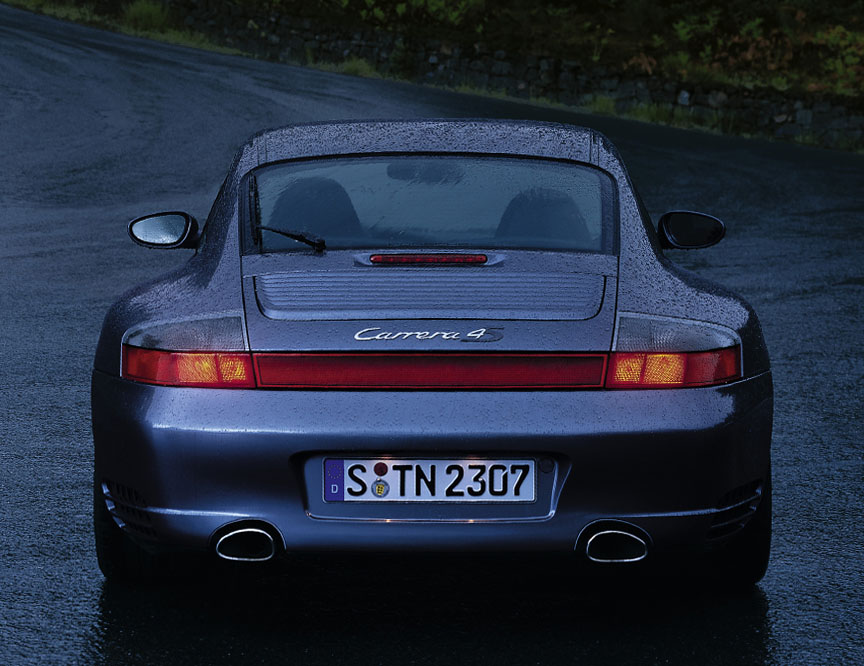
The 996 Targa was also shown at the 2001 Frankfurt motor show. It had a similar roof concept to the 993 Targa.

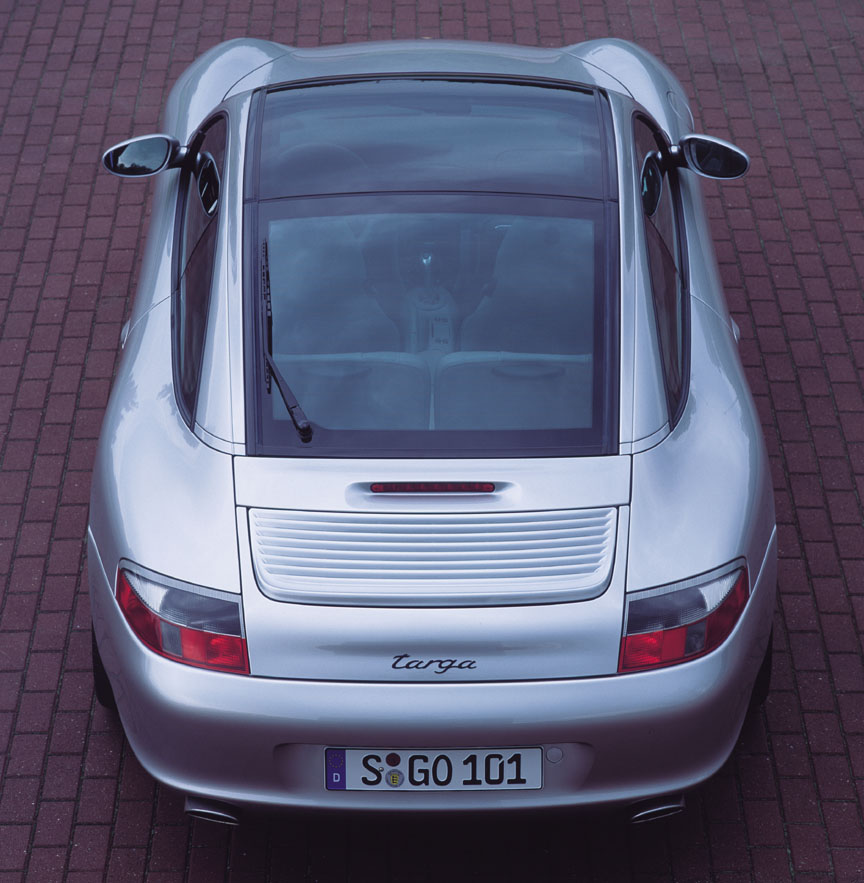

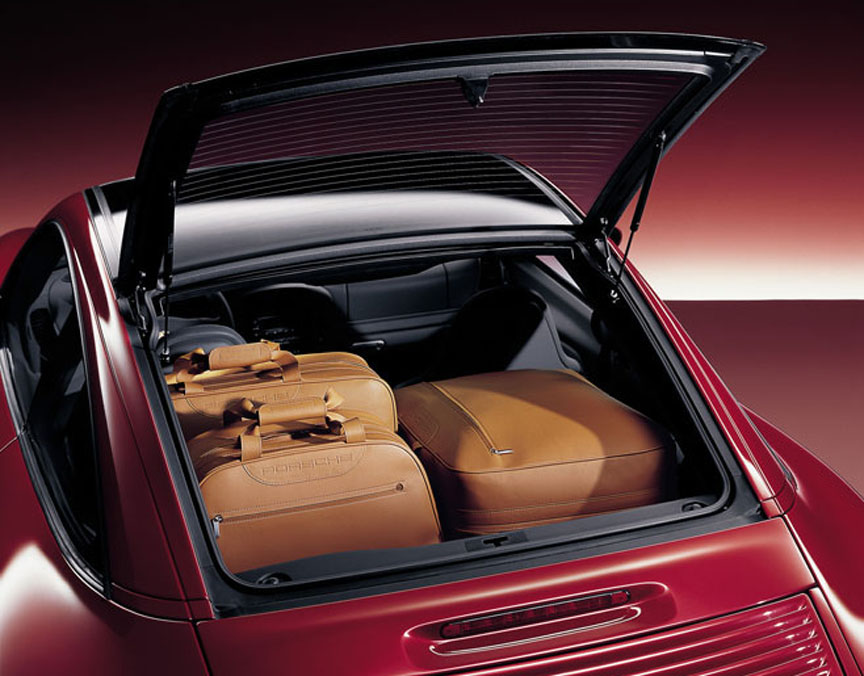
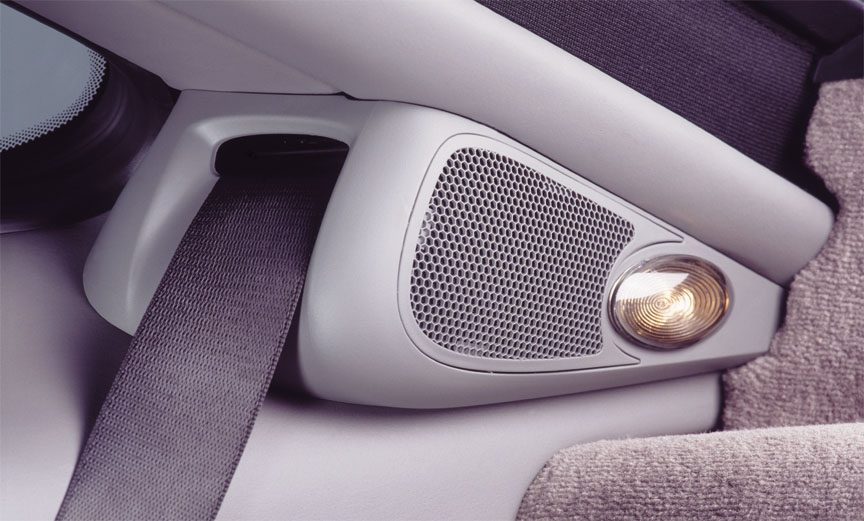
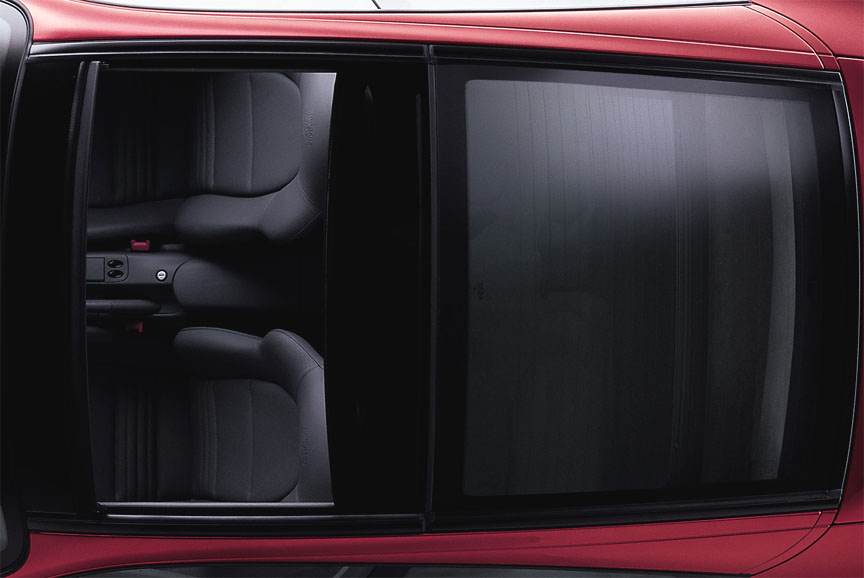
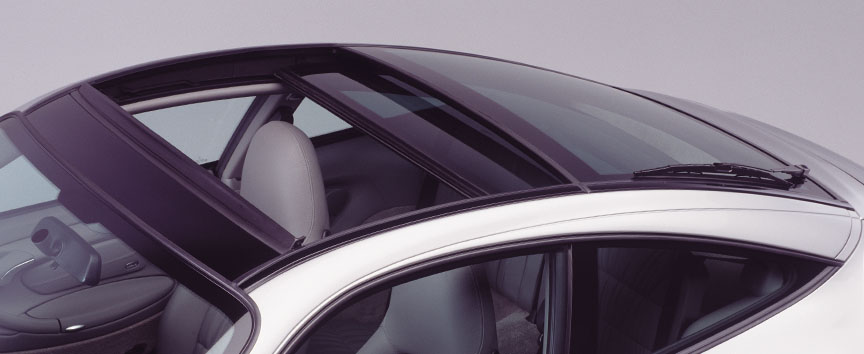
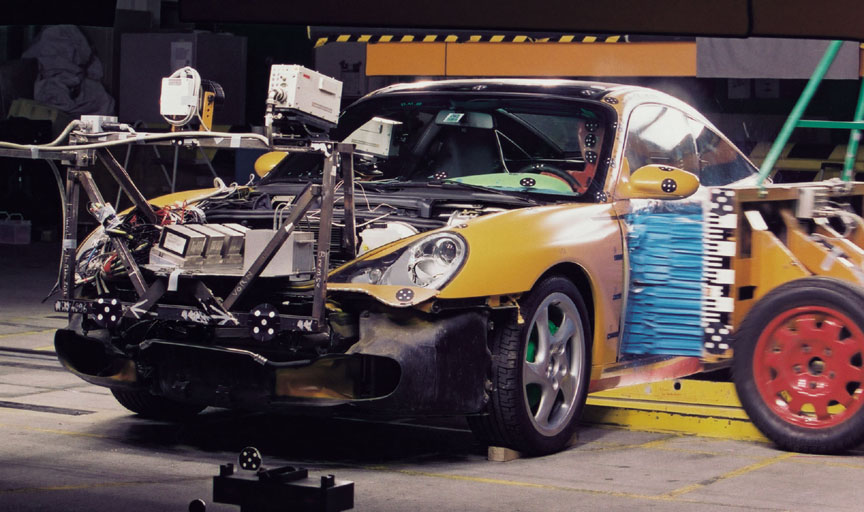
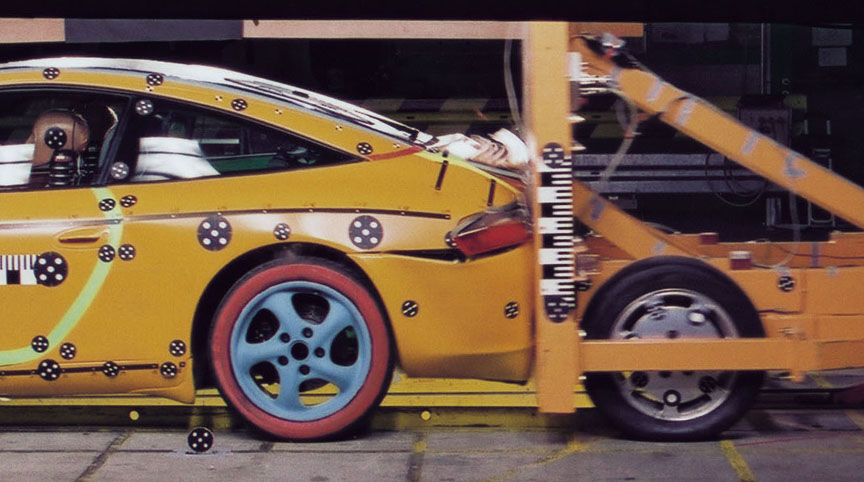
996-generation saw the last rear-wheel-drive 911 Targas, which adds to their collector’s value.
For the 2002 season, the facelifted 996 GT3 Cup was introduced in the end of 2001. Whilst the body shell of the facelift 996 was marginally heavier than its forerunner, the total weight of the GT3 Cup remained the same at 1140 kg/2513 lb incl. fuel (64 litre tank). This was attained thanks to lowering the weight of the doors by 2.5 kg/5.5 lb, by reducing the windscreen thickness by 1 mm as well as using smaller side mirrors, smaller alternator (minus ~1kg/2 lb) as well as a lighter, more compact exhaust system (minus ~2 kg/4.4 lb). The double exhaust pipe now exited in the middle of the rear apron. A moderate power increase to 279 kW was achieved thanks to Bosch Motronic 3.1 from 911 GT3 RS. Maximum torque was increased to 279 lb-ft/380 Nm at 6,250 rpm. For the first time in Cup-car history, the front axle featured 6-piston fixed callipers, and brake discs measuring 350 mm (2001: 330 mm). At 330 mm, the diameter of the rear brake discs remained unchanged. In order to provide space for the larger brakes, the front wheel grew from 8.5″ to 9″. Correspondingly, the rear axle now sported 11″ rims (2001: 10.5″). The tyres were 245/645-18 and 305/660-18. Thanks to two-piece tie rods from the GT3 RS on the rear axle, teams could adjust the suspension quicker and more precisely to the characteristics of each track.
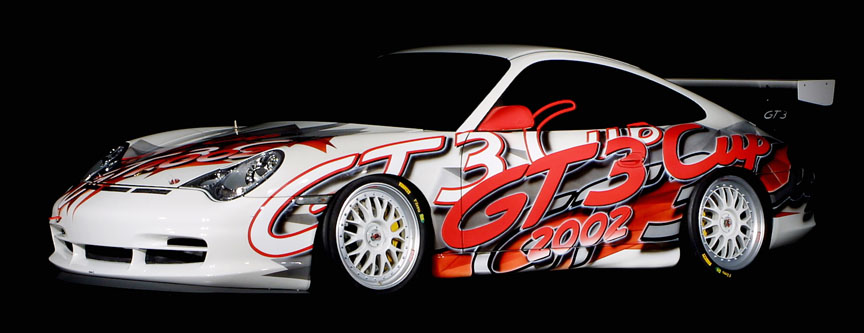
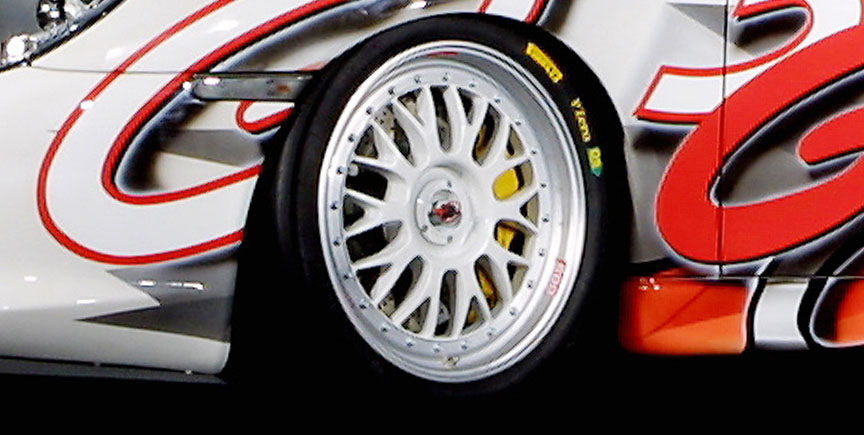
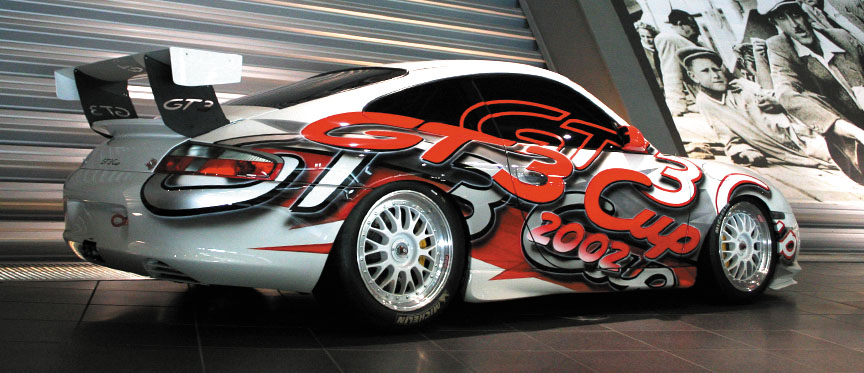

To improve spectator attention on the Supercup races, a VIP car was made, driven by different person (local motorsport related VIPs) at every race.
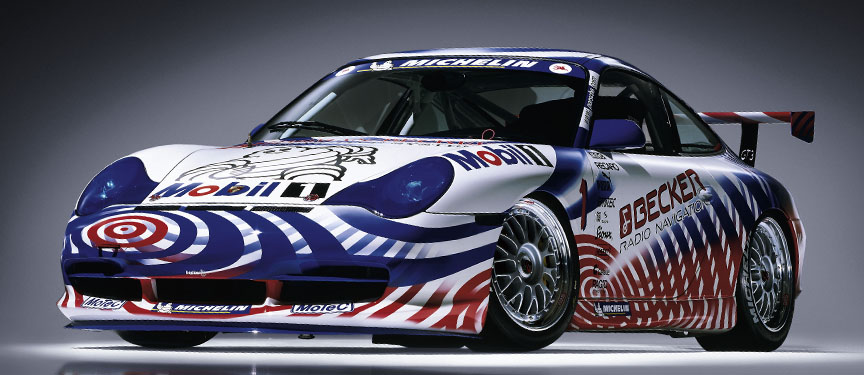
For the 2002 season the GT3 RS racing car got a bit more power (now 310 kW) and torque (now 287 lb-ft/390 Nm). In order to provide better durability, the stress resistant components of the gearbox were adopted from the stronger 911 GT2. New was the more efficient oil-water heat exchanger. The new triple disc clutch weighed less than the 2001 season´s double disc clutch.
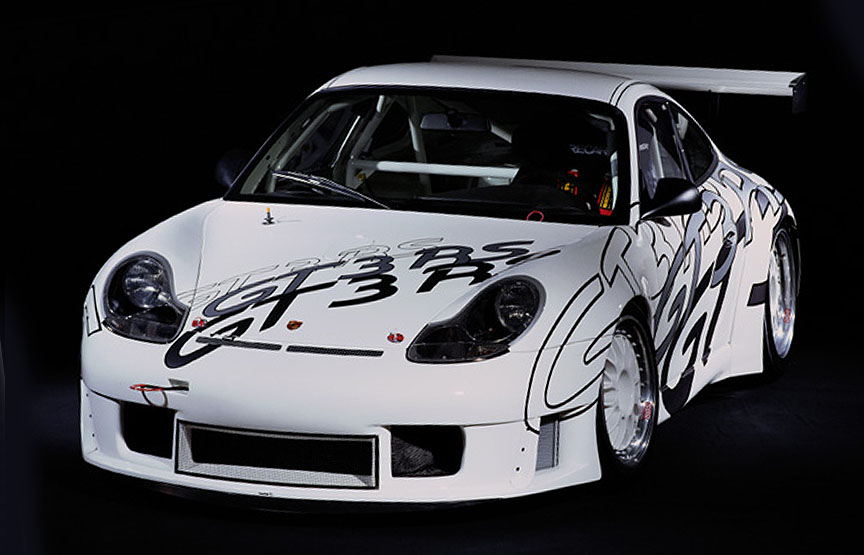
From February 2002 optional WLS powerkits were offered for Carrera 3.6 and Turbo. The power of the Carrera 3.6 engine was raised from 235 to 254 kW. The powerkit didn’t bring peak torque increase. Actually there is less torque between 3500-5000 rpm, but more after 5000 rpm. The powerkit was still called as X51 as on the Carrera 3.4 WLS. It included modified alloy shift induction system, modified cylinder heads and new exhaust manifold, as well as adjustments to DME maps. Acceleration to 62 mph/100 km/h was improved by 0.1 seconds and top speed rose 3 mph/5 km/h.
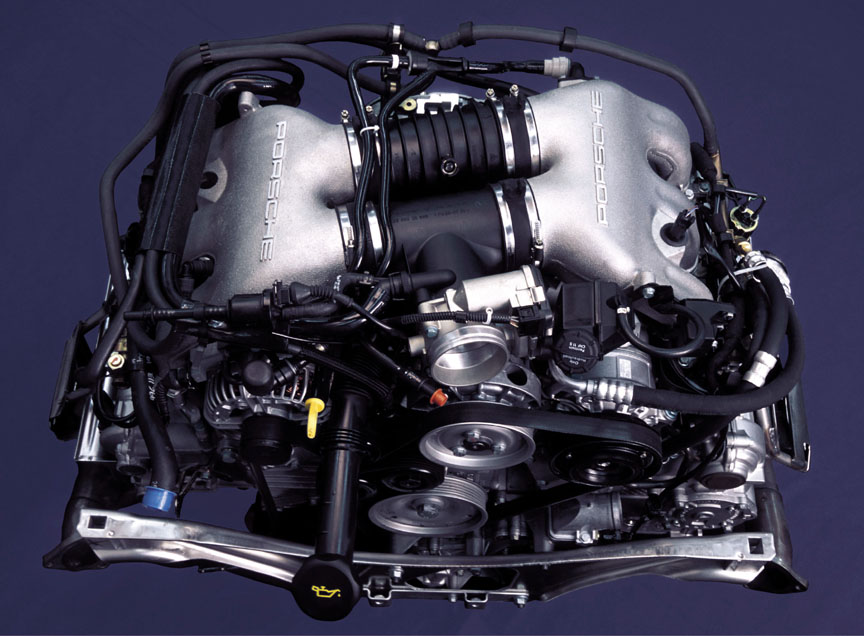
The powerkit for the Turbo was rated at 331 kW – the same as the 993 Turbo WLS 2/Turbo S was in Europe many years earlier. Despite the hefty price tag on the X50 option and many changes (turbochargers, intercoolers, control units, exhaust system), acceleration was improved only on the Tiptronic version. Top speed rose only by 2 km/h. In addition to the Turbo powerkit, Turbo Aerokit was introduced.
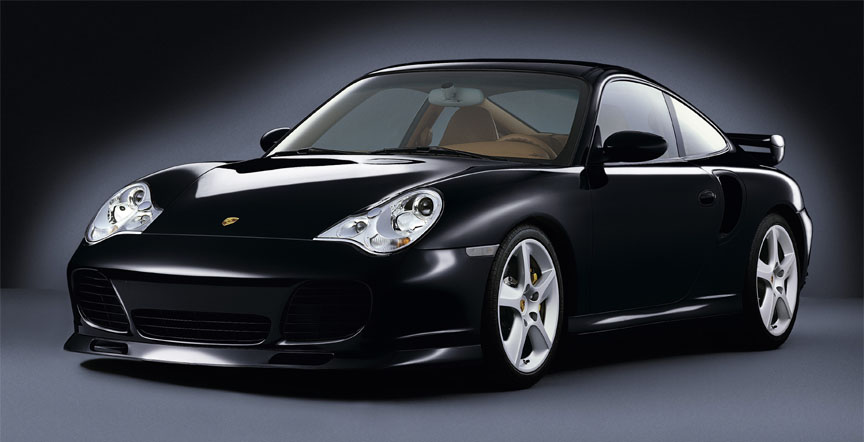
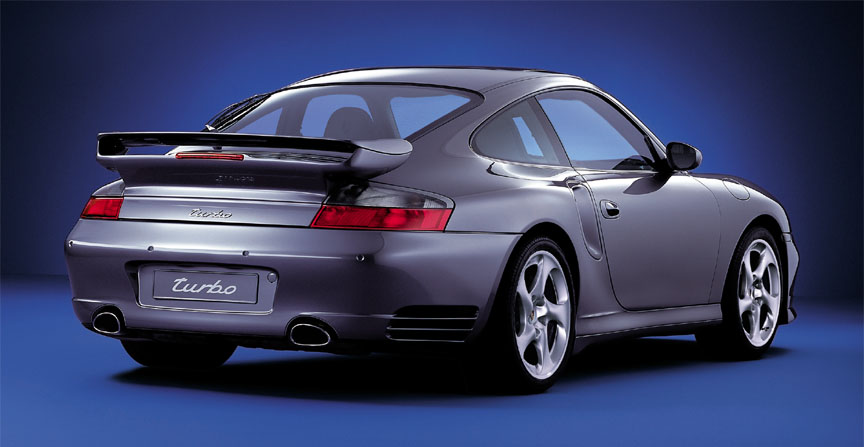
The 2002 Supercup was won by Stéphane Ortelli, Carrera Cup Germany by Marc Lieb, Carrera Cup France by Sébastien Dumez and Carrera Cup Japan by Takashi Inoue.
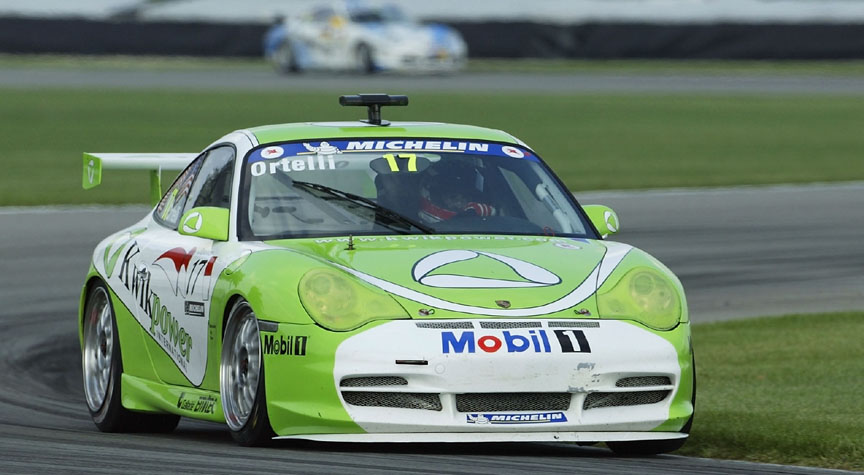
In the end of 2002 Porsche’s racing department in Weissach itself became bigger than some small car producer – the reason being the fact that from 2003 there would be 6 Carrera Cup series worldwide. The 2003 Carrera Cup engine would see another small step up, now to produce 287 kW. Maximum torque remained unchanged at 287 lb-ft/390 Nm.
In 2002, as of 2003 model year, the cabriolet roof could now be operated also while driving up to 30 mph/50 km/h, a really convenient feature.
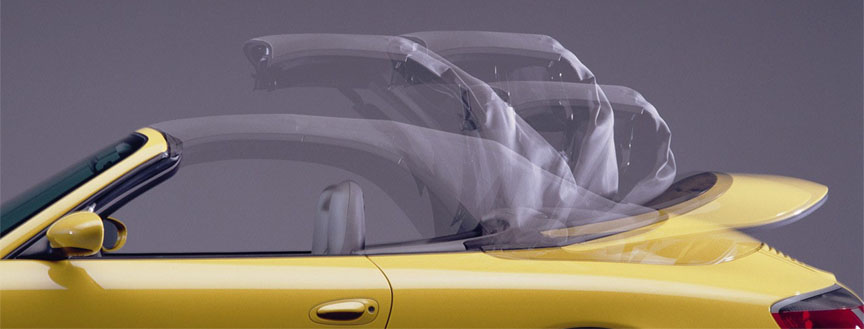
For 2003 model year came the new PCM 2 Porsche Communication Management. The PCM 1 used to have a cassette player – in the 21st century! The PCM 2 came with the CD-player and a larger screen. The full-size SIM card holder was replaced with a mini-SIM.
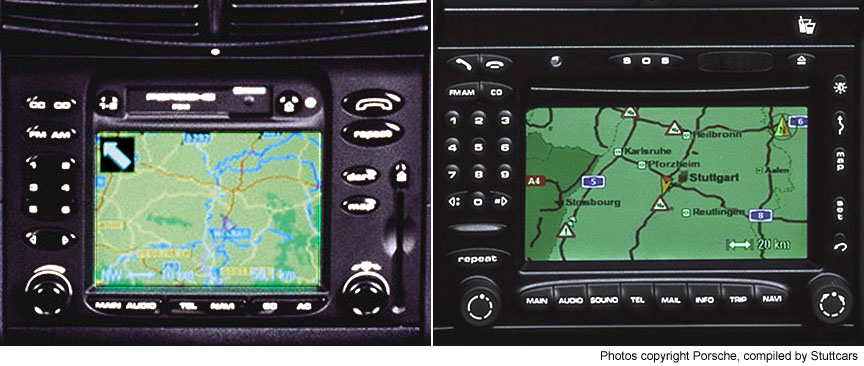
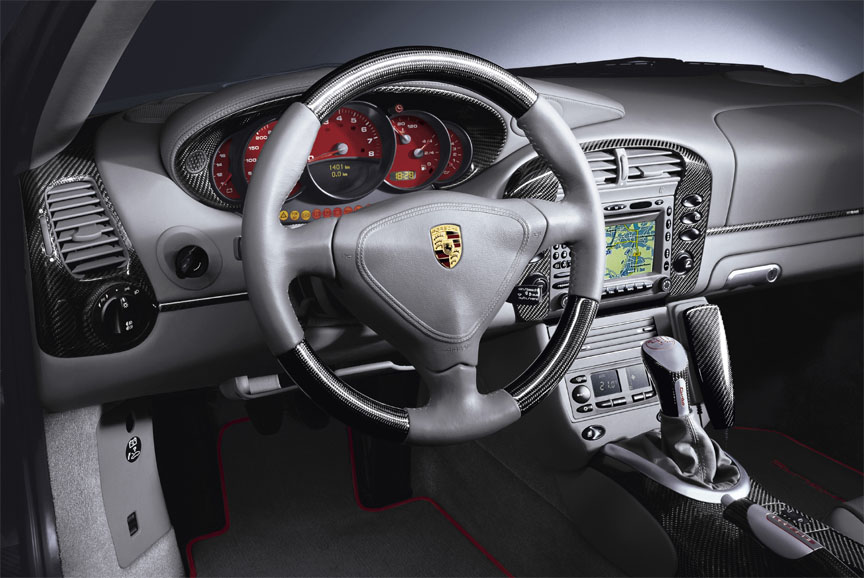
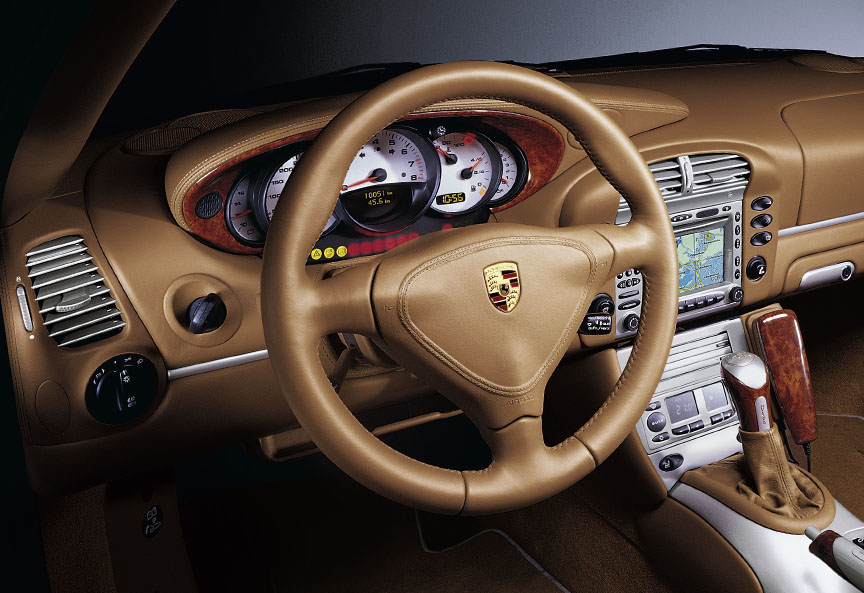
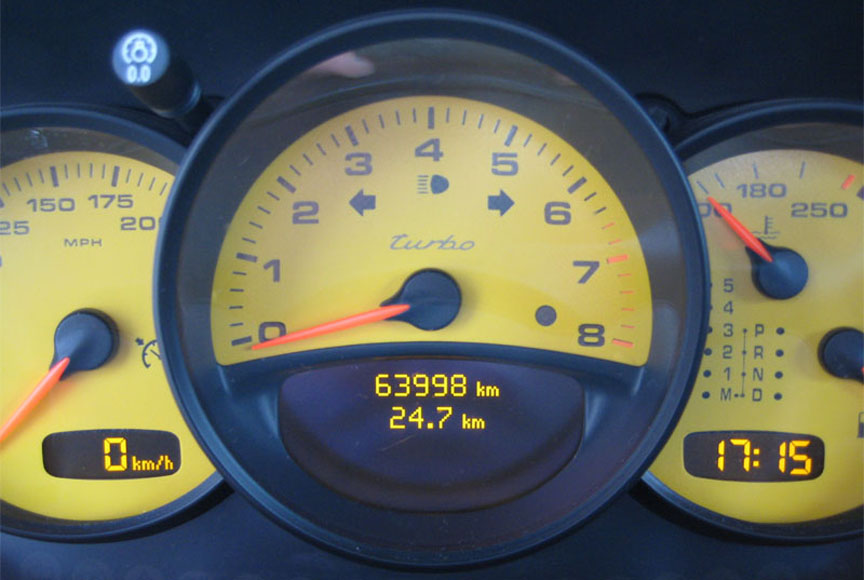
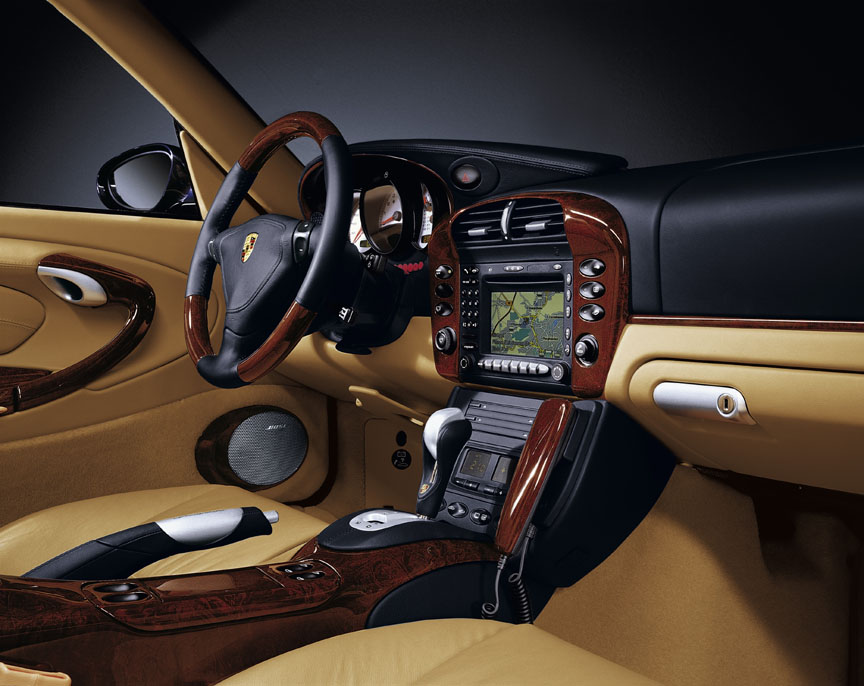
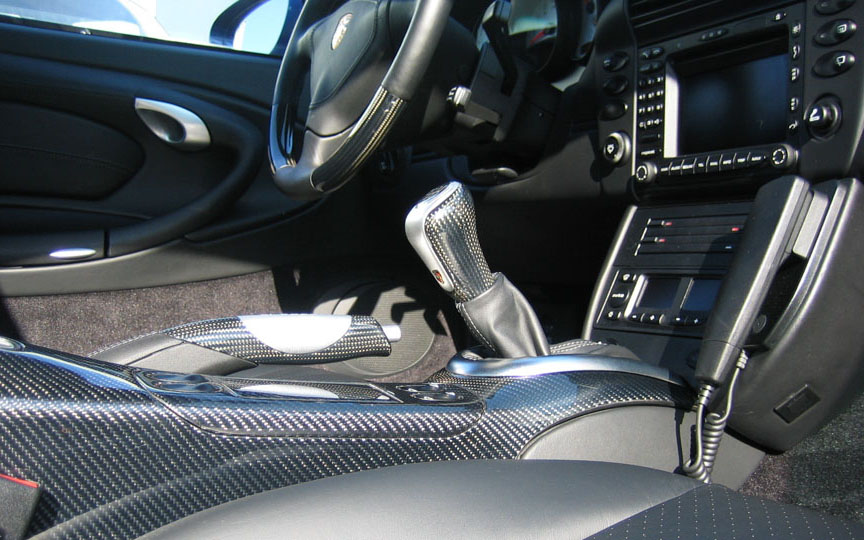
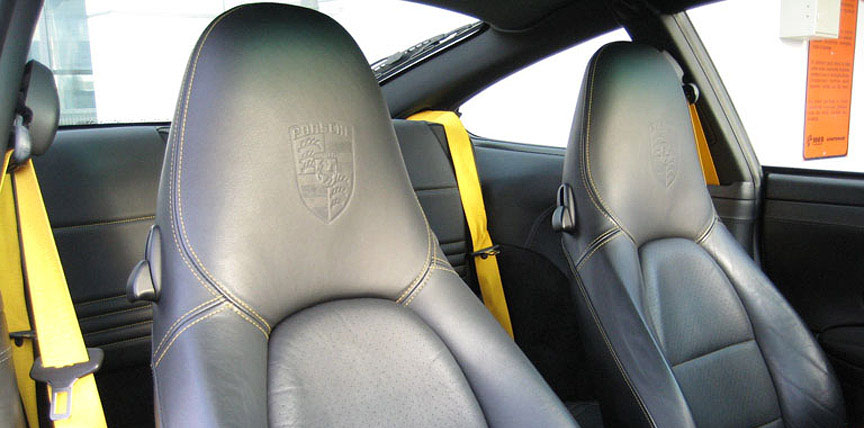
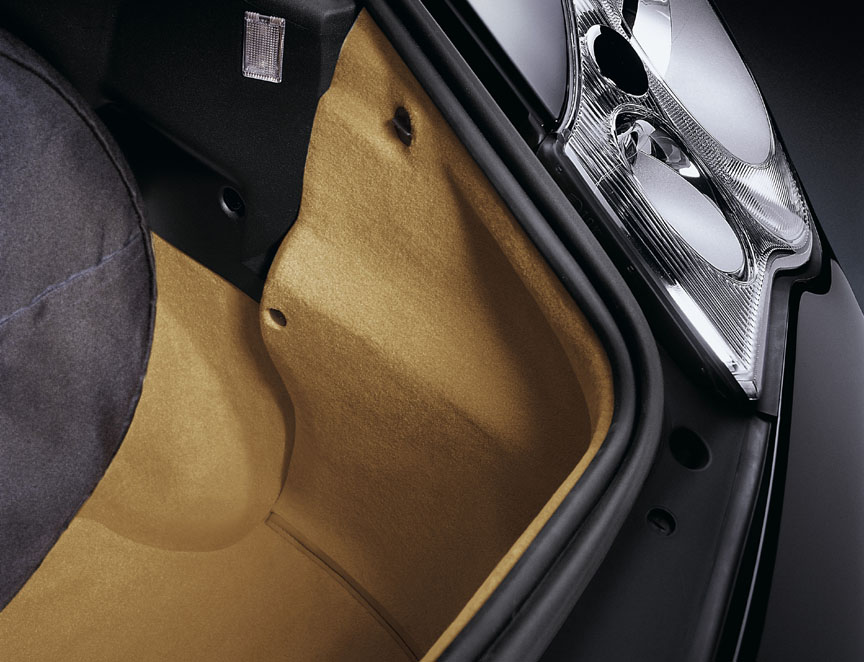
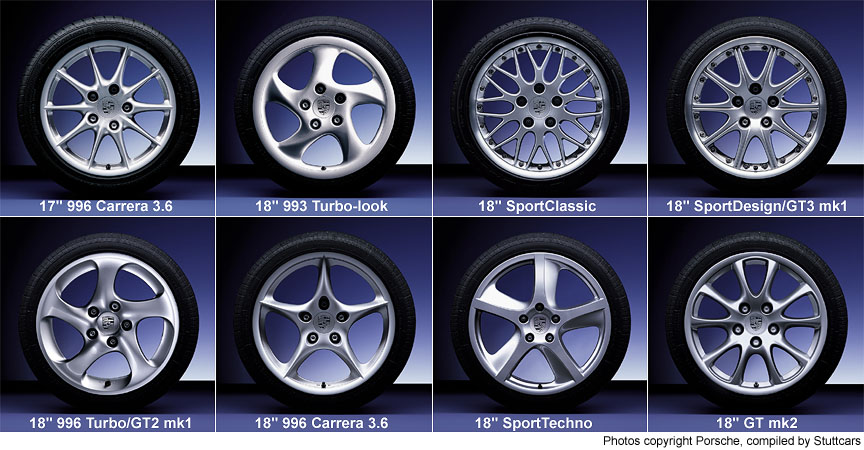
For the 2003 racing season the GT3 RS had more power again: 320 kW. The 2003 Daytona 24 hour race was won with the Racer’s Group 2003 996 GT3 RS after all of the new prototypes had broken down.
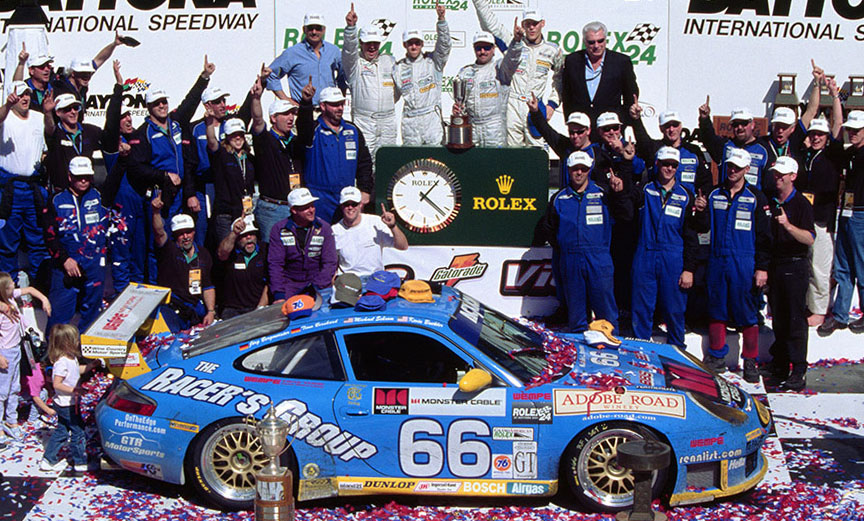
In December 2002 Porsche had announced the introdudction of the facelifted GT3 in March 2003. The engine revs were raised from 7800 to 8200/min and the engine developed 15 kW more (now 280 kW). The improvement of power was a result of reduction of moving masses in the engine. A further reason for the increase in output was the introduction of infinitely controlled intake camshaft management. To handle the increase in performance, the transmission was fitted with oil cooling and oil injectors as well as had some reinforcements. The 6-piston front brake calipers replaced the earlier 4-piston units. The front brake discs grew by 20 mm to 350 mm. New 4-channel ABS system was implemented. As new cars grow heavier, the GT3 mk2 is 30 kg/66 lb heavier than the mk1. The power-to-weight ratio is 4% better than before. Unlike the GT3 mark I, the mark II was sold also in the USA. Unfortunately, the Club Sport package – that makes a GT3 a GT3 – was banned by US Department of Transportation.
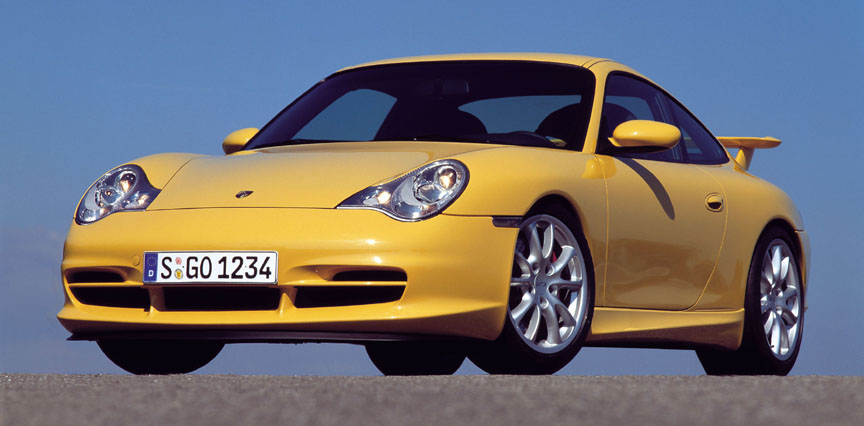
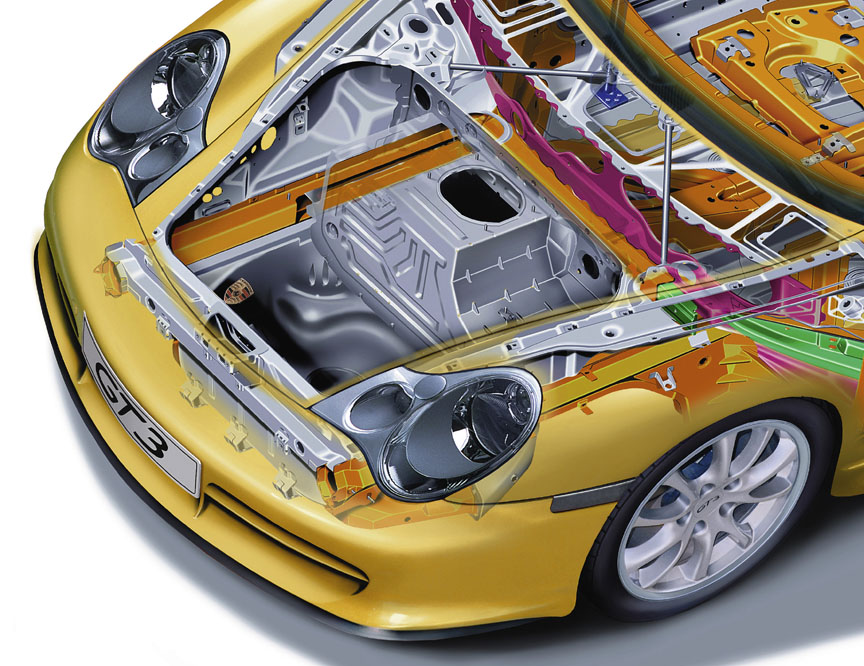
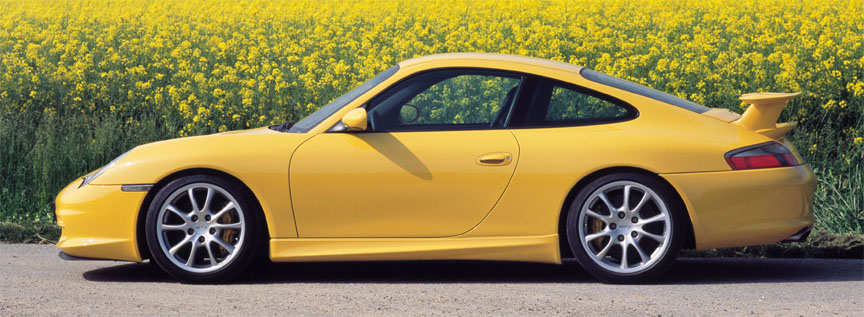
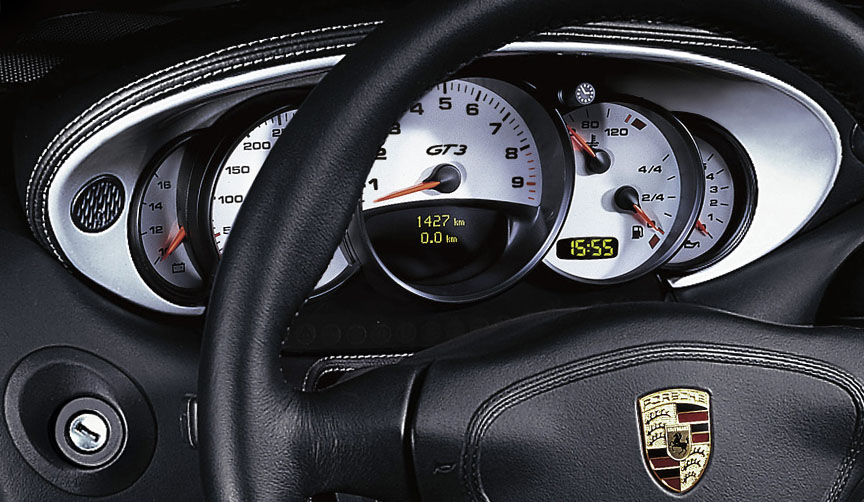
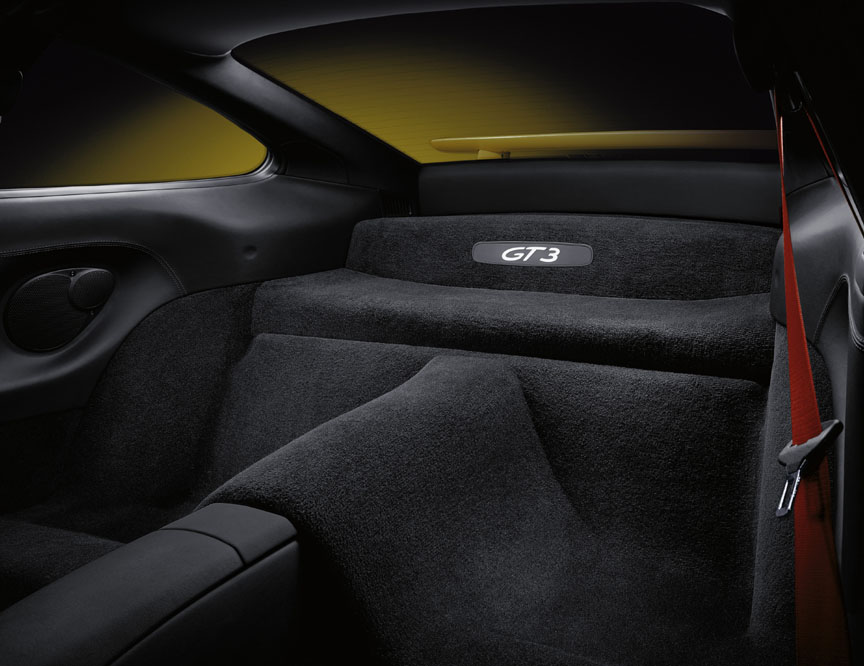
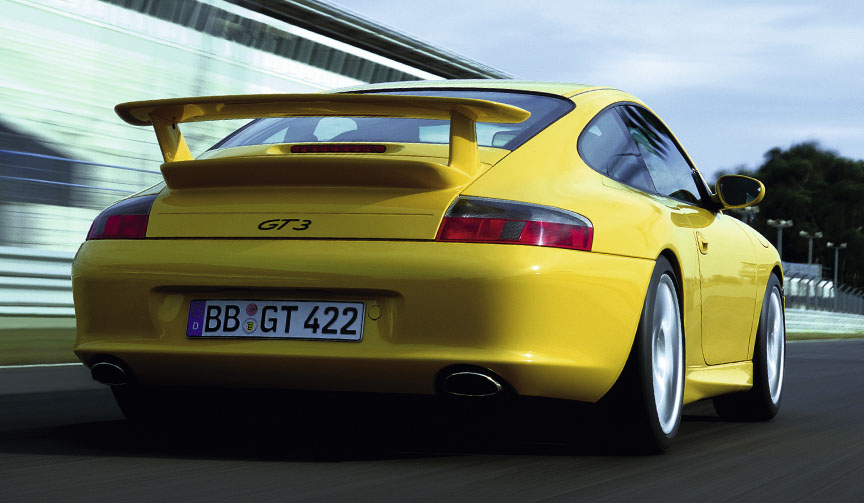
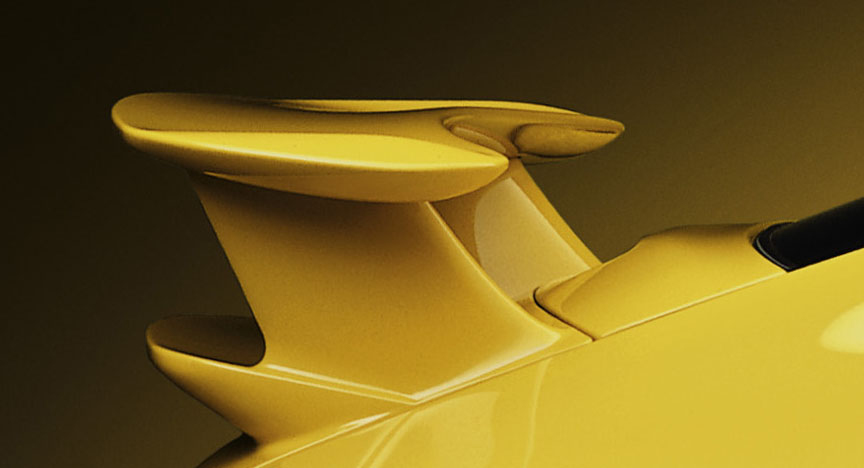
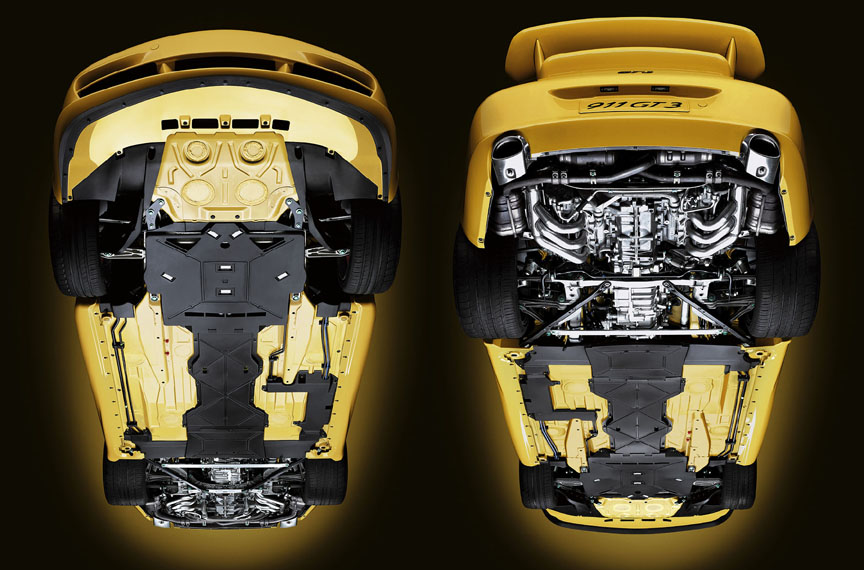
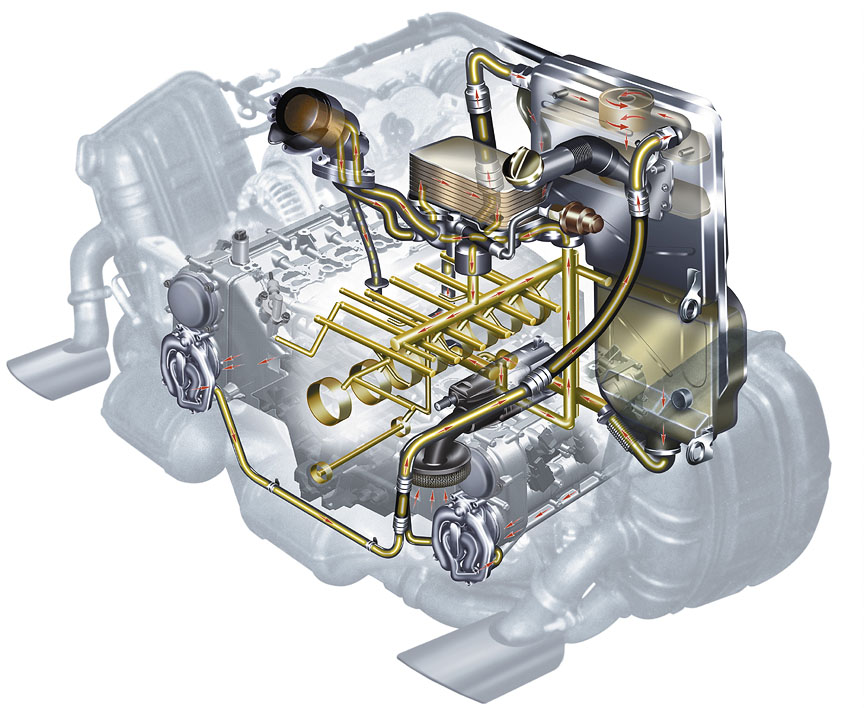
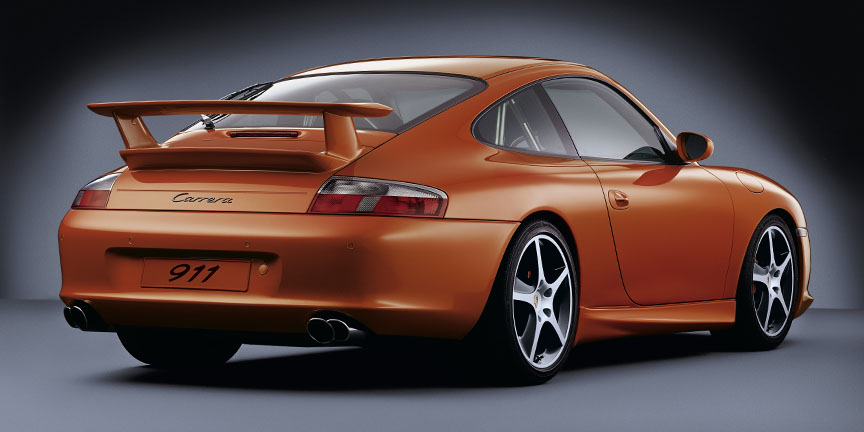
In 2003 the Carrera Cup series expanded like never before. In addition to the established championships (Germany, France and Japan), Carrera Cup Asia, Australia and Great Britain were launched. Now, together with the Supercup, 7 Porsche one-make series were run.
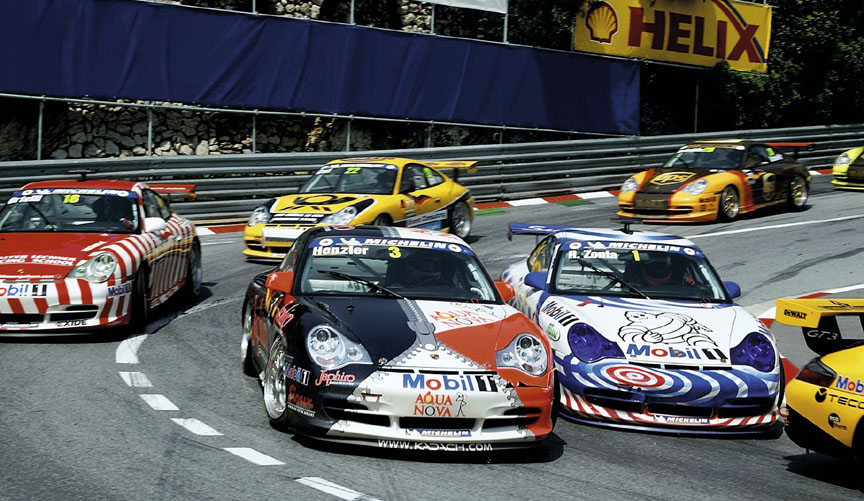
The 2003 Spa 24 hour race was won with the Freisinger Motorsport 2003 996 GT3 RS driven by Stéphane Ortelli/Marc Lieb/Romain Dumas.
On the occasion of 40 years of 911, a special version was presented in September 2003 at the IAA Frankfurt Motor Show. The car was based on the most classic 911, a version with coupé body, rear wheel drive, manual gearbox and limited slip differential. The engine had the 254 kW WLS powerkit. The cars were painted GT silver (a Carrera GT color), had shot-blast/polished wheels and front spoiler from the Carrera 4S. The rear lid read “911”, not “Carrera”. The interior was dark gray and parts of the interior were covered with special perforated leather. The plan was to make 1963 numbered cars, but less than 1600 were ordered.
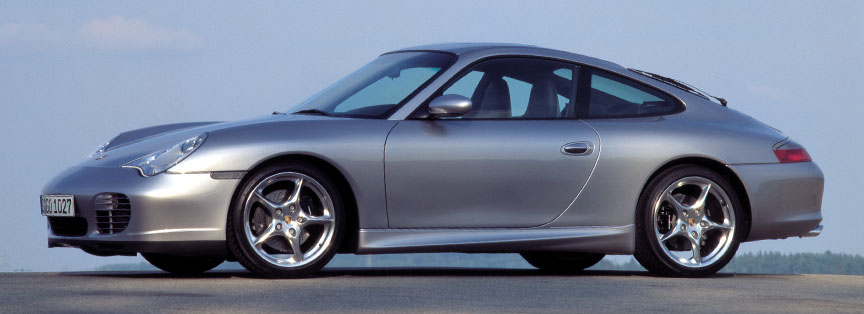
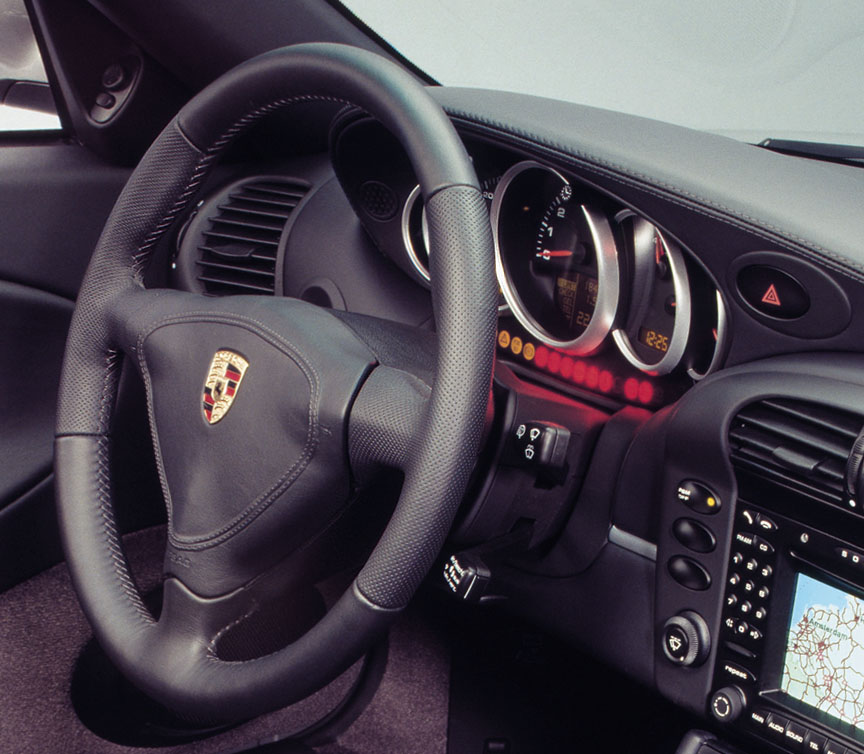
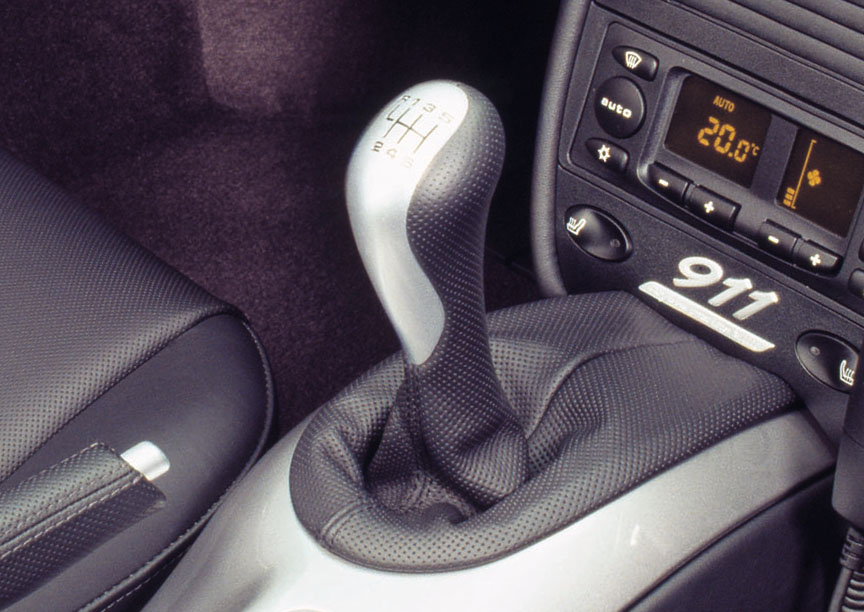
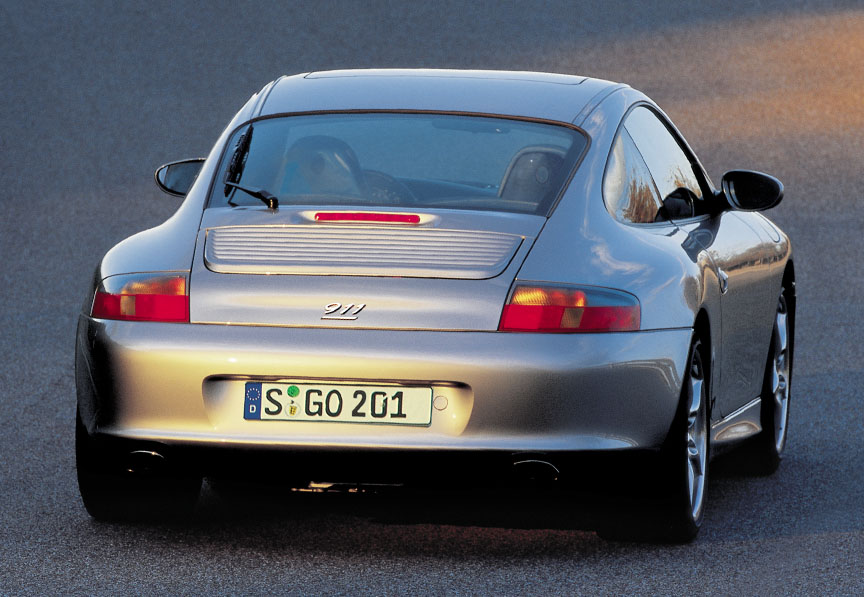
Announced already in May 2003, the Carrera 4S Cabriolet hit the roads in October. In November it was chosen as the world’s most beautiful open sports car. This was the verdict of an international jury consisting of 17 independent artists, architects, art historians and designers. The jury voted the Porsche into first place in the “Convertible, roadster and convertible coupe” category. The jury members looked at 50 new models from 20 brands, competing in 8 categories. The journalist and publisher Bruno Alfieri, who created the “World’s Most Beautiful Automobile” award in 1993, said: “As far as I know we are the first committee that deliberately assesses only the car’s beauty! For this reason none of the members are car journalists, who would be tempted to assess quite different, usually technical, aspects of the cars”.
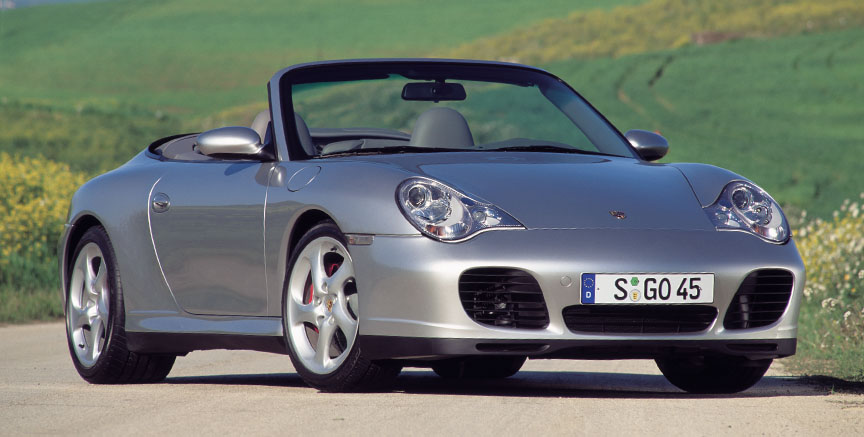
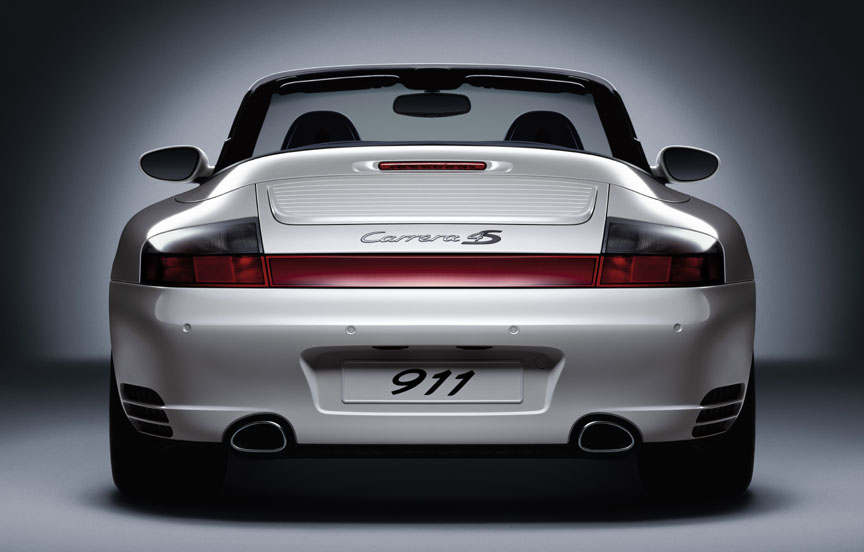
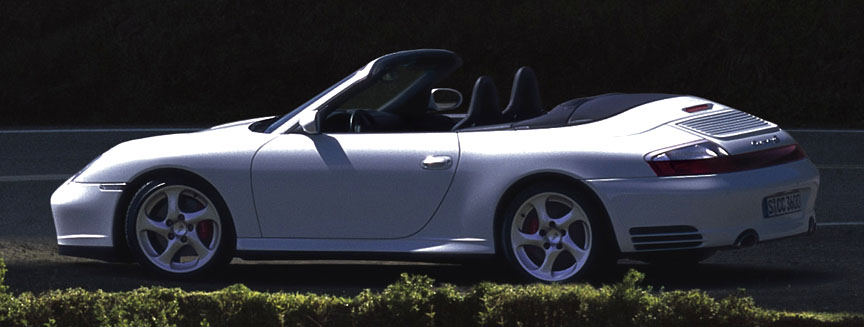
Another version was announced in July, presented in September in Frankfurt and launched in October 2003 – the 911 GT3 RS street version. It was not based on the 996 GT3 RS racing car as the name suggests, but on the GT3 ClubSport. The engine power was unchanged at 280 kW, but an air collector on the engine lid uses pressure build-up to supply extra intake air to the engine at high speeds. The GT3 RS with its standard roll cage is 50 kg/110 lb lighter than the mk2 GT3 with rollcage. The weight was saved with ceramic brakes (-18 kg/40 lb), carbon-fibre front lid and rear spoiler, polycarbonate rear window, with the use of 996.1 dashboard (-5 kg/11 lb, thanks to no glove compartment), single mass flywheel (instead of the smoother but heavier double-mass version). The weight of the 996 GT3 RS is 1360 kg/2998 lb with full tank of fuel. Because roll cages were not allowed in the USA, the GT3 RS was not imported by PCNA and therefore no sold in the USA and Canada.
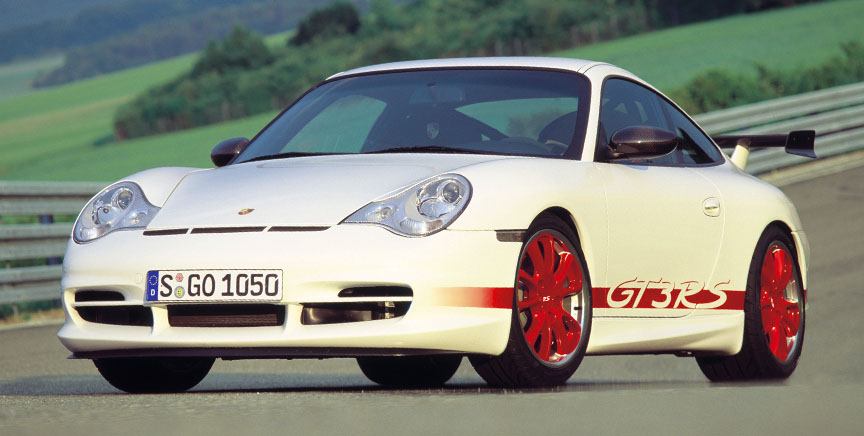
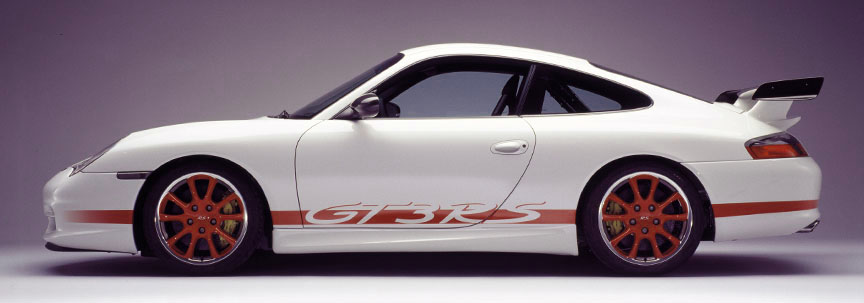
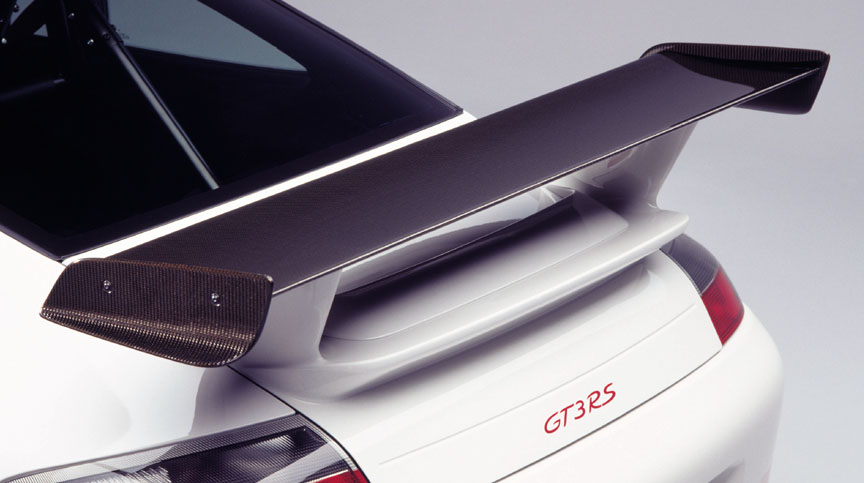
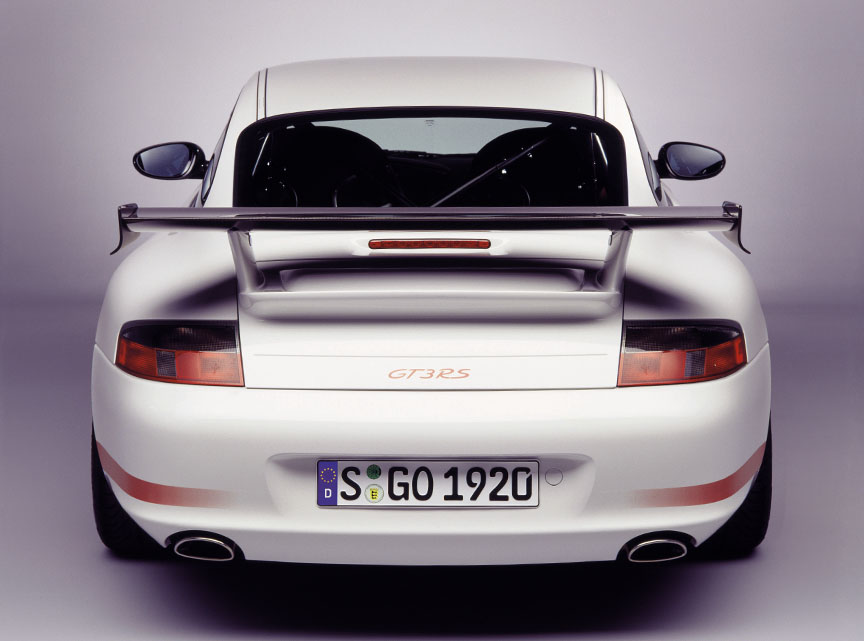
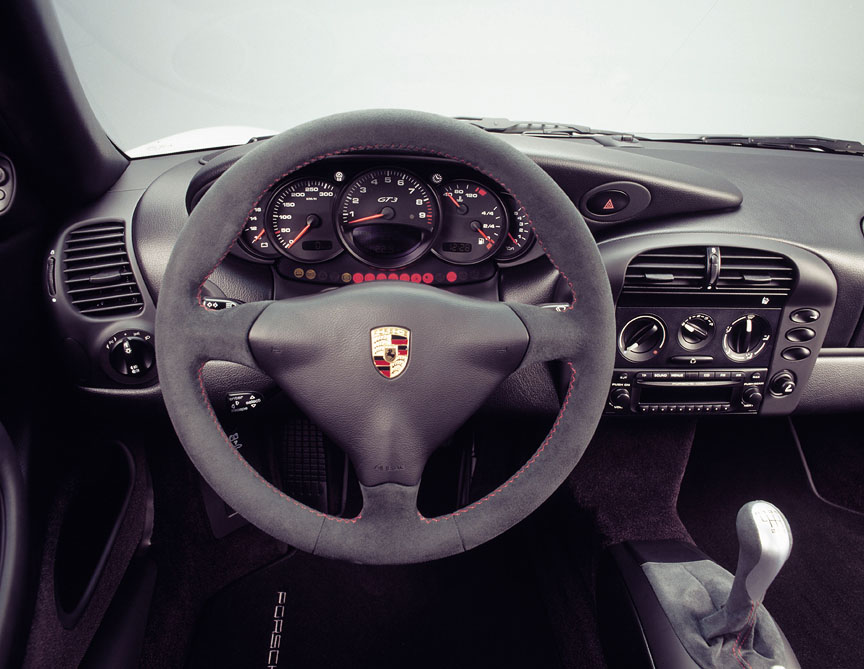
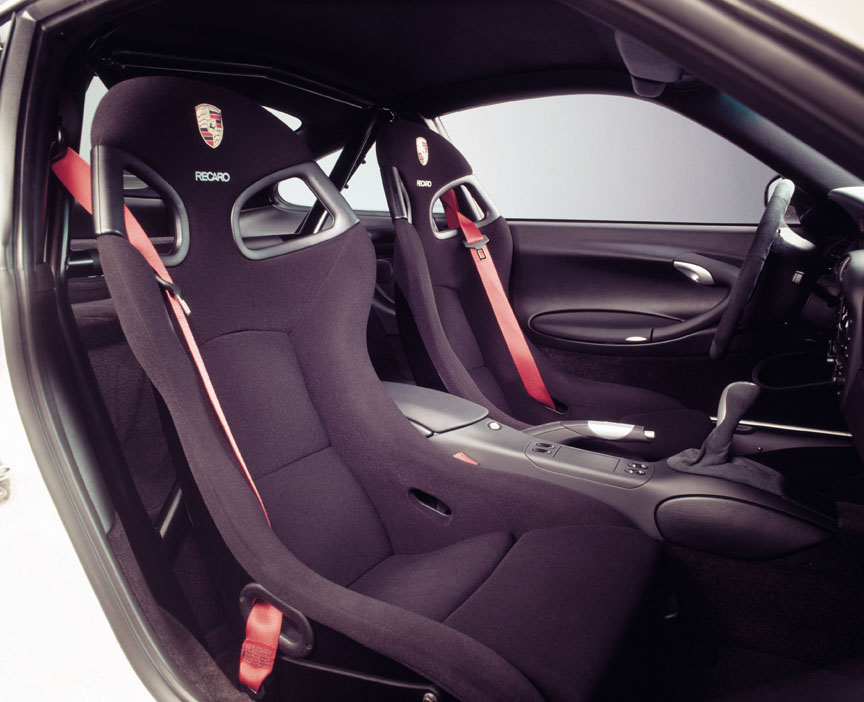
At the 2003 Frankfurt Motor Show the 40th jubilee of the 911 was celebrated. In addition to the 911 “40 years” edition, GT3 RS, Carrera 4S Cabriolet, the Turbo Cabriolet were introduced.
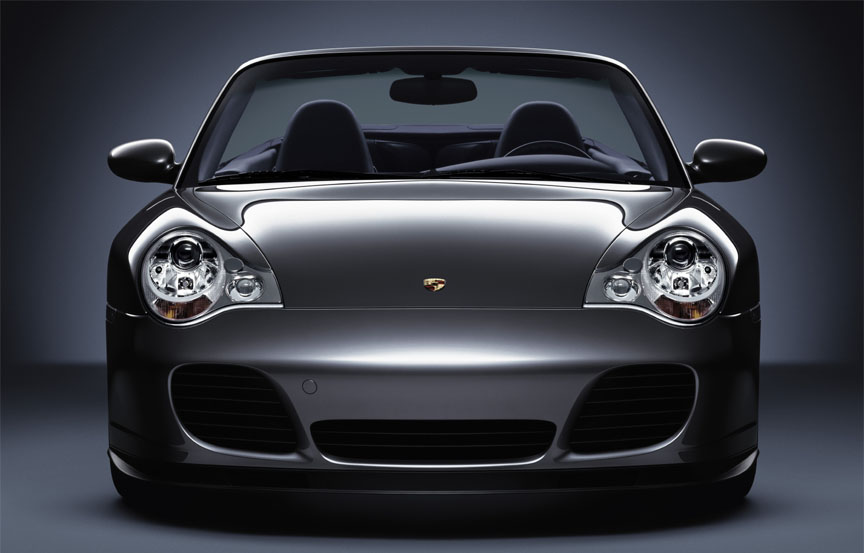
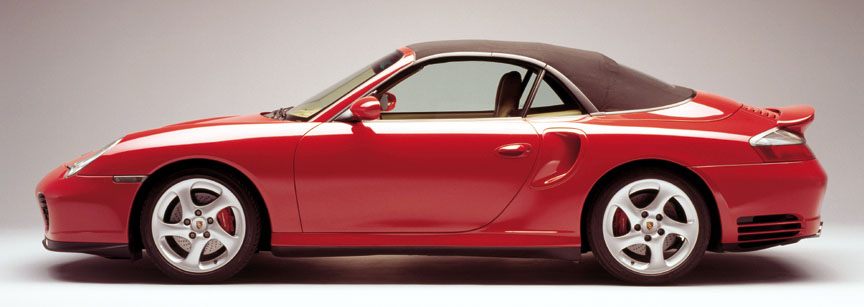
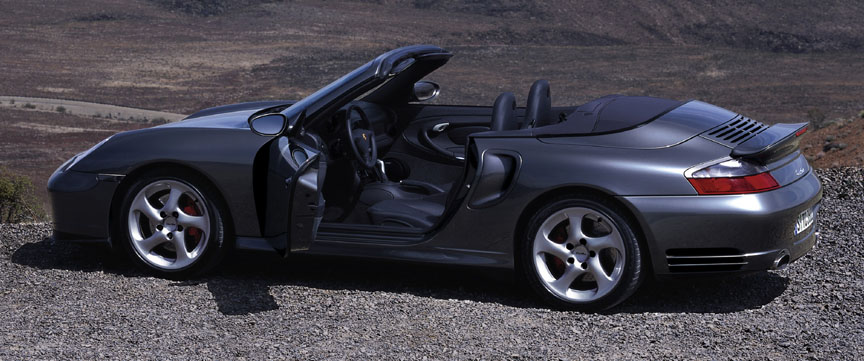
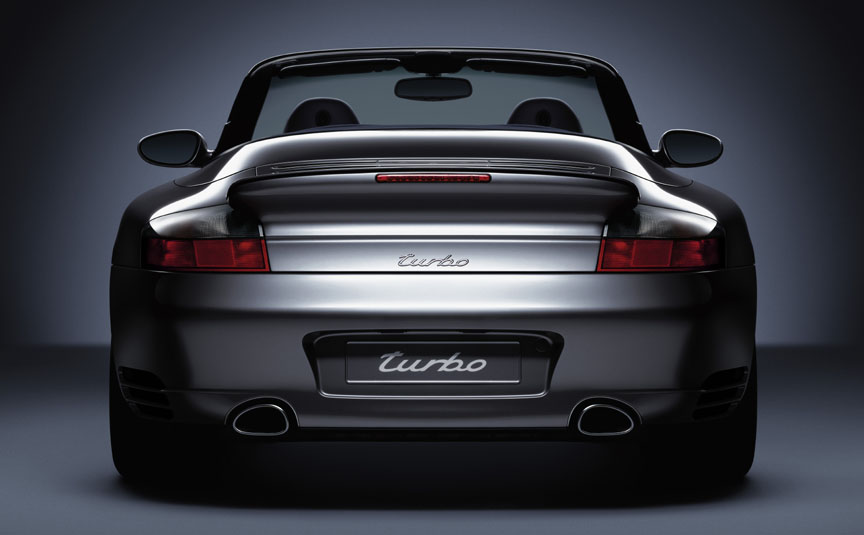
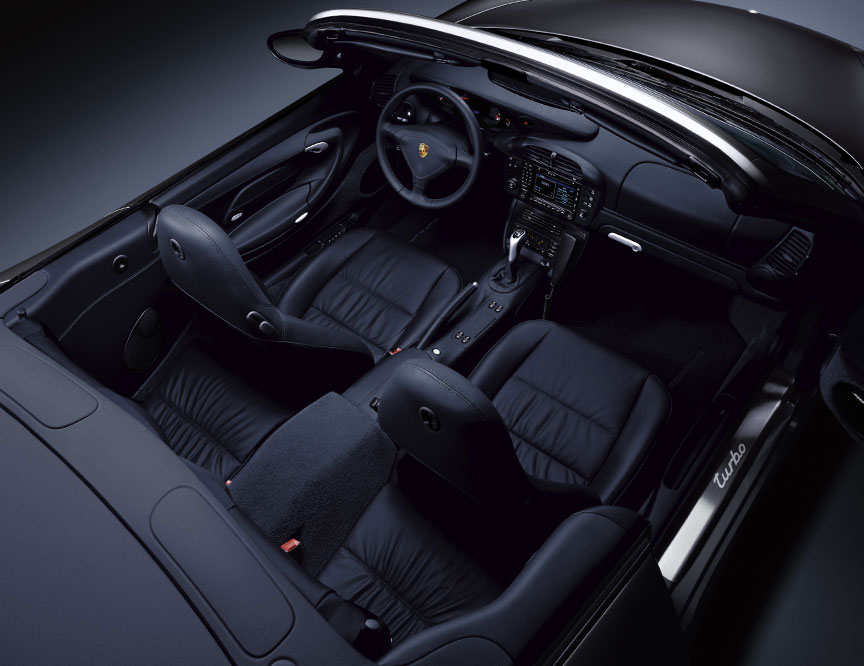
In the end of 2003, as a 2004 model, the GT2 got more torque and power (355 kW) thanks to chip tuning. This meant the car now accelerated to 62 mph/100 km in 4.0 seconds. The competition for the world’s fastest 0-100 km/h production car came within the company – the Carrera GT could accelerate 0.1 seconds quicker. The springs and shocks were modified. Like on the Turbo and the GT3, the ABS was updated from 2- to 4-channel system (each wheel controlled individually). The benefits are faster and more sensitive response in controlling the ABS function. Visually the GT2 got new wheels (8.5″ front and 12″ rear like before, but in the 996 GT3 mk2 design) and optional carbon fibre parts.
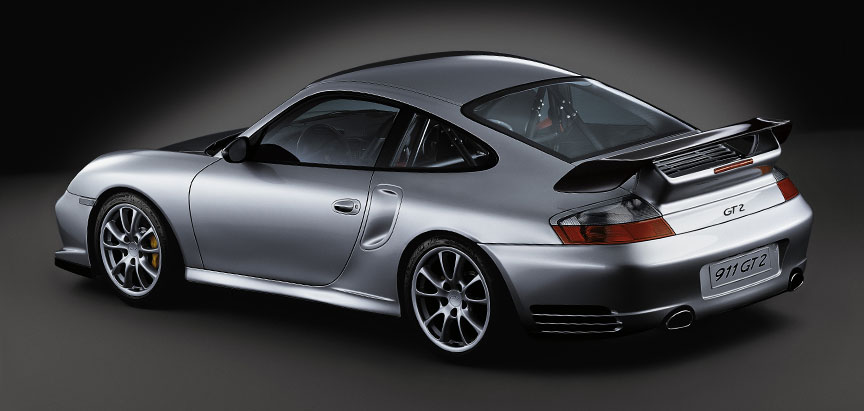
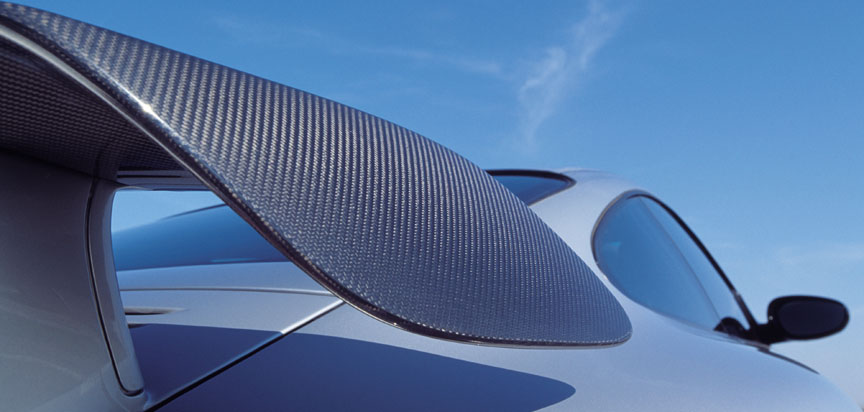
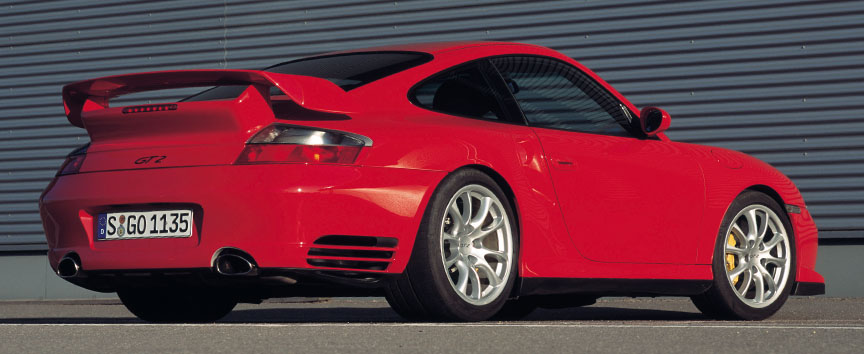
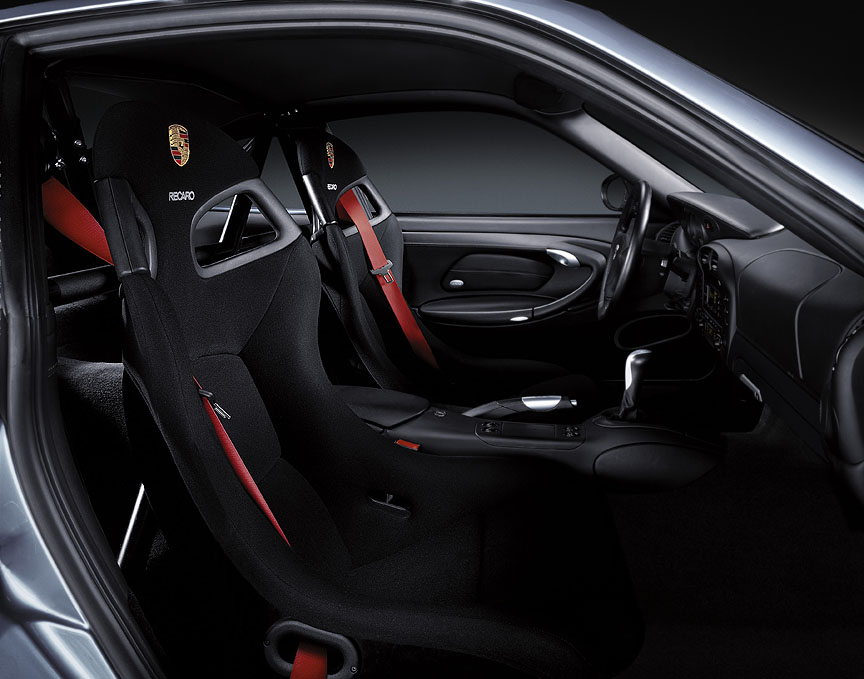
The 2003 Supercup and Carrera Cup Germany were won by Frank Stippler, the Carrera Cup France again by Sébastien Dumez, the Carrera Cup Japan by Masayuki Yamamoto, the Carrera Cup Asia by Charles Kwan, CC Australia by Jim Richards and CC GB by Barry Horne.
The modifications for the 2004 Cup car included the roll cage and integration of the Head and Neck Support System (HANS), which helps prevent head and neck injuries. With this, the GT3 Cup met the new FIA safety requirements. New for 2004 was an intake air shrouding on the engine, which prevented some of the hot air from around the engine from entering the air filter. The rear rear lid, rear bumper and doors were made of CFRP (carbon fibre reinforced plastic). Because of the 25 litres larger fuel tank (now 89 L) car weight with fuel was 1160 kg/2557 lb. With the exception of the roll cage, older car could be modified to 2004 spec. The price of the GT3 Cup car was similar to the GT3 street car.
For the 2004 season, a new car was created by Porsche Motorsport, the 911 GT3 RSR. First cars were delivered already in December 2003. The RSR replaced the GT3 RS racing car. Engine was still the normally aspirated 3.6-litre heavy duty unit. New pistons, rods and valve gear resulted in a moderate power increase to 327 kW @ 8250 rpm. This much of power from a 3.6-litre engine without turbocharging is really an engineering feat. The engine screams up to 8500 rpm. A characteristic feature of the RSR is its air inlet which generates ram pressure. For the first time, a sequential gearbox is installed. The 6-speed gearbox with ignition cut ensures quick gearshifts at full throttle and offers protection against mistakes in gearchange. Carbon Kevlar components include front spoiler, front lid, front fenders, doors, rear fender extensions, rear lid and spoiler. The RSR weighs 1100 kg/2425 lb in FIA spec and 1115 kg/2458 lb in ACO spec (Le Mans 24h/LMS/ALMS).
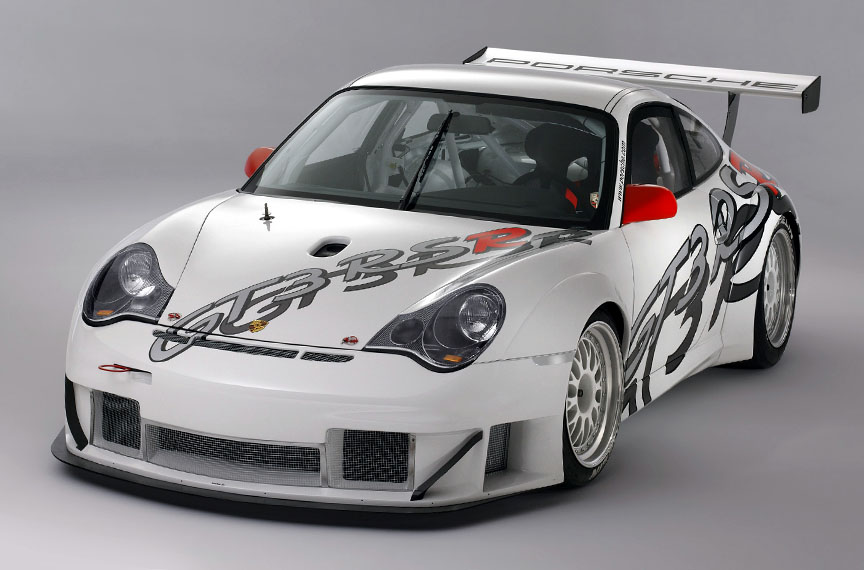
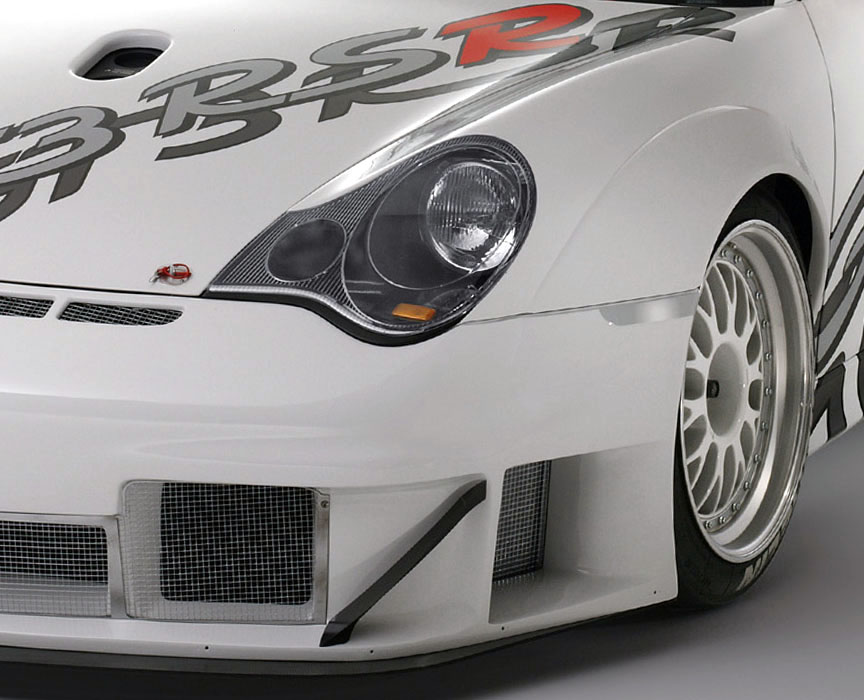
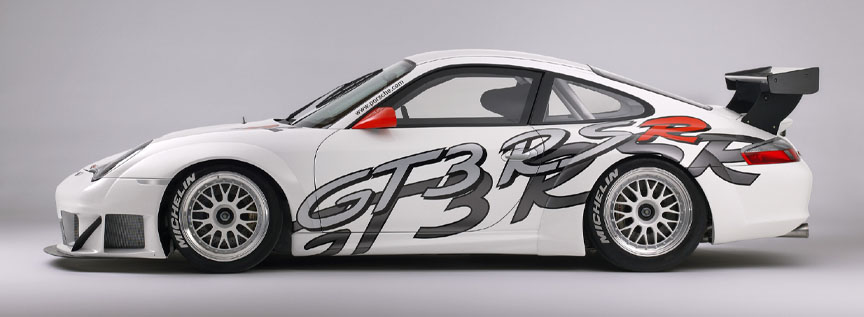
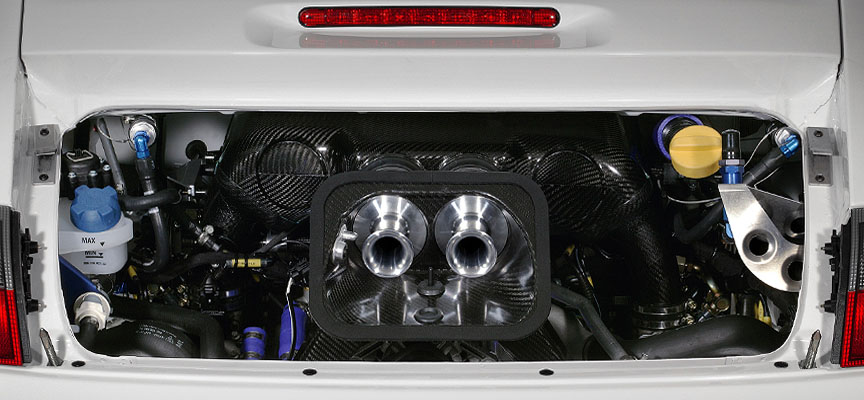
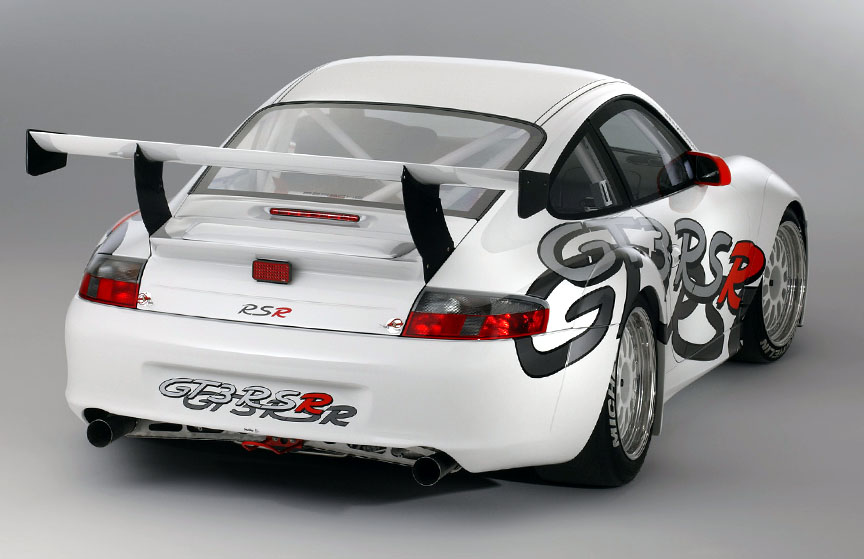
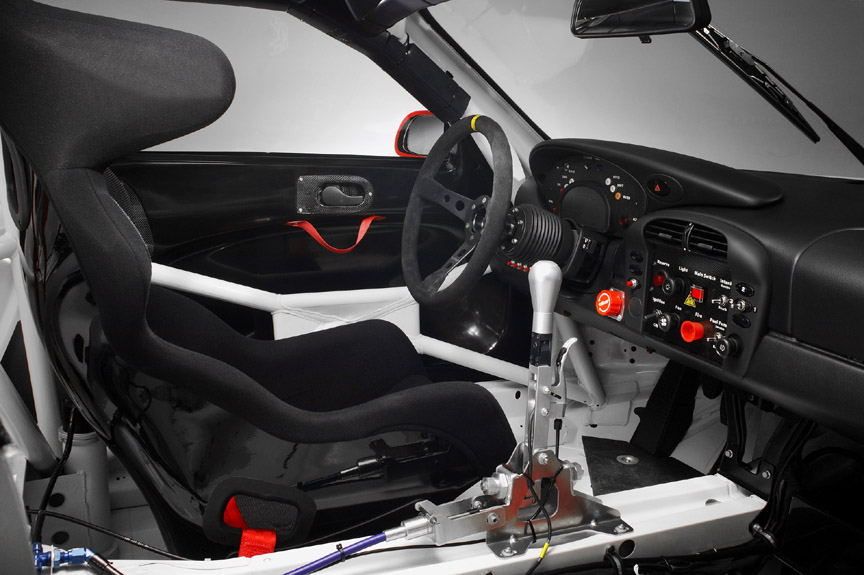
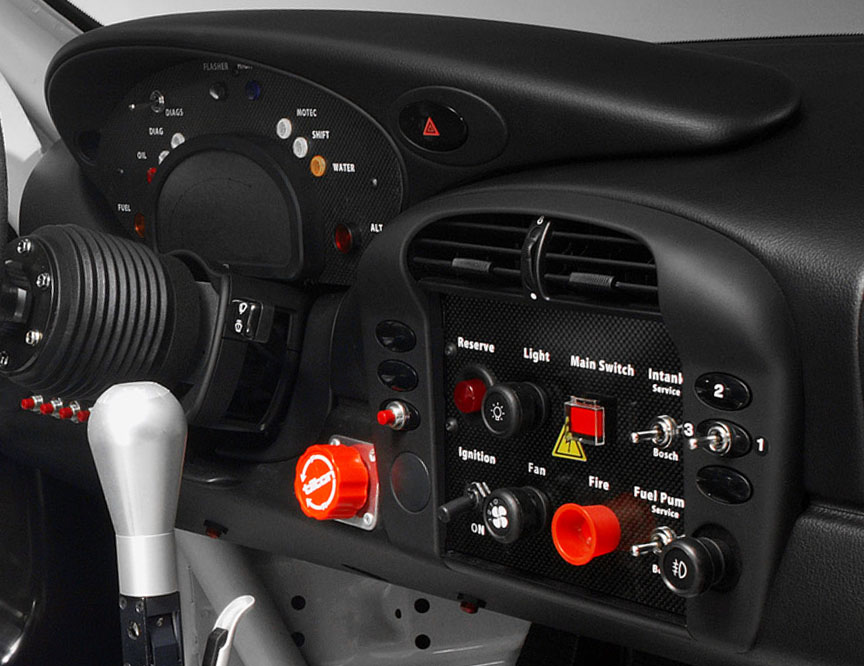
The 2004 Supercup was won by Wolf Henzler (runner-up from last year), the Carrera Cup Germany by Mike Rockenfeller, CC France by James Ruffier, CC Japan by Masayuki Yamamoto (again), CC Asia by Matthew Marsh, CC Australia by Alex Davison and CC GB by Richard Westbrook. In 2004 Carrera Cup Scandinavia was started (a Swedish series with a few Finnish drivers) and was won by Robin Rudholm.
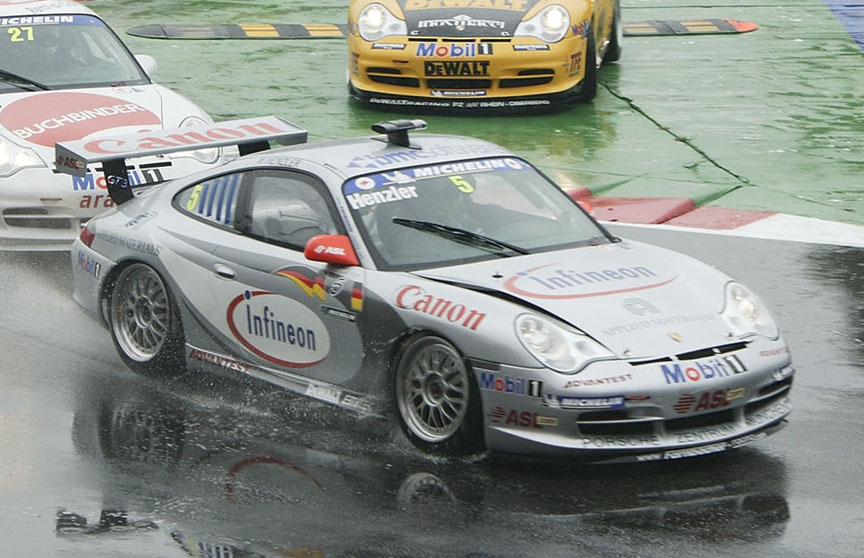
The last 996 version, the Turbo S, was launched in August 2004 as a 2005 model. At the same time the 997-generation Carrera was already launched. The unique feature to the Turbo S was its optional leather interior in the style seen on the 911 Carrera “40 years”-edition. The rest of the Turbo S equipment, including the X50 WLS powerkit, were from the regular Turbo’s option list.
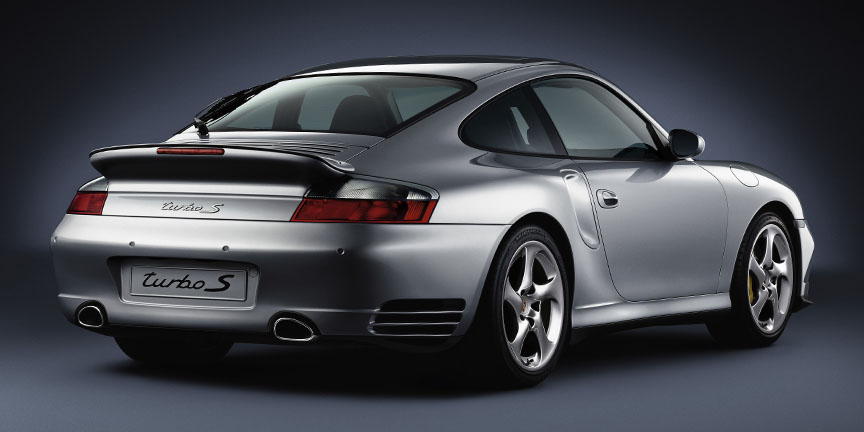
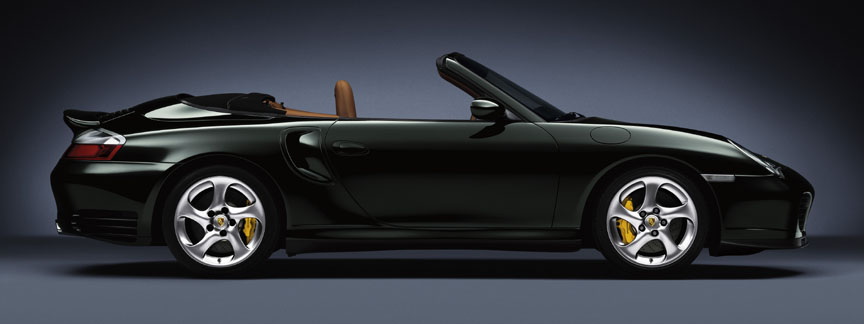
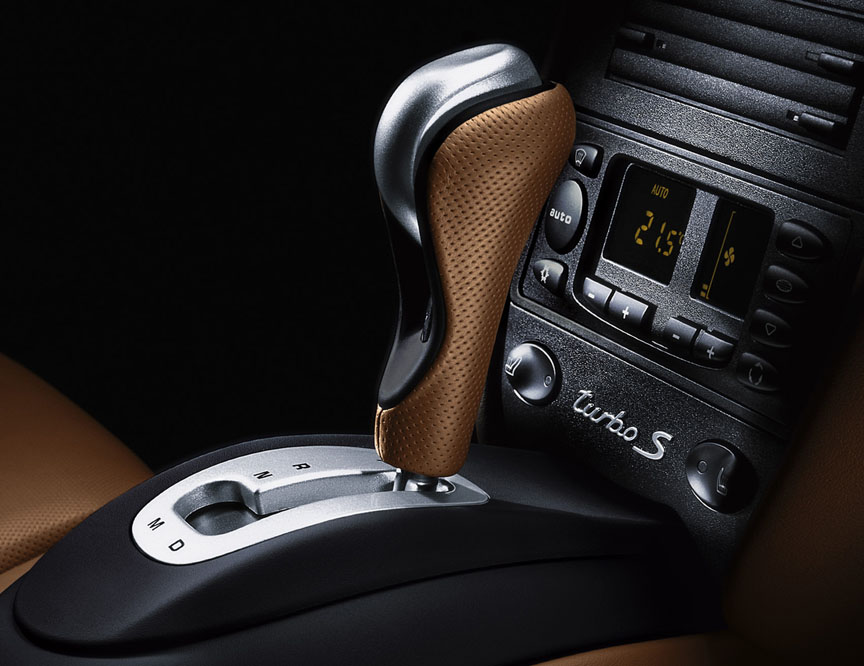
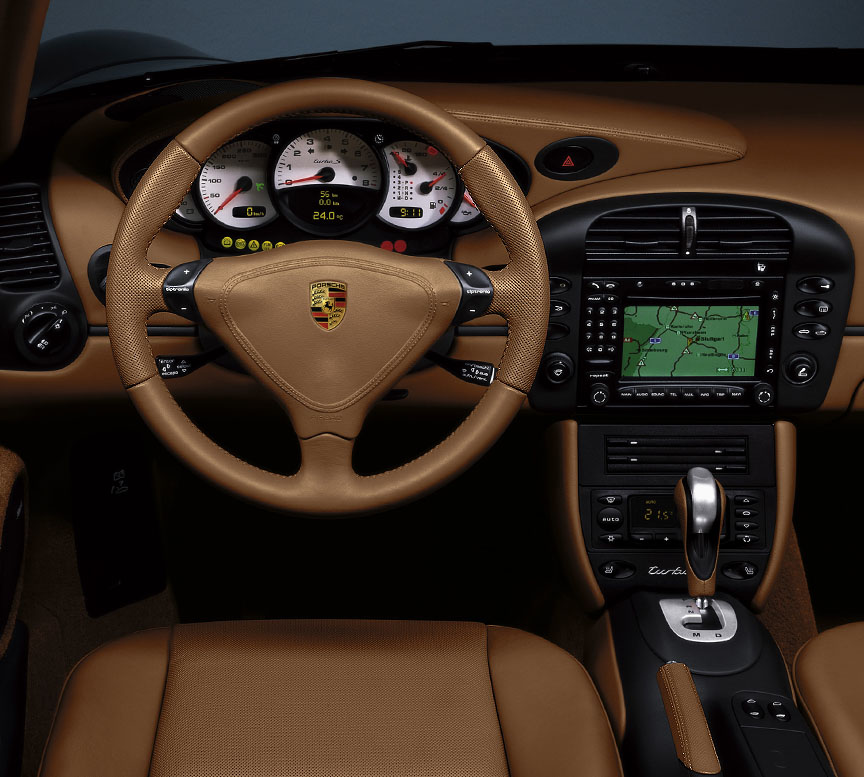
In 2005 the Porsche Supercup was already ran with 997 Cup cars, but Carrera Cups were still ran with 996. The 2005 season saw the following winners: Carrera Cup Germany by Christian Menzel (runner-up from 2004 Supercup), CC France by Anthony Beltoise (runner-up from 2004), CC Japan by Isao Ihashi, CC Asia by Jonathan Cocker, Australian CC by Fabian Coulthard, CC GB by Damien Faulkner and CC Scandinavia by Fredrik Ros (last year’s runner-up).
Approximately 175.000 996-generation 911 were made. In short: the GT3, Turbo and GT2 are strong cars, but Carrera engines are not durable. Steel brakes are a magnitude cheaper to live with than PCCB and manual gearbox offers more in terms of durability, performance and emotions than the automatic. The best power-to-weight ratio is naturally on the racing GT3 RSR. The best among street legal cars in terms of power-to-weight ratio is the GT2 mk2 non-CS version and the worst is the Carrera 4S Cabriolet with Tiptronic.
In 2005, as a marketing piece for the 2006 “Cars” animation film, a 996 Carrera 3.6 was rebuilt as a “Sally Carrera”. Its wheelbase was shortened, the doors were shortened and a piece was also cut away between the door and the rear wheel arch. The roof was made higher. The cartoon-looking car remained fully functional.
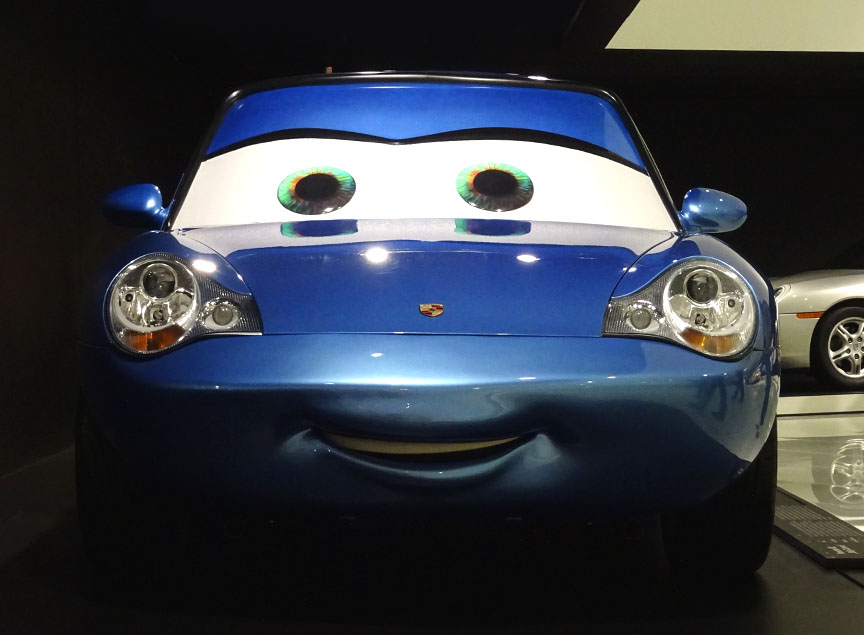
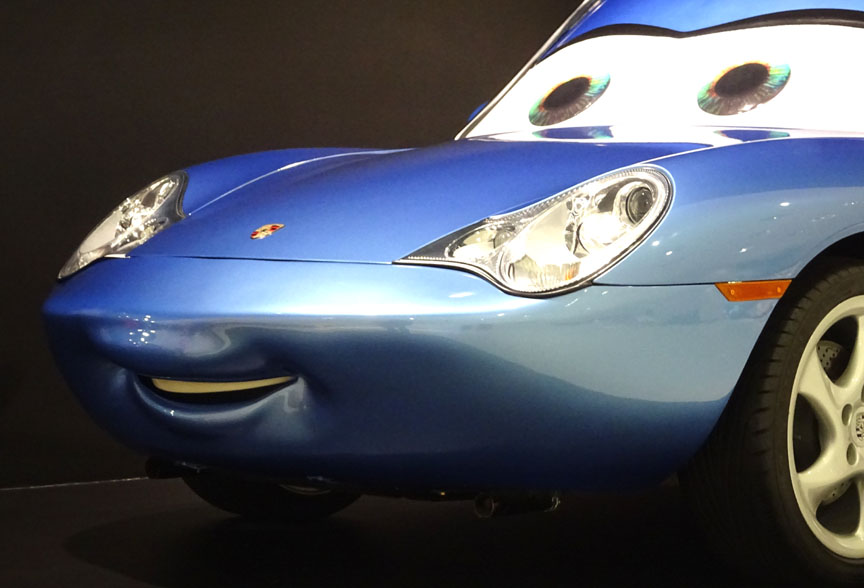
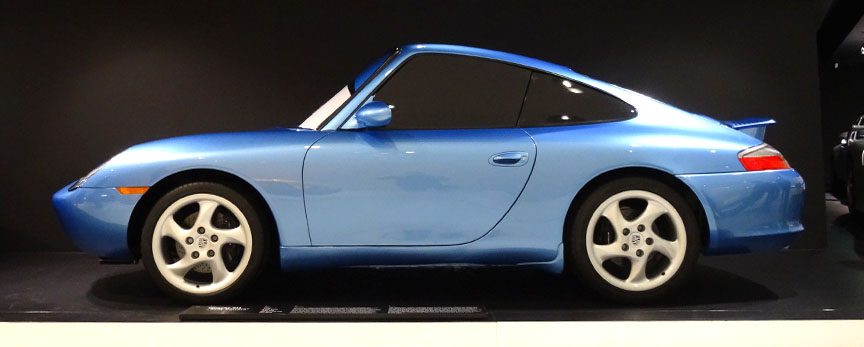
Although the 997-generation 911 was in production, some 996 racing cars still brought in some good results.
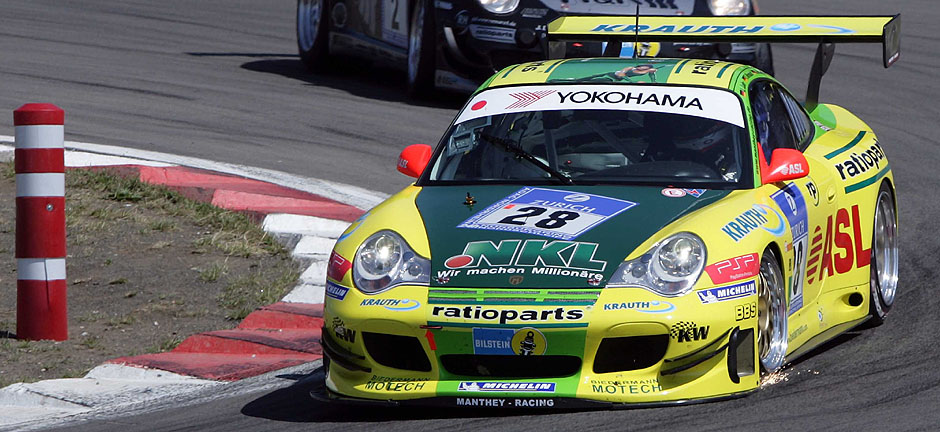
The last motorsport success for the 996 came in the hands of Olaf Dobberkau (co-driver Alexandra König), who piloted his rally-prepared GT3 to AvD-Sachsen-Rallye overall victory in 2009 and 2010. Another proof, a rear-engined car has so much grip it does not need the drive power on the front axle. There were two rally championships in Germany, the stronger Deutsche Rallye-Meisterschaft (DRM) and the Deutsche Rallye Serie (DRS). AvD-Sachsen-Rallye was the only rally that was part of both of them. In addition to double Sachsen-Rally victories, Dobberkau/König also won the 2009 ADAC Eifel-Rallye, part of DRM, as well as the overall 2010 DRS championship. For hair-rising videos search YouTube for “Dobberkau”.
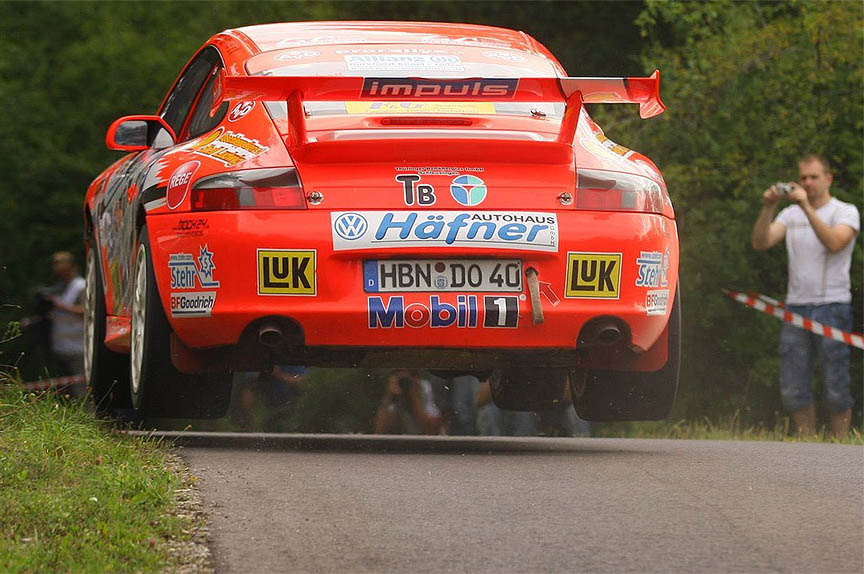
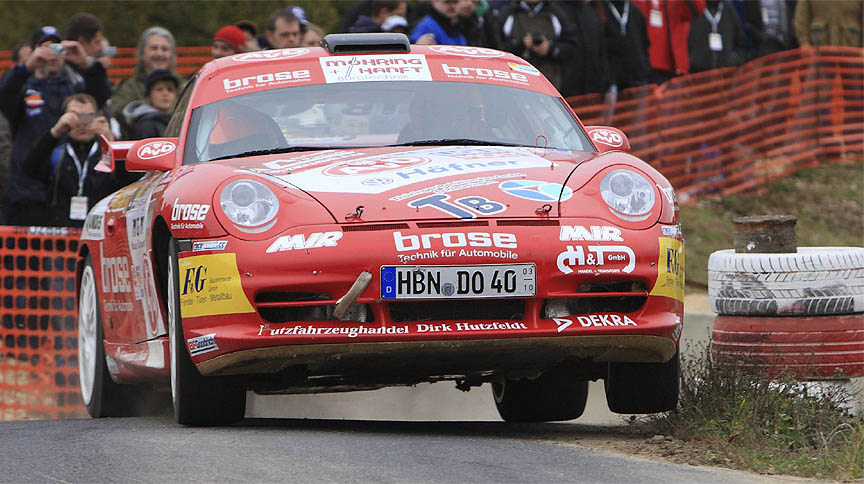


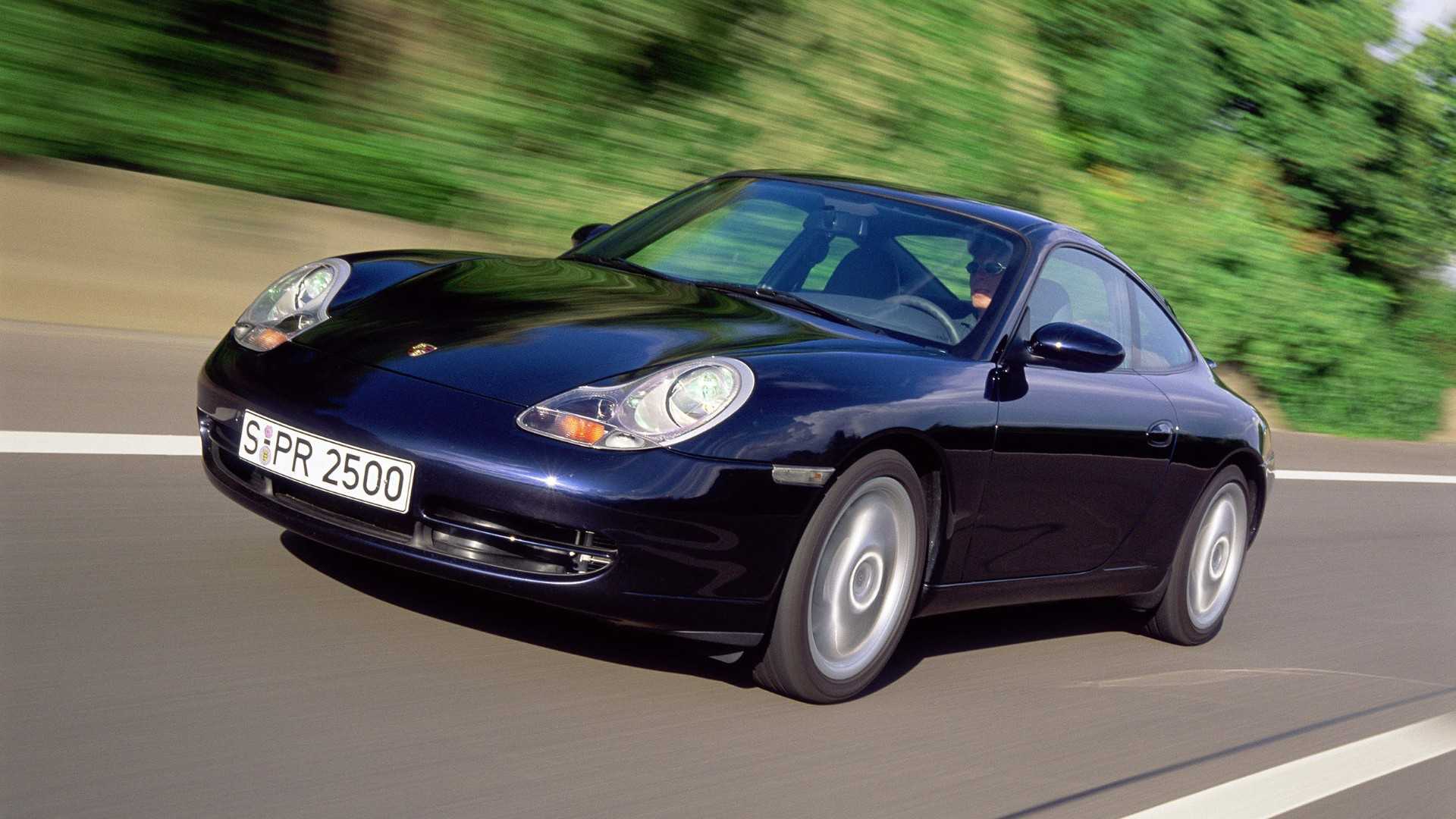









Thank you for finally acknowledging the 996 growing pains at the beginning, e.g. the headlights. So many bemoan a great car, but don’t realize how bad of shape financially Porsche was at that time and the headlights a compromise. Had the 996 not been so successful, the could complain about not having a 911 at all or one made by Toyota!
I love my 2003 C4S ant it’s 103,000+ miles on it. How ‘great’ is that!?
0